

Why Visit Argentina? 15 Reasons to Travel to Amazing Argentina in 2024
Why visit Argentina? I’m here to tell you why! These 15 reasons should be enough to convince you that Argentina is one of the most amazing countries in the world – and very much worth visiting.
With so many incredible destinations in the world just begging you to visit them, it can be hard to decide where to go next. I know that my own list of must-visit destinations is longer than my arm!
But if you’re looking for a country with diverse landscapes, vibrant culture, moreish food and warm hospitality, then Argentina should be at the top of your list.
Located at the bottom of South America, it’s a long journey to get here – but it’s so worth it.
Trust me when I say that visiting Argentina should be a priority. I lived in Buenos Aires, the capital of Argentina, for two years and fell in love with the country. During that time, I travelled all around the country, ate so much food and was awed by its beauty.
So, if you still need some convincing that Argentina is the place for you, here are 15 reasons why you should make Argentina your next travel destination.
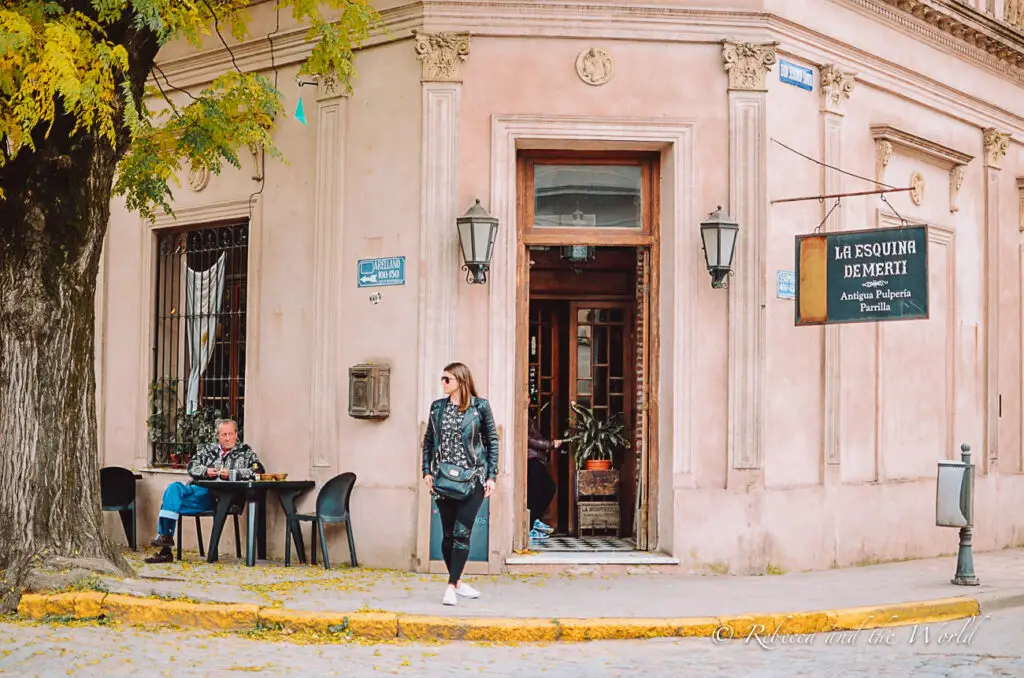
This blog post may contain affiliate links, meaning if you book or buy something through one of these links, I may earn a small commission (at no extra cost to you).
What's in this article (Click to view)
1 . The capital city
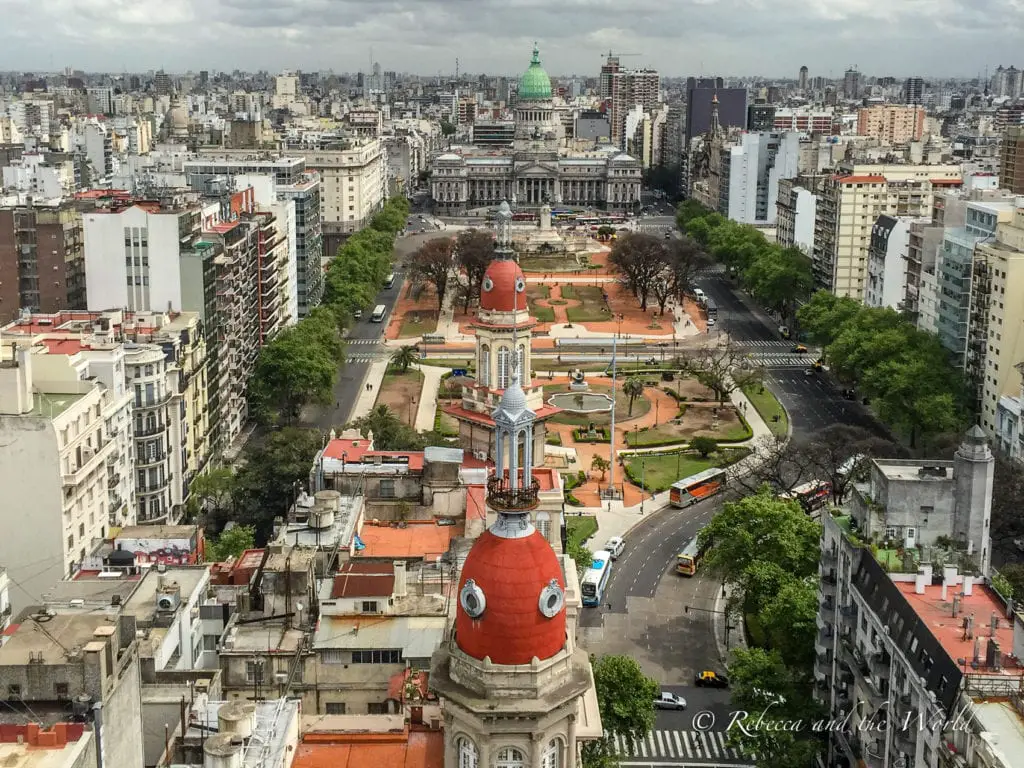
Buenos Aires, the capital of Argentina, is a city that pulsates with life. The city blends European elegance and Latin American passion – and most people fall in love with it. I did!
It’s a must-visit destination when you travel to Argentina. Not just because it’s where most flights land, but because this city is worthy of several days on your Argentina itinerary .
This “Paris of South America” (although Argentines hate it called that), known for its stunning architecture, diverse neighbourhoods, sweeping boulevards and beautiful parks, has a charm (and, yes, a grittiness) that’s all its own.
From the colourful, bohemian streets of La Boca and the antique markets of San Telmo, to the chic boutiques and hip cafes in Palermo, Buenos Aires will get under your skin.
It’s here you can taste your first bites of Argentina’s famous cuisine (more on that later) or sip Malbec or Torrontés.
Wander the streets and step inside grand buildings like the Teatro Colon , the Palacio Barolo or El Ateneo bookstore (the world’s most beautiful bookstore).
If you’re a night owl, then spend the evening in a tango bar or dance until the wee hours in one of Buenos Aires’ boliches (nightclubs).
Buenos Aires is undoubtedly one of the world’s best cities to visit and a great way to kick off a visit to Argentina.
- How to spend 3 days in Buenos Aires
- 101+ things to do in Buenos Aires
- The best restaurants in Buenos Aires
- Where to stay in Buenos Aires
2. The diversity of places
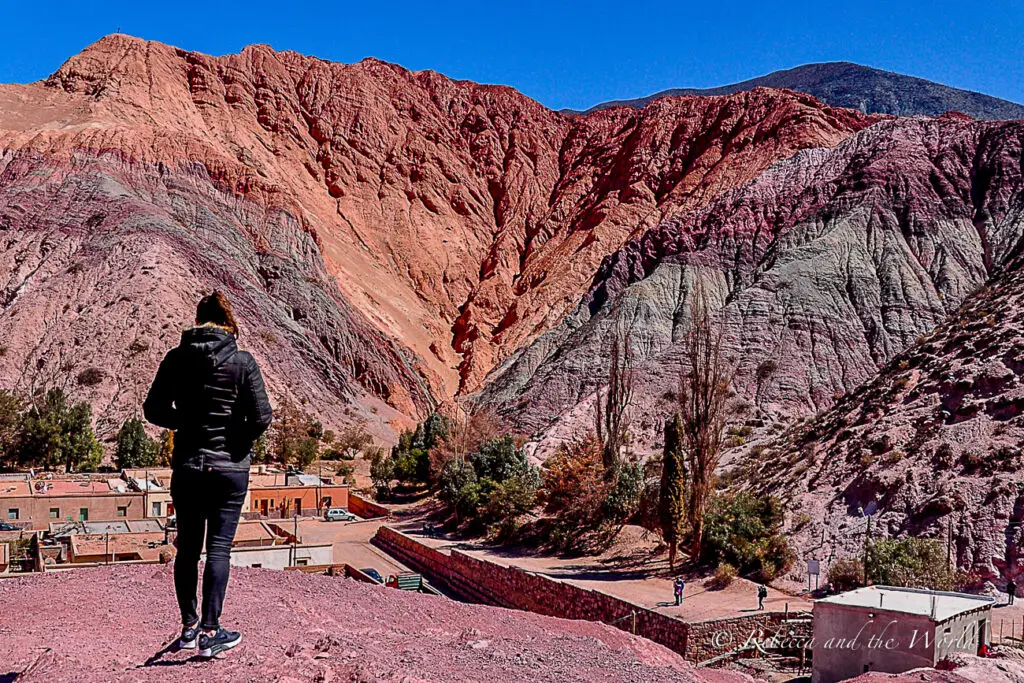
If you’re wondering whether you should visit Argentina, then know that the country has something for everyone.
In the north of Argentina, you’ll surprising rock formations, taste incredible wines and experience a culture that is distinctly different to other areas of Argentina.
The stark desert landscape makes this part of the country my absolute favourite region to visit. A northern Argentina road trip is the best way to travel through the area. Along the way, you’ll see salt flats, colourful mountain ranges and lunar-like landscapes.
As you venture south, the landscape transitions into the fertile Pampas, a vast expanse of grasslands that is the heartland of the gaucho (Argentine cowboy) culture.
Here, you can visit traditional estancias (ranches), experience the gaucho lifestyle and indulge in the renowned Argentine barbecue or asado .
Further south lies the famed region of Patagonia. Rugged, pristine wilderness makes the perfect setting for hiking, fishing and wildlife spotting.
The Ruta de los Siete Lagos is one of my favourite drives, winding through a series of crisp blue lakes and flower-filled fields.
- The best places to visit in Argentina
- 50 best things to do in Argentina
3. The natural wonders
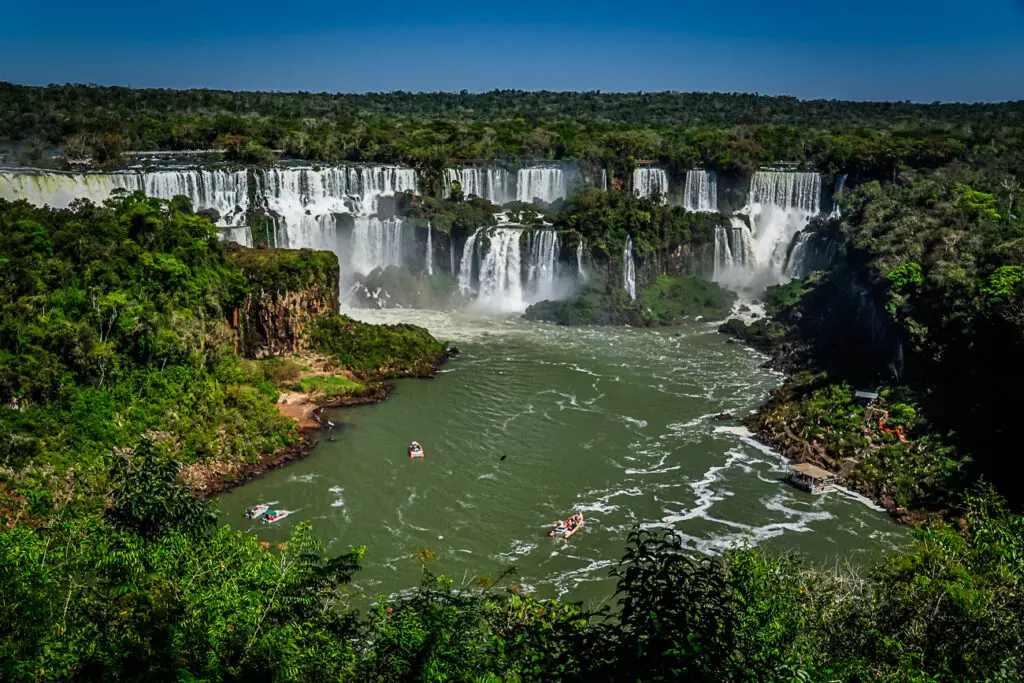
Argentina is home to many impressive natural sites, many recognised by UNESCO.
In the northeast, you’ll find the incredible Iguazu Falls . Stretching nearly 3km and reaching over 80m high, they’re an awe-inspiring sight. The falls are surrounded by a rainforest dense with diverse wildlife, making it a key area for biodiversity.
These waterfalls are shared by Argentina and Brazil and it’s worth visiting both sides – but, of course, I think the Argentina side is far more impressive!
Further down, Tierra del Fuego National Park offers an interesting change of scenery. This area, located at the southernmost tip of South America, is filled with plains, sharp peaks, and wind-shaped forests. Despite its rough conditions, it’s home to a variety of wildlife, including Andean condors, guanacos and the elusive Fuegian red fox.
In the Patagonian region, you can visit Perito Moreno Glacier in Los Glaciares National Park. This giant ice formation is one of the few glaciers in the world that’s still growing. It’s an impressive sight, whether you see it from the viewing platforms or try ice-trekking on it.
The sharp, echoing crack of the ice calving off the glacier is a sound I’ll never forget.
So, if you appreciate nature and adventure, Argentina has some stellar spots to see.
- How to visit Iguazu Falls – the Argentina and Brazil sides
- 9 awesome things to do in Ushuaia
- Guide to trekking Perito Moreno Glacier
4. The food

Think Argentina and I bet you think food, right?
Steak probably.
Argentina, the land of the famed asado, is a paradise for meat lovers. Asado isn’t just barbecue: it’s an art form in Argentina and a family tradition, with many a Sunday spent around the parrilla (grill). Pair it with a glass of full-bodied Malbec and you’ve got a match made in heaven.
Beyond steak, Argentina’s food scene has many cultural influences. Empanadas – pastries filled with meat, cheese or vegetables – are a staple snack, and each region has its own unique variation.
On the street, you’ll find choripan (chorizo sausage in bread with chimichurri sauce) and lomito (steak sandwiches).
The Italian influence is particularly noticeable in the country’s culinary scene. Pizzas and fresh pasta are as ubiquitous as the traditional asado.
While Argentina may be most famous for meat, they don’t skimp on sweets. The country’s helado (ice cream) is arguably the best (or even better!) outside Italy.
Dulce de leche, a sweet, caramel-like spread, is another highlight of Argentina’s culinary offerings. It graces everything from flaky pastries to pancakes and even ice cream. (There was always a jar in our fridge in Buenos Aires – although it never lasted long!)
No visit to Argentina is complete without trying as much food as possible.
- Traditional Argentinian dishes you must try
- Where to eat (and drink) in Buenos Aires
5. The wine
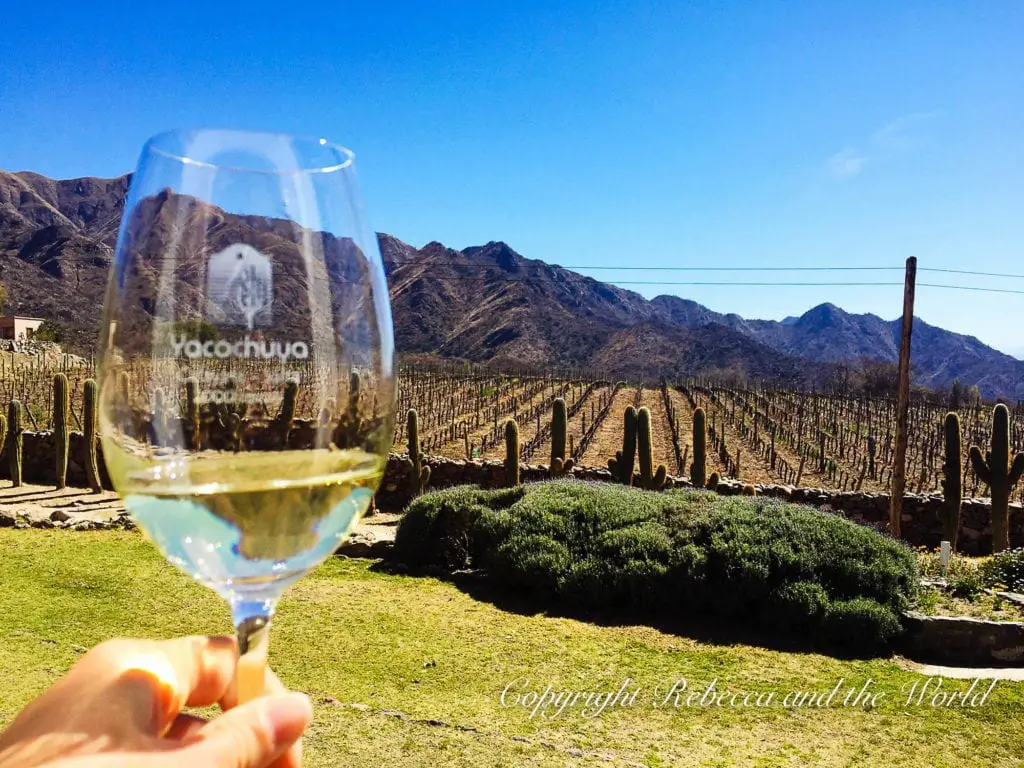
Argentinian wine isn’t just good, it’s world-renowned.
Argentina is the sixth largest wine producer globally and home to some spectacular wineries. Among the vineyards, the Mendoza region stands out – it’s the heart and soul of Argentina’s wine country, producing nearly 70% of the country’s wine.
The star of the show is Argentina’s signature grape, Malbec. This grape flourishes in the high altitude and sunny climate of Mendoza, resulting in deep, full-bodied reds.
But Malbec isn’t the only grape that thrives in Argentina. You’ll also find excellent Cabernet Sauvignon and Torrontés (an aromatic white wine native to Argentina – and one of my favourites).
You can try wine in any restaurant or head to the vineyards in Cafayate or Mendoza. Wine tasting here isn’t snobby at all, and the wineries are usually located among spectacular scenery.
- A guide to Cafayate, Argentina’s “other” wine region
- A wine-filled road trip through North Argentina
6. The culture

Argentinians are rightly proud of their rich traditions and artistic expression. You may think you’re coming to Argentina for the food, wine and landscapes, but I guarantee the culture will also capture your attention.
The most famous dance of all, the tango is an integral part of Argentine identity. Watch this stirring blend of music and passion at a street performance in Buenos Aires or try the sensual dance yourself with a tango lesson .
Not as famous as the tango but just as important is folklorica, a traditional music style that has its roots in the north of the country.
You’ll more likely find this music and dance outside of Buenos Aires. Folklorica performances are a common fixture in local festivities, and you won’t be able to stop your feet tapping along. Or find yourself a peña, a popular event where musicians gather to play traditional tunes – the best ones can be found in Salta.
The literary scene in Argentina is also noteworthy. This is the land that gave birth to great writers like Jorge Luis Borges and Ernesto Sabato . Buenos Aires is a book lover’s paradise with its countless bookshops and literary cafés. The annual Buenos Aires Book Fair is a highlight for bibliophiles, bringing together authors, publishers and book lovers from around the world.
7. The passion

You’ve never seen more passionate fans than Argentine soccer fans. Did you see how the country celebrated its World Cup win in 2022?!
The sport – fútbol to Argentines – is practically a religion here, and attending a game at the legendary La Bombonera stadium in Buenos Aires is an unforgettable experience. The intense atmosphere, complete with singing, chanting and flares, is exhilarating and at times overwhelming.
But it’s not just soccer that Argentinians are passionate about. They also love their food, their wine, their art – basically, anything that brings them joy.
And their passion is infectious. Talk to an Argentine for just a little while and you’ll find yourself getting drawn up into their excitement and energy.
READ NEXT: The best places to honeymoon in Argentina
8. The wildlife
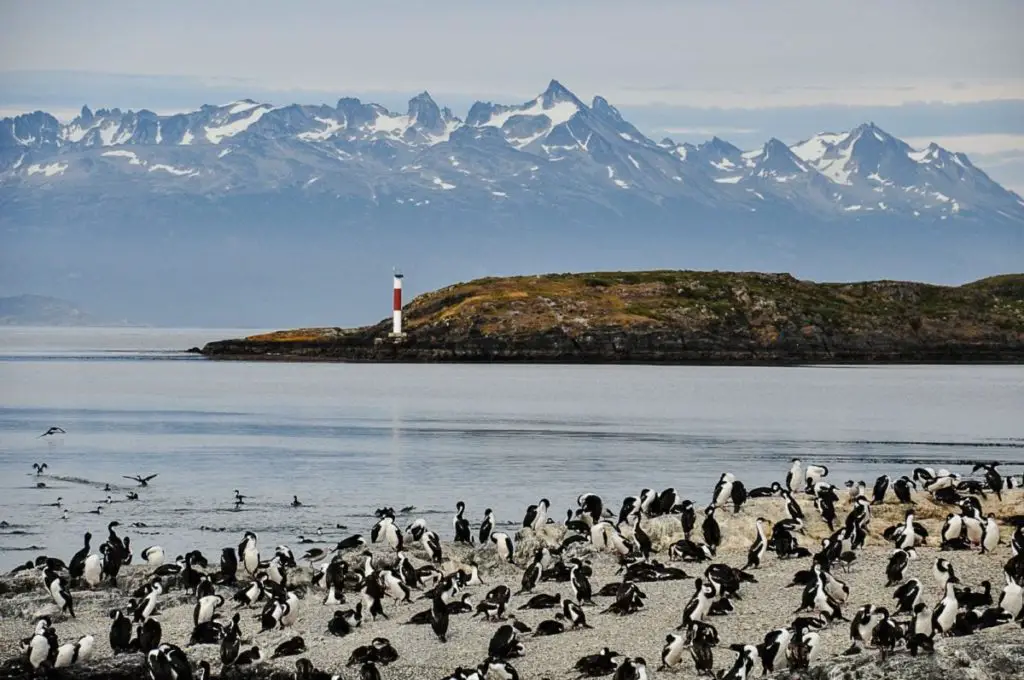
Argentina’s wildlife is incredibly diverse, making the country a must-visit for nature enthusiasts.
The southern region of Patagonia is where you’ll see penguins in their natural habitat. Punta Tombo is home to the world’s largest colony of Magellanic penguins. Watching these majestic creatures waddle along the beach is such a special experience.
For more aquatic wildlife, head to Peninsula Valdés. This UNESCO World Heritage site is renowned for whale watching , particularly the magnificent Southern Right Whales that visit between June and December (August to October are the best months to see them). The sight of these majestic creatures breaching the surface is truly awe-inspiring.
Peninsula Valdes is also home to several species of penguins, sea lions, elephant seals and more.
If bird watching is more your speed, the Iberá Wetlands, Argentina’s hidden gem, will not disappoint. This expansive marshland is teeming with over 350 bird species, including herons, storks and hawks. Its serene waters and lush vegetation are an unspoiled paradise for birdwatchers and photographers alike.
But it’s not just about birds. The Iberá Wetlands is also home to the elusive jaguar , one of the largest and most endangered big cats in the world.
9. The beautiful estancias
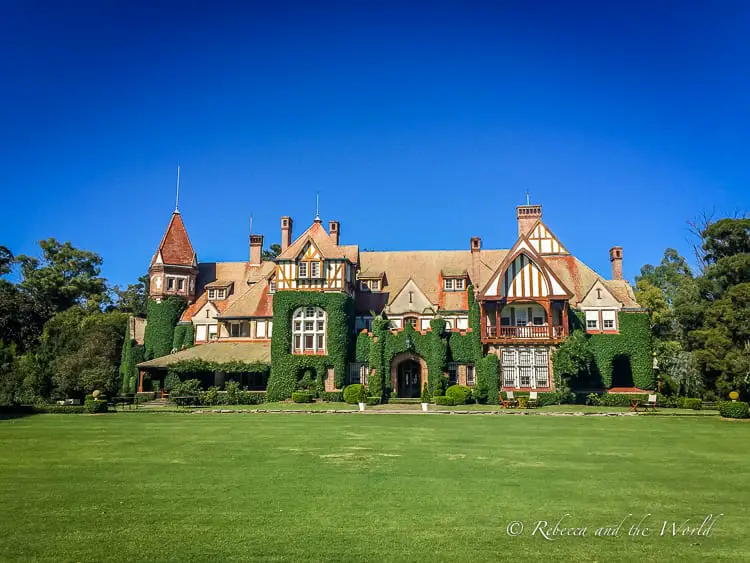
One of the best places to stay in Argentina is at an estancia. An estancia is a large, traditional ranch or farm that’s a unique and authentic experience for visitors.
These properties are scattered throughout the country, with different activities such as horseback riding, hiking and even cooking classes.
They’re located all over the countryside, including several estancias near Buenos Aires . This makes them a perfect option for a day trip or weekend getaway from the city.
Can’t stay overnight? Then you can easily take a day trip and enjoy an asado and cultural activities.
READ NEXT: 6 best estancias near Buenos Aires
10. The affordability

Argentina offers a remarkable value for money. While this, sadly, is because of economic challenges in the country, it makes Argentina an attractive destination for travellers.
The cost of food, accommodation and activities are generally less expensive than in many other countries, allowing you to experience more for less, particularly if you take advantage of the blue market in Argentina . For a fraction of the cost of what you’d pay in a city in the United States or Europe, you can dine out in Buenos Aires with a three-course meal with a bottle of wine.
This makes Argentina very affordable. But I encourage you to help boost the economy by supporting small businesses and locally-run accommodations when you visit.
11. The adventure
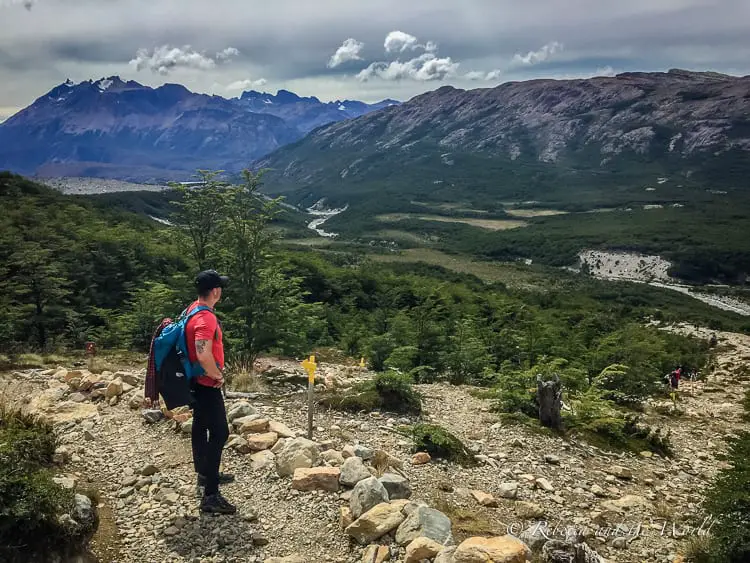
Love the outdoors? Then Argentina is the destination for you.
From the towering Andes mountains to the expansive Patagonian steppe, this South American country is a playground for adventurers.
Hiking enthusiasts will find themselves in paradise here, with trails winding through the whole country. The FitzRoy trek in El Chaltén is a must-try for any trekker who relishes epic scenery.
Volcan Lanín, on the Argentina-Chile border, is a challenging yet rewarding climb for experienced mountaineers.
Ever dreamed of walking on a glacier? Perito Moreno Glacier gives you the chance. It’s a breathtaking, once-in-a-lifetime experience.
More into winter sports? Argentina’s ski resorts, such as Cerro Catedral in Bariloche, have world-class slopes that cater to all levels of skiers.
Then there’s kayaking , fly fishing, rock climbing, mountain biking , horseback riding – the list goes on.
12. The shopping
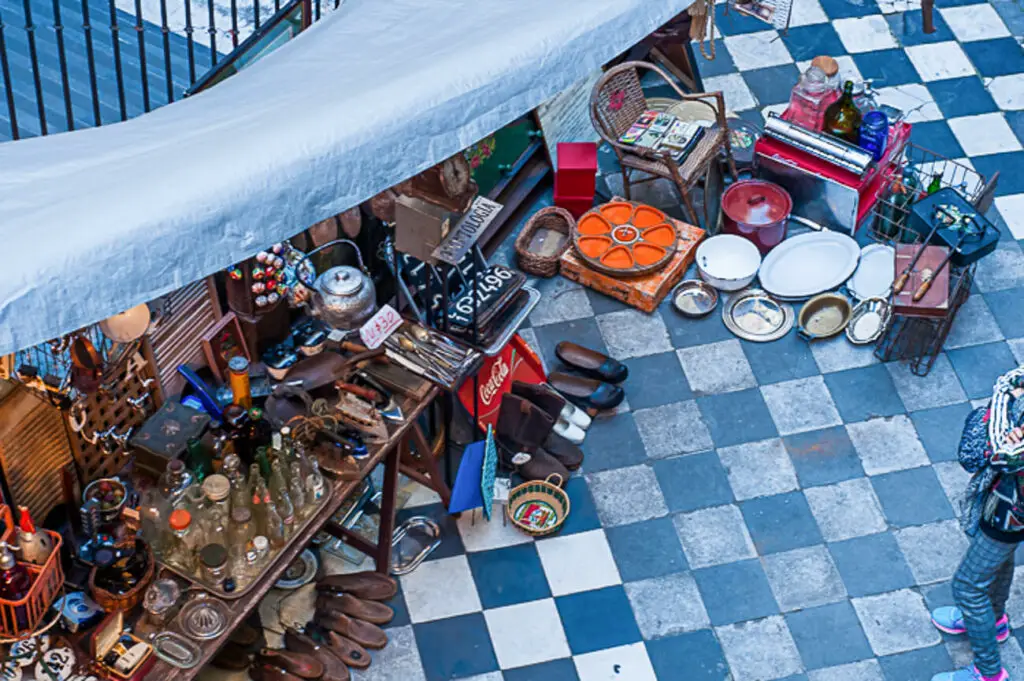
The first thing you’ll notice when you arrive in Buenos Aires is that Argentines are pretty stylish. And shopping is a big part of the Argentine culture.
Is Argentina worth visiting if you also love shopping? Yes. The capital city has a huge range of shops and markets, from designer boutiques to flea markets.
You can find quality leather goods at affordable prices, perfect for souvenirs or gifts. A must-do is to have a custom leather jacket made for you – they can be turned around in a matter of 48 hours.
Apart from clothes and accessories, be prepared to bring home lavish amounts of wine, alfajores and dulce de leche. What’s a trip without a souvenir?
READ NEXT: What to buy in Buenos Aires
13. The chance to disconnect
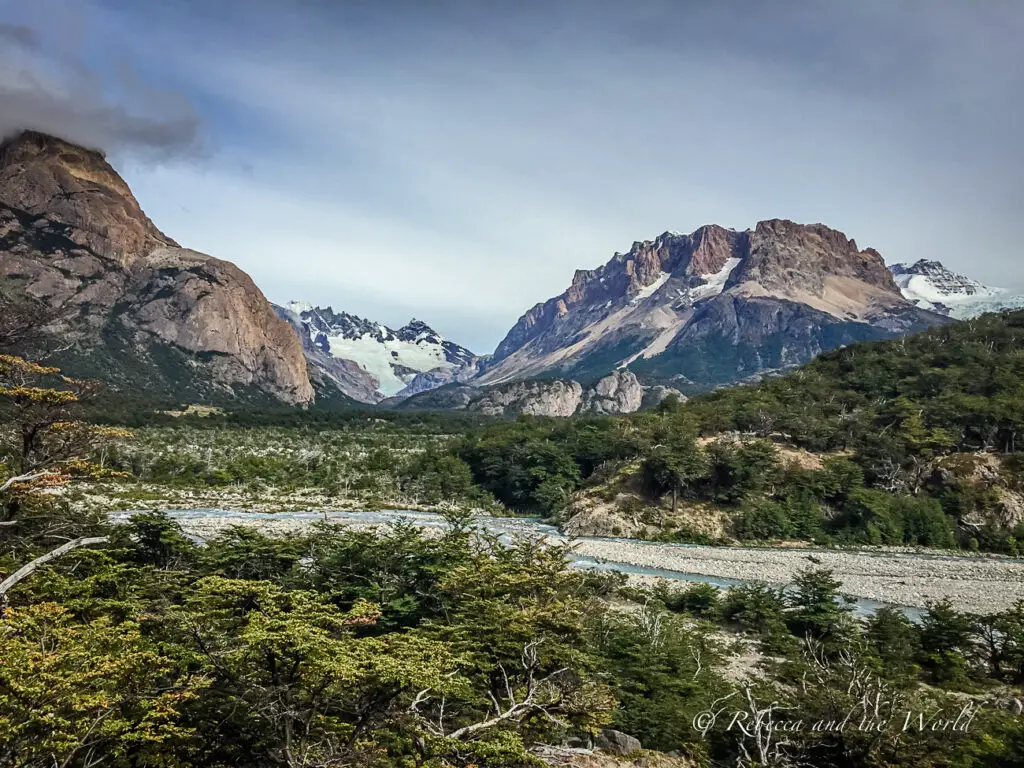
Why visit Argentina? It’s a chance to take a break from your screens and enjoy some downtime in stunning settings.
Surrounded by Argentina’s natural beauty, you can’t help but disconnect and switch off.
The country’s slow pace of life is infectious, and you’ll find yourself embracing the siesta culture in the rural areas.
Even in big cities, people take their time to connect with each other. Meals aren’t rushed, they’re to be enjoyed. The sobremesa , the conversation after a meal, is an essential part of Argentine culture and can last hours after a meal has finished.
It’s a refreshing change from the hustle and bustle of daily life, and I think Argentines have got it right.
14. The language
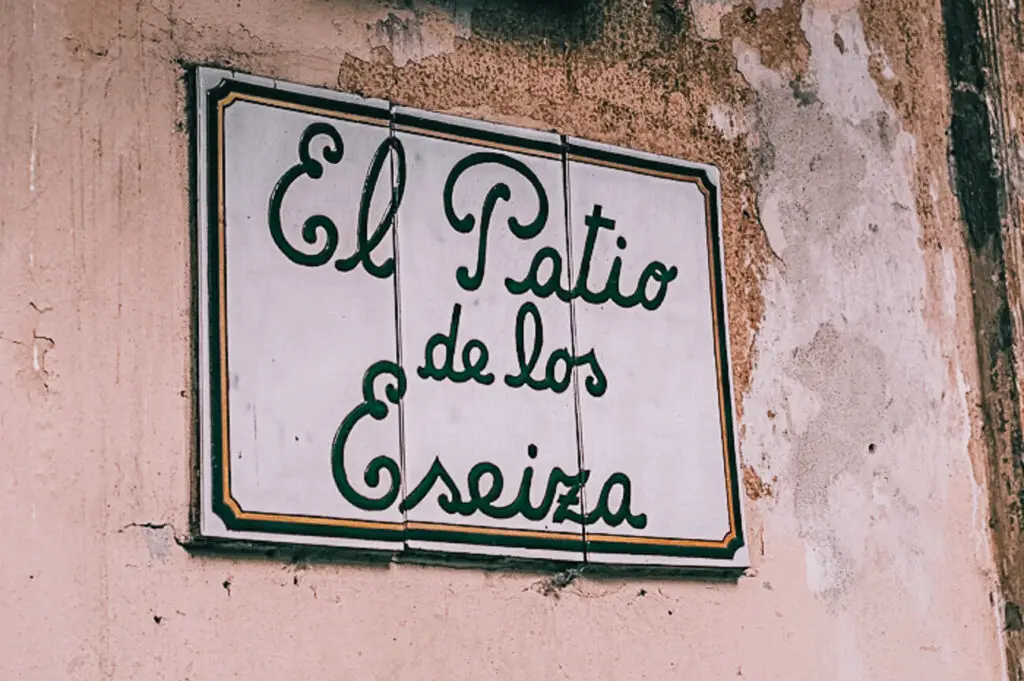
Argentines speak a different form of Spanish, known as Castellano. While it may take a little getting used to, the lilt and sing-song rhythm will have you falling in love with the language.
This rhythm has been influenced by Argentina’s Italian heritage, which also translates to big hand gestures and boisterous conversations. Listening to Argentines speak Spanish is like listening to music, and you’ll find yourself wanting to pick up the language and join in.
Even the country’s slang is fun.
And don’t worry if your Spanish isn’t up to scratch. Argentines are patient and friendly and will do their best to help you communicate.
15. The people
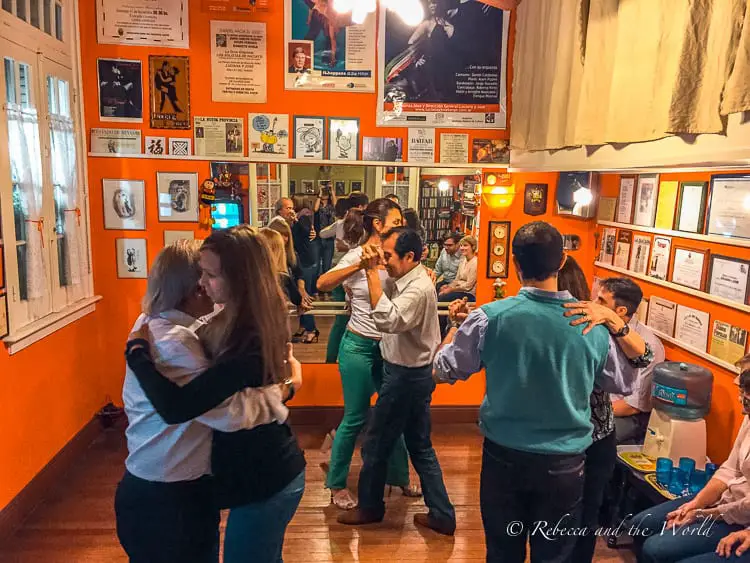
Last but not least, one of the top reasons you should visit Argentina is for the warm hospitality you’ll receive from the locals.
Argentines are incredibly friendly and welcoming, always willing to share their culture and traditions with visitors. They love talking and chatting and laughing and just generally enjoying life.
They’re not shy people, so don’t be surprised if you find yourself sharing mate (a type of tea that’s part of the cultural fabric of Argentina) with strangers or quickly making new friends when you visit!
Reasons to visit Argentina: Final thoughts
Argentina is a country that quickly gets under the skin of most travellers, and for good reason. It certainly got under my skin – and that’s why I love writing about this country.
From breathtaking landscapes to rich cultural experiences, there’s something for everyone in this diverse and fascinating country. Whether you’re a nature lover, a foodie or simply looking for a laid-back atmosphere to recharge your batteries, Argentina has it all.
You won’t regret visiting Argentina.
Why visit Argentina: FAQs
When is the best time to visit argentina.
The best time to visit Argentina depends on the regions you plan to explore. For Buenos Aires, spring (September to November) and autumn/fall (March to May) are ideal. For Patagonia and the south, the summer months (December to February) are the warmest.
What are the visa requirements for Argentina?
For many countries, including the United States, Canada, Australia and most EU countries, no visa is required for stays of up to 90 days for tourism purposes. However, always check the latest regulations with your local Argentine embassy or consulate. iVisa can also provide advice.
Is it safe to travel to Argentina?
Overall, yes. While Argentina is generally safe for tourists , like any country it has areas of higher and lower risk. Exercise general caution, particularly in large cities where petty theft can occur. Avoid flaunting expensive belongings and always keep personal items secure. Always purchase travel insurance (read my full guide to Argentina travel insurance ).
What kind of power outlets are used in Argentina?
Argentina uses Type I power outlets, and the standard voltage is 220 V, with a standard frequency of 50 Hz. Visitors from countries with different standards should bring a power adapter or converter ( I like this one ).
Is English widely spoken in Argentina?
While Spanish is the official language, English is taught in most urban schools and is widely understood in major cities and tourist areas. Restaurants in major cities and towns may have menus in English. However, I recommend learning a few basic phrases in Spanish to make your experience better.
What is the currency in Argentina?
The official currency of Argentina is the Argentine Peso (ARS). Cash is king in Argentina, and you should bring US dollars or Euros to exchange on the “blue market” at a better rate than the official rate. Credit cards are accepted in major cities and tourist spots, but you’ll need cash for smaller establishments and rural areas.
What is the food like in Argentina?
Amazing! The cuisine is one of the main reasons to visit Argentina. The country is famous for its beef. Don’t miss out on other local favourites like empanadas, locro (a hearty stew) and dulce de leche, a sweet caramel-like spread.
What are some must-visit sights in Argentina?
There are many incredible places to visit in Argentina . In Buenos Aires, you can explore the colourful neighbourhood of La Boca, hip Palermo and the historic Plaza de Mayo. For nature lovers, the stunning Iguazu Falls, the Perito Moreno Glacier in Patagonia and the rugged Andean peaks are unforgettable.
Did you find this article helpful? Consider buying me a coffee as a way to say thanks!
What are your reasons for visiting Argentina? Drop me your thoughts in the comments below!
Related posts
Before you go… you might like these Argentina travel blogs:
- Here’s everything you need to know to plan a trip to Argentina
- The ultimate 2-week Argentina itinerary
ARGENTINA TRIP ESSENTIALS
- Book your flight to Argentina online with Skyscanner . I like how this site allows you to find the cheapest days.
- Find a great hotel in Argentina. Check prices on Booking.com and Expedia online.
- Check out the huge range of day tours throughout Argentina on GetYourGuide or Viator . There’s something for everyone.
- Keep those bottles of wine you’ll be buying safe in these wine bags .
- A copy of the Lonely Planet guide to Argentina will be handy. Also pick up a Spanish language guidebook to help you navigate your visit.
- One thing I always purchase is travel insurance ! Travel Insurance Master allows you to compare across multiple policy providers, while SafetyWing is great for long-term travellers and digital nomads.
PIN IT FOR LATER: WHY VISIT ARGENTINA
Save this guide to the best reasons to visit Argentina to Pinterest for later!
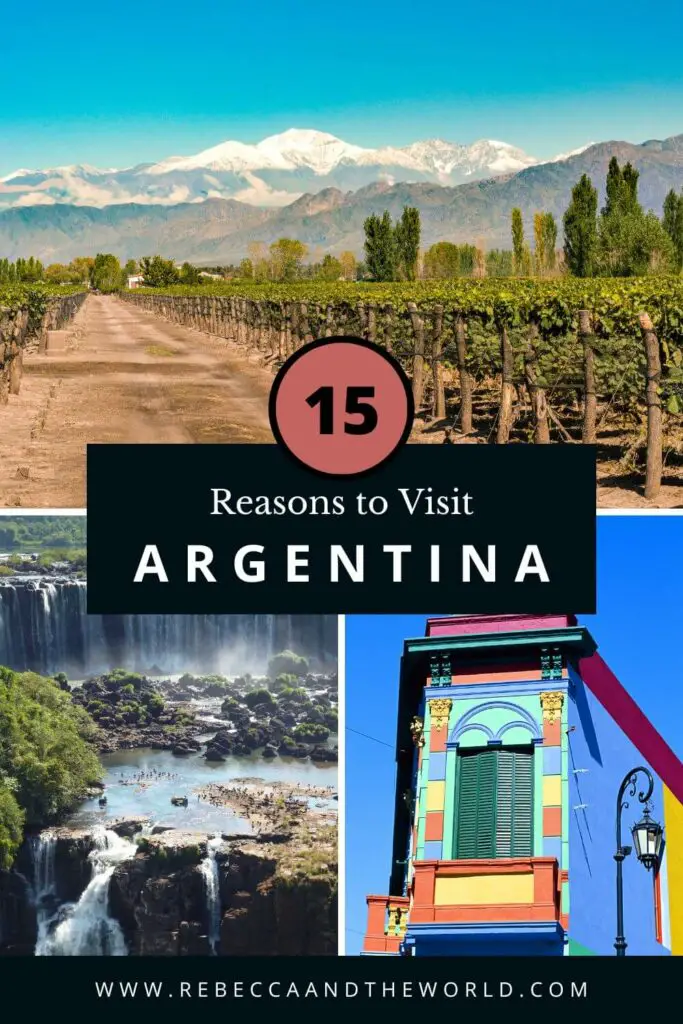
About REBECCA
I'm a travel junkie who started dreaming about seeing the world from a very young age. I've visited more than 40 countries and have a Master of International Sustainable Tourism Management. A former expat, I've lived in Australia, Papua New Guinea, Argentina and the United States. I share travel resources, tips and stories based on my personal experiences, and my goal is to make travel planning just that bit easier.
Leave a Comment Cancel reply
MORE INFORMATION
ABOUT WORK WITH ME CONTACT PUBLISHED WORK
AFFILIATE DISCLOSURE
AS AN AMAZON ASSOCIATE I EARN FROM QUALIFYING PURCHASES
© 2024 REBECCA AND THE WORLD
Privacy Policy
I ACKNOWLEDGE THE WURUNDJERI AND BOON WURRUNG PEOPLE OF THE KULIN NATION AS THE TRADITIONAL OWNERS OF THE LANDS AND WATERWAYS OF THE AREA I LIVE ON. I PAY MY RESPECTS TO ELDERS PAST AND PRESENT AND CELEBRATE THE STORIES, CULTURE AND TRADITIONS OF ALL ABORIGINAL AND TORRES STRAIT ISLANDER PEOPLE ACROSS AUSTRALIA.

- Privacy Overview
- Strictly Necessary Cookies
This website uses cookies so that we can provide you with the best user experience possible. Cookie information is stored in your browser and performs functions such as recognising you when you return to our website and helping our team to understand which sections of the website you find most interesting and useful.
Strictly Necessary Cookie should be enabled at all times so that we can save your preferences for cookie settings.
If you disable this cookie, we will not be able to save your preferences. This means that every time you visit this website you will need to enable or disable cookies again.
- Best Time to Visit
- Weather & Climate
- Airports in Argentina
- Driving Guide
- One-Week Itinerary
- Top Places to Visit
- Most Popular Cities
- Best National Parks
- Top Things to Do
- Best Places to Hike
- Skiing in Argentina
- Things to Do in Mendoza
- Things to Do in Bariloche
- Things to Do in Ushuaia
- Guide to Iguazu
- Argentina's Glaciers
- Every Food to Try
- Search Please fill out this field.
- Newsletters
- Destinations
- Central & South America
Top 10 Reasons to Visit Argentina
Karol Kozlowski/Getty Images
There are plenty of reasons to travel to Argentina . As the third most populous country in South America and the largest Spanish-speaking country in the world, Argentina has distinct and beautiful geography , interesting history and culture, thriving nightlife, and unique local cuisine. It's no wonder why Argentina attracts thousands of visitors every year. Here are a few reasons why tourists can't get enough of Argentina, and why you might want to plan a visit soon.
Argentine Wine
It is a special treat to drink a glass of wine in the same city in which its grape was grown. Argentina is the sixth largest wine producing country by volume, so these opportunities abound. You can enjoy an aromatic Torrontes in Salta, a classic Cabernet Sauvignon in the north, or a meaty Mendoza Malbec in the central region of the country. Many Argentine wineries offer wine tours and tastings.
Iguazú Falls
"Poor Niagara!" These were the words Eleanor Roosevelt reportedly said when she visited Iguazú Falls for the first time. The term "Iguazú" means "great waters" in the Guarani language. The falls were established in 1984 as a Natural World Heritage Site by UNESCO. Along with Nahuel Huapi National Park in Patagonia, Iguazú Falls is among the most frequented tourist sites in Argentina, and for good reason. Visitors can enjoy the awe-inspiring views of the falls along with tours, treks, and water sports at the falls' base.
Horses and Gauchos
Ponies have been a part of Argentine culture since gauchos (Argentine cowboys) roamed the expansive fields across the country. Whether they are watching polo, going for a gallop, or betting on these majestic animals, Argentines find great joy in all things equine. As a visitor, you can enjoy these same activities by enrolling in polo lessons, visiting the Hippodrome to watch races, or taking a day trip for a ride through the country.
Ushuaia Winter Sports
Ushuaia is located on the southern coast of Isla Grande de Tierra del Fuego and offers abundant opportunities to enjoy its rich culture, history, and natural beauty. Sports enthusiasts can play in the winter wonderlands of Glacier El Martial and Cerro Castor areas and go skiing, sledding, and snowboarding. Nature and wildlife lovers can catch a glimpse of local birds, penguins, seals, and orcas that colonize the islands in the Beagle Channel. Art lovers can take in the Biennial of Contemporary Art at the End of the World , which has been hosted in Ushuaia since 2007.
Tigre Delta Summer Sports
When expats, portenos (one who lives in a port city), and tourists want to escape the hectic pace of Buenos Aires , many make the trip to Tigre Delta for a relaxed atmosphere surrounded by nature. The city of Tigre is located on the Parana Delta and is made up of hundreds of islands dotted with family homes and weekend houses. Some of the larger islands, like the Martin Garcia Island, have towns with small airports, museums, camping spots, and other tourist attractions. Water sports enthusiasts can enjoy fishing, kayaking, and boating through Tigre’s maze of channels.
Shopping in Palermo Soho
Beautiful boutique shops line the streets of Palermo Soho, a hub of the relentlessly creative design district in Buenos Aires . Be prepared for long strolls interrupted by halting stops to gawk at window designs. The shops have everything from high-end shoes and belts, chic skirts, and dresses to glittery custom jewelry and stylish jeans. There also seems to be a custom shoe store around every corner in Palermo Soho, all filled with unique designs. Palermo also has dozens of cafes, bars, and restaurants catering to nearly every palate. You won’t go hungry in this part of Argentina.
A country that always takes an opportunity to celebrate, Argentina has many different kinds of festivals. Buenos Aires is a host to festivals throughout the year including the Buenos Aires International Festival of Independent Film (BAFICI); Buenos Aires Fashion Week (BAFWEEK; La Rural, the nation's two-week farm fair and gaucho festival; and a gay pride parade. There are festivals celebrating art, music , and the tango as well. Jujuy celebrates the “Semana de Jujuy” when the usually quiet city comes alive for a week of partying to celebrate its founding. In Villa General Belgrano (near Córdoba), Oktoberfest is celebrated during the first two weeks of October with an enormous beer festival that celebrates German culture.
Glaciers National Park
In 1981, Los Glaciares National Park was inducted as a UNESCO World Heritage Foundation site. The glacial activities in the park are mainly visible around two lakes, Argentino and Viedma. At these lakes, you can see spectacular shows of glaciers dumping chunks of ice into the chilly glacial waters below. The park is located in the area known as Austral Andes in Argentina, on the Chilean border. You can take horse rides through the natural beauty or relax at estancias (ranches) nearby.
Argentina has the world's second highest consumption rate of beef, at about 50 pounds a year per capita. What makes Argentine steaks so tasty? Many beef producers in Argentina still use the older methods of pasture and grass feeding their cows. This is a more expensive process, but the cows are healthier and, so it is said, the beef is tastier.
The Fantastic Geological Color and Gastronomic Pleasure of Salta
TripSavvy / Maria Ligaya
The city of Salta offers a wealth of experiences from the natural wonders of its geology to the delight of its local foods, to an interesting culture and history. Tourists can enjoy guided tours through the Calchaquí Valley or venture out to see the multi-colored rock formations and the quiet adobe villages. The Salta region is also known for its delicious wines and traditional fares such as humitas, locro, and empanadas .
Related Articles
More related articles.

- May 2, 2024
- No Comments
Is Argentina Worth Visiting? 16 Things To Know Before Going
Is argentina worth visiting.
Argentina is one of the best countries to visit in South America as it has so much variety.
If you love hiking and adventure, you have Patagonia . If you love wine, then head to the wine region of Mendoza . Or if you love European style cities full of culture, great restaurants and insane nightlife, then you have Buenos Aires.
Even as of 2024, due to high inflation it’s still a great travel bargain for most American and European travellers.
Time to start planning your 2024 trip to Argentina now!
16 Great Reasons To Visit Argentina
1. your money is worth double in argentina but not for much longer.
Argentina has been facing high inflation for many years, with rates reaching over 100% in recent years.
This lead to the many Argentinians swapping their pesos for dollars. At one point you could get 1000 pesos for one dollar.
Travellers could also take advantage of this and change their dollars at a much higher exchange rate.
However, as Milei (the new president) is trying his best to reduce inflation and repair the economy of the country.
He removed many of the currency controls on the pesos and this means that prices have started to rise from the start of 2024.
What does this mean for you?
You can still get a better exhcnage rate using the ‘blue rate’, but you won’t be getting as good a travel bargain due to the higher prices.
I was there in from November 2023 to January 2024 and enjoyed the great deals. However, the week before I left in February, a coffee in my local cafe doubled in price.
TOP TIP: This website gives you live updates on the official and blue dollar exchange rates.
How To Benefit From The Blue Dollar Rate In Argentina
Argentina travel prices are still some of the lowest in South America right now. Here are some tips to make the most of it:
- Bring lots of dollars . Make sure they are $100 bills as you’ll get a worse rate for $50 and $20. You can change these up for pesos at unofficial ‘cambios’
- Transfer yourself dollars to a Western Union whilst in the country as they have an exchange rate close to the blue rate.
- Use your card as much as possible. You will get charged the standard exchange rate to begin with but then your bank should refund you. For example, my Monzo card refunded me after a few days.

2. Buenos Aires Is The Paris Of South America
Known as the “Paris of South America,” visiting Buenos Aires is like being in a European capital.
The city has such a strong European influence due to the large number of immigrants who arrived in the city during the late 19th and early 20th centuries.
They brought their culture and customs with them as well and Buenos Aires turned into a melting pot of cultures.
This is why Buenos Aires is home to such stunning European-style parks and squares, such as the Plaza de Mayo, which is modelled after the Spanish Plaza de España.
The architecture in Buenos Aires also reflects the European influence, with many buildings and landmarks in the city resembling those found in Paris, Madrid, and other European cities.
To see how to combine Buenos Aires into a three-week itinerary that covers the entire country, head to one of the posts below:
- A Budget 3-Week Argentina Itinerary
3. You Could Spend A Month In Buenos Aires And Not Get Bored
I lived in Buenos Aires for 3 months and even I don’t feel like I scratched the surface of this amazing city.
There are 5 huge barrios (neighbourhoods) that most tourists visit – Palermo, Recoleta, Centro, San Telmo and La Boca.
You could easily spend a few days exploring each area.
Here some of my favourite things to do whilst in BA:
- Visit La Boca: This colorful neighborhood is known for its vibrant street art, tango shows, and its famous soccer team, Boca Juniors. Visitors can explore the colorful streets, take pictures and enjoy traditional foods.
- Recoleta – this upscale neighbourhood is home to the Recoleta cemetery where you can find the tomb of Eva Peron.
- Visit the Palermo: Full of great bars, cafes, restaurants and clubs. Buenos Aires is known for its beautiful parks, and Palermo Park is one of the best places to relax, take a walk, or enjoy a picnic.

4. The Beautiful Iguazu Falls
These breath-taking falls are made up of 275 individual cascades , which stretch over 2 miles and create a stunning natural barrier between Argentina and Brazil.
The most famous part of the falls is known as ‘The Devil’s Throat’ , a U-shaped waterfall that is over 82 meters high and 150 meters wide .
This waterfall is the largest and most powerful of the falls and is a must-see for any visitors.
The falls are divided across the border between Argentina and Brazil .
You can take a guided tour of both sides to see the falls from different perspectives.
The Argentine side offers a panoramic views of the entire waterfall system, while the Brazilian side provides a more immersive experience with several trails that lead visitors close to the falls.

5. Bariloche - The Lake District Of Patagonia
Bariloche was my favourite place in Argentina.
When you hear Patagonia , everyone thinks of the deep south full of glaciers and the hiking town of El Chalten.
But Patagonia is a huge region that stretches almost to the middle of the country.
Bariloche can be found in northern regions of Patagonia and it’s often referred to as the lake district of Argentina.
The town is surrounded by the Andes mountains, enormous lakes and alpine forests. It’s truly one of the most beautiful places I’ve visited.
Aside from it’s beauty, it’s also an adventure travellers dream.
You can do almost everything there including full day hikes in the Andes, kayaking on the lakes, skiing (in the winter) and biking along the many roads that wind in and out of the mountains.
No trip to Argentina is complete without a visit to Bariloche.
See how to spend an epic week in Bariloche with this itinerary guide:
- How Many Days In Bariloche? [3, 5 & 7-Day Itineraries]

6. El Chalten - The Hiking Capital
A list about why Argentina is worth visiting wouldn’t be complete without mentioning El Chalten.
This small town is one of the most sought-after destinations in the world, with n ature lovers, adventure seekers and trekking enthusiasts all wanting to go to experience the beautiful scenery and epic hikes.
It is considered the trekking capital of Argentine Patagonia , as it offers access to some of the most spectacular mountain landscapes in the region.
From the town you can pick from a handful of treks into Parque Nacional Los Glaciares.
One of the best is known as the ‘Laguna Del Los Tres’ hike which will take you on an epic 8 hour hike to see the famous Fitz Roy mountain range.
Patagonia has so many great hikes. To see a full list of some of the best single-day hikes in South America, head to the post below:
- The 12 Best Single Day Hikes In South America

7. Perito Moreno Glacier
This massive glacier located in El Calafate , the closest town to Los Glaciares National Park.
This is one of the most popular attractions in Argentine Patagonia and one of the main reasons people visit the country.
You have so many great options to see it too:
- Boardwalks – the boardwalks take you high above the glacier to get a top down perspective
- Boat – boats will take you up close to the glacier so you can experience how big and high it actually is
- Ice Hike – for the adventurous souls out there, you can even go hiking on top of the glacier!
For more information how to plan a visit to Patagonia, check out the post below:
- How Many Days In El Calafate & El Chalten? Top 3 Itineraries

8. The End Of The World - Ushuaia
If you really want to go deep into Patagonia and explore the very ends of the world , Ushuaia is the place for you!
This breathtaking destination nestled at the most southern tip of Argentina , and the only place you can fly to Antarctica from!
Imagine towering mountains, pristine lakes, and glaciers that sparkle like diamonds.
Trekking through Tierra del Fuego National Park offers an adventure like no other, with stunning views at every turn.
And here’s another great reason why you should visit Argentina: Ushuaia is home to adorable penguins waddling along its shores, a sight that will melt your heart.
See how to visit Ushuaia, El Calafate and El Chalten all with this epic 1-month itinerary:
The Ideal Argentina Itinerary [Two Unique One-Month Routes]

9. The Highest Mountain In The Southern Hemisphere
Aconcagua is the highest mountain in the Southern Hemisphere.
And visiting Aconcagua National Park, just outside of Mendoza, is a must if you are a lover of epic scenery and hiking.
The summit stands at 22,841 feet (6,959 meters) above sea level.
It’s a popular destination for hikers from around the world and is often considered to be one of the Seven Summits (the highest peaks on each of the seven continents).
Most backpackers won’t be looking to summit the actual mountain though as it can take up to 20 days, but trekking in the park or up to its base camp is still a great experience that will provide beautiful views of the Andes.
You need around 4-5 days in Mendoza to visit Aconcagua. See how with the itinerary post below:
- How Many Days In Mendoza? 3 Great Itineraries

10. Some Of The Best Wines In The World
Argentina is one of the world’s leading wine-producing countries and there are two main areas to visit if you love your wine: Mendoza and Calafate.
Mendoza is considered the wine capital of Argentina and is home to over 1,000 wineries, many of which offer tours and tastings. The region is particularly known for its Malbec wine, which is considered to be some of the best in the world.
This isn’t just a place to visit for high end travel though and backpackers and Argentinians on summer holidays flock to the region too.
One of the best activities in Mendoza is the ‘wine bike’ route .
On the outskirts of Mendoza city centre, you will find several of the best wineries all along the same road. Along the same road you can find bike rental shops offering to rent you cheap bikes and provide a map to the best wineries.
All the wineries allow you to visit and enjoy a tasting from somewhere between 200-500 pesos depending on the places. One of the best is Trapiche , where you can sit out on the balcony and look out over the vineyard whilst getting sloshed.
Maipu Bikes also has a small outside bar and everyone ends back here at the end of the day to drop off their bikes and enjoy some final drinks, courtesy of Maipu bikes.
For more information on Mendoza including 8 great reasons why you should visit, head to the post below:
- Is Mendoza Worth Visiting? 8 Great Reasons To Visit Argentina’s Wine Region
Cafayate is a wine-producing region in the northwest of Argentina, located within the Calchaqui Valley – one of the world’s highest suitable locations for growing grapes.
The combination of high-elevation, great year-round weather and fertile soil produce incredible malbecs and torrontés.
This is another great town to go wine tasting in. There are three bodegas in town that are easy to visit – Nani, Domingo Hermanos and El Transito. At each one you can pay a small price to try a selection of wines. For example, at Bodega Nani we paid 250 pesos for 5 wines (3 reserves and 2 young).
Whilst I love adventure travel, this part of my South America journey came at the perfect time when I was a bit worn out. I just laid back, enjoyed the beautiful weather, and drank wine to my hearts content.
I suggest you do the same if you decide to visit.
Check out the full guide to the town including the best bodegas and vineyards to visit here:
- Cafayate Best Things To do & Town Guide

11. Argentina has Its Own Rainbow Mountain
The northwest of Argentina is a hidden gem , largely untouched by tourism.
It is well worth a trip, especially for those who love their wine, and those who like to feel like less of a tourist and more like a local .
The best thing about visiting this region of Argentina is that prices are closer to those you find in Bolivia rather than the prices in Buenos Aires.
You have also have a host of beautiful sights, tours and activities to choose from that rival it’s South American neighbours.
One of the ones that blew me away entirely was the Rainbow Mountain.
Humahuaca is the first of three small towns along Route 9 which runs through the beautiful northwest countryside all the way down to the city of Salta.
Here you can find Argentina’s very own Rainbow Mountain (and depending on who you ask, better than the more famous one in Peru).
Everything else you need to know about Humahuaca from our favourite hostels to the best restaurants is here in our guide to the town:
- The Best Things To Do In Humahuaca

12. Argentina Has It's Own Salt Flats Too - Salinas Grandes
We all know the Salt Flats in Bolivia are one of the most famous places in South America.
But you can find salt flats all over South America, and they’re all the same! Just a big flat white shiny area perfect for taking photos on.
If you aren’t making your way to Bolivia on your trip, why not visit Argentina’s salt flat instead.
You can visit it from Salta , which is one of the biggest cities in the region.
13. Steak, Empanadas & Dulce De Leche
You must have three food experiences things whilst in Argentina: steak, empanadas and dulce de leche.
- Steak – Argentina is known for its delicious meat-heavy cuisine, including dishes such as asado (barbecue) and steak. Finding a great steakhouse in Argentina is easy, and you know you will be getting grass-fed, pasture-raised beef. Try Don Julio in Buenos Aires for one of the best steaks around.
Empanadas – these are more of a snack than a main meal but my god they are addictive and you can end up eating 5 or 6 at a time. Empanadas are savoury pastries filled with beef, pork or chicken mixed in a sweet, slightly spicy sauce.
Dulce de Leche – this is a traditional Argentinean dessert. Dulce de leche is a traditional sweet spread or sauce , which is popular in many Latin American countries. It is made by simmering milk and sugar together, turning it into a gooey golden treat. You will find dulce de leche mixed with almost any other desert such as cakes, cookies, ice cream and it’s one of the most delicious sweet treats I have ever experienced. I was hooked on it during my time in Argentina and regularly found myself in bakeries purchasing donuts with dulce de leche filling.
If you want to combine a trip to Chile alongside Argentina, then there are several ways to do this with a simple border crossing. The three itineraries in the post below can help you cross the borders a 3 different points in Argentina to see Chile:
- 3 Epic 1-Month Chile and Argentina Itineraries: Patagonia, The Lake District and the North
14. Watch The Best Tango Dancers In The World
The tango is a beautiful and captivating dance that is known for its passion and complex movements.
Going to watch live tango show whilst in Argentina is an exhilarating experience and there’s nothing better than seeing two experts perform together alongside a live orchestra.
Buenos Aires is the birthplace of the tango, and you can watch professionals performing at one of the many tango shows in the city.
One of the best shows in Buenos Aires is La Ventana .
I went in January this year and loved it. You get a 3 course meal, a complimentary bottle of wine and can watch a variety of different performances from dancing, singing and folk music.
If you are thinking of planning a long stay in Argentina and South America, then seeing an extended backpacking itinerary is essential to help you plan your trip. Check out the post below to help you plan your next trip:
- The Essential 1-Month Chile, Argentina & Bolivia Backpacking Itinerary

15. The Nightlife
The Argentinians know how to party.
Argentina is famous for its lively nightlife, particularly in cities like Buenos Aires, where its common for nights to carry on until 5 or 6AM the next morning.
The city’s famous neighbourhoods, such as Palermo and Recoleta , offer a diverse range of bars and clubs that cater to different tastes and preferences.
Palermo is known for its trendy bars and clubs, while Recoleta is more upscale, with a variety of bars and lounges.
You will be able to find some great nights out at the hostels as well.
Milhouse is famous across Argentina and South America and known as one of the best party hostels on the continent.
This hostel can host hundreds of guests and they are always organising events to keep the huge crowd of backpackers entertained.
Milhouse is one of my favourite party hostels in South America. For a full list of the others, check out the post below:
- The Best Party Hostels In South America
16. Argentina is Set Up For Epic Road Trips
Argentina is the perfect place to plan an epic road trip.
Route 40 is a legendary highway that runs through the heart of Argentina, stretching over 4,200 km from the northernmost point on the Bolivian border to the southernmost point of the country in Tierra del Fuego (the closest southerly point to Antarctica).
This route passes through some of the most spectacular landscapes in Argentina.
Starting in the north, you can visit the vast deserts of the northwest , the salt flats and Argentina’s very own Rainbow Mountain .
Getting closer to the middle of the country, you can follow the ‘wine route’ through towns like Salta , Cafayate and Mendoza to enjoy the best wine regions in the country.
You will then reach northern Patagonia and start to skirt the Andes mountains. Here you will find the stunning town of Bariloche , surrounded by picturesque lakes and forests.
Eventually, you will make your way to the Patagonian steppe to see the beautiful Perito Moreno Glacier , one of the most famous attractions in Argentine Patagonia.

UNLOCK THE BEST OF BUENOS AIRES
- no spam • 100% free • unsubscribe anytime
4 Things To Know Before You Travel To Argentina
Here are a few important things to note before you start planning a trip to Argentina:
1. Prices Change Constantly
Inflation is still high and the blue dollar exchange rate still exists.
However, prices have also risen recently due to the presidents removal of currency controls. This means it’s still a good deal for travellers but not as good as it was at the start of the year when I was there.
It’s difficult to provide an accurate price on anything like transport or tour prices as the economy is in constant flux at the moment.
2. It's A Big Country So Flights Are Necessary
Argentina is a huge country and you can’t just bus around it like say Peru .
If you want to save time on your trip, you’ll need to take flights to most of the other big cities like Mendoza, Bariloche and El Calafate.
However, if you want to save money you can take overnight buses!
The average journey time for an overnight bus is around 22 hours in Argentina.
3. Southern Hemisphere
Argentina is in the southern hemisphere which means when we have summer they have winter and vice versa.
The best time to visit Argentina is from November – March.
If you visit during the winter (June-August), it will be very cold, especially in Patagonia.
Many of the trails, hikes and activities will be closed off during the winter months too due to the harsh weather.
Take this into account when planning your trip!
4. The Food Is Meat and Cheese Heavy
The Argentinians love a good barbeque.
You won’t struggle to find a good parrilla (grill house) and the steak is top quality.
They also love pizza and their version is overloaded with cheese. It’s like 80% cheese and 20% tomatoe base.
I was pleasantly surprised by Buenos Aires and saw many vegan and vegetarian restaurants. However, outside of the big cities you may struggle.

What's The Best Way To Get Around Argentina?
Buses in argentina.
Argentina is a big country so the easiest way to get around is to fly.
However, buses will be cheaper, but due to the large distances needed to travel, many of these will be overnight buses.
For example, a bus from Buenos Aires to Mendoza takes around 15 hours with prices starting at around $50.
I always use Busbud to check times and find the best prices:
Flights In Argentina
As mentioned, flying is one of the easiest ways to travel around Argentina.
Return flights can be cheap if booked in advance, and they will save you a lot of time.
Here are some average flight times:
- Buenos Aires > Iguazu – 1h 50m
- Buenos Aires > Mendoza – 1h 55m
- Buenos Aires > Bariloche – 2h 15m
- Buenos Aires > El Calafate – 3h 20m
I always use Way Away Plus to find the cheapest flights and get cashback everytime I book!
How Many Days Do You Need In Argentina?
Here’s a quick summary of how many days you need to in Argentina and what you can see in that time:
- 7 Days In Argentina – You’ll need a week in Argentina to Buenos Aires and one other highlight such as Iguazu or El Calafate.
- 10 Days in Argentina – with 10 days in Argentina, you can see Buenos Aires, Iguazu and El Chalten.
- Two Weeks In Argentina – with two weeks in Argentina you can see most of the highlights. One week can be spent exploring Buenos Aires and then flying up to Iguazu. The second week can be spent in Patagonia visiting El Calafate and hiking in El Chalten.
- Three Weeks In Argentina – three weeks is the perfect amount of time to see the highlights of Argentina. You can follow the same itinerary outlined in this post but just cut down the days in each place, or as suggested, skip over Mar Del Plata
Are you struggling to work out how many days you need in Argentina overall or don’t think you can spare a month?
Head to the post below to see a selection of itineraries that can help you:
- How Many Day Do You Need In Argentina? 4 Great Itineraries For Every Traveller

When's The Best Time To Visit Argentina?
Argentina is a completely different country in the summer compared to winter, so it depends on what you want to do.
I recommend visiting Argentina in:
- Dec-Feb – for the best outdoor activities. This is summer so you’ll have the perfect weather for the hiking trails, biking and kayaking. Visiting Patagonia during this time is when you’ll get the best weather but it’s also the summer holidays for Argentinians so it will be busy.
- March-May and Sept-Nov – these are the shoulder seasons so the weather won’t be as nice as summer but still good for outdoor activities. There will also be less crowds which means cheaper prices.
- June-August – visit Argentina during these months for the best winter sports. This is winter in Argentina so the skii resorts and slopes in places like Bariloche will be full of snow. However, this isn’t a good time to visit Patagonia as many of the trails are closed due to the erratic weather.

When's The Best Time To Visit South America?
Sign up for a FREE PDF outlining the best months to visit every country:

Discover Argentina: Your Ultimate Travel Companion Awaits!
From the tango-filled streets of Buenos Aires to the breathtaking peaks of Patagonia , uncover the hidden gems and must-see wonders with this expertly crafted Argentina Travel Guide!
Popular Argentina Itineraries & Guides

- Chile And Argentina Itinerary: 3 Great Routes For Patagonia

- One Week Argentina Itinerary: 3 Great Options

The Perfect Brazil & Argentina Itinerary [From Rio To Patagonia]

- Three-Week Argentina Itinerary: 2 Epic North To South Routes

- How Many Days Do You Need In Argentina? 4 Great Itineraries
Popular South America Itineraries & GUIDES

Flashpacker vs Budget 5-Week South America Backpacking Itinerary

The Ultimate 3-Month South America Backpacking Itinerary & Route

- 4 Epic 1-Month South America Itineraries

How To Prepare For A Trip To South America: 31 FAQs Answered

Ten Day South America Itinerary [5 Fantastic Routes]

How Many Days In South America? 6 Well-Planned Itineraries!

Suitcase or Backpack: Which is Best for South America?

The 22 All-Round Best Backpacker Hostels In South America [2024]
- Author Profile
- Posts by the Author
- North Argentina Itinerary: Two Weeks On An Epic Road Trip

Joe Bayfield
Hi I'm Joe Bayfield, Bayf for short. I love South America and want people to visit this incredible continent. I’ve travelled through Colombia, Ecuador, Peru, Bolivia, Chile and Argentina and also lived in Lima, Medellin and Buenos Aires. I write detailed South America itineraries to help you plan your next adventure!
Leave a Comment Cancel Reply
Save my name, email, and website in this browser for the next time I comment.

Hey, I’m Joe. Here are some more great travel resources to checkout.

Travel South America With Ease
Sign up to my weekly newsletter for the latest itineraries, guides and deals for South America.
Why travel to Argentina?
Argentina: This stunning country has something for everyone with vibrant cities, incredible national parks, and UNESCO World Heritage Sites throughout. You can eat innovative food in Buenos Aires, trek through Patagonia on the paths less traveled, and enjoy a drink at “the end of the world” all in the same week. The possibilities are endless when it comes to fun in Argentina, and it’s waiting for you to start your journey.
Discover the best adventures in Argentina
When to visit argentina.
Argentina has three varying climate systems based on location: the north region, the central region, and the southern region. The warmer months for all regions fall between November and March , as the weather is sunny and dry . However, the level of warmth will depend upon where you are in the country. The north can see highs of 30°C, but the south barely breaks 10°C and can dip as low as -2°C in the winter months. The northern region is great for year-round travel, as its temperatures typically remain humid and tropical, while the central region averages 18°C but faces heavy rain in the winter months of April through October.
- Peak season is dependent upon where you want to go and what you want to see, but generally, the warmer months of December through February bring the most tourists to all regions.
- For those traveling to Patagonia, December through March are the best travels months, as they will be the warmest and safest for those trekking through the parks. However, this is the high season for treks , so book early to get a stellar guide and prime lodging.
- Argentina is a great travel destination for wine lovers . The grapes harvest in February and March in Mendoza, making this the perfect time to check out the wineries. Be aware that this time of year will bring travelers from around the world, filling the vineyards and the cities.
- The low season between July and August brings wet weather in all regions and freezing temperatures in the south, which means many accommodations for trekking shut down during this time. It’s not recommended to travel to the southern region during these months as flights can get canceled and trekking can become too dangerous.
- You can take your chances on the shoulder season in May, April, and September as the weather will be warmer, but the precipitation can be unpredictable in the southern regions.
- When it comes to sightseeing and exploring the big cities, such as Buenos Aires and Córdoba, traveling from June through August will bring fewer crowds. You can score great hotel deals, and you won’t have to fight the crowds to see all the iconic landmarks.
Estimated flight prices from popular cities
Highlights of argentina, buenos aires, iguazú national park.
Argentina’s capital Buenos Aires, commonly referred to as “BA” and befittingly labeled the “Paris of South America”, is a city defined by passion — from its national fanaticism for fútbol (soccer) to its rich and sensual tango heritage. Wander the cultural center’s lively cobblestone streets, past the rustic outdoor cafes and artisanal markets, and you’ll encounter an eclectic mix of architecture with elements of Colonial, Art Nouveau, Art Deco, Neo-Gothic, and French Bourbon styles. And if you get hungry, this is also the city to indulge — being the steak capital of the world, BA’s parrillas (steakhouses) sit on practically every corner in the city, offering sizzling cuts of bife de chorizo (sirloin) and ojo de bife (rib eye).
Soak up this intriguing city on a sightseeing tour to get the most out of your visit; wander the faroles -lined streets of San Telmo , BA’s oldest neighborhood that embraces a vibrant arts scene and exudes a uniquely bohemian atmosphere. La Boca , another well-preserved neighborhood, is crowded with old restaurants and tanguerías along colorful Caminito Street . Mingle with the young and hip — check out Palermo Soho and its charming variety of shops, restaurants, cocktail bars, and fashion boutiques. And don’t forget to stop by the Teatro Colón to admire its neoclassical facade. It boasts some of the best acoustics in the world and sits among the top five best concert venues. You may be surprised to know: Buenos Aires is home to over 280 theaters, more than any other city in the world!
The Patagonian region encompasses the sprawling southernmost tip of South America, split between Argentina and Chile, with the glorious Andes Mountains as its dividing line. Argentine Patagonia is every adventurer’s dream. Featuring a vast expanse of dramatic and pristine landscapes, from arid steppes to rugged deserts, beautiful lakes to breathtaking glaciers, few other places on Earth are as wild and untouched. Discover the small city of El Calafate , flanked by mountains and sitting on the edge of the shimmering icy-blue Lake Argentino . Founded by wool traders and sheep ranchers in the early 20th century, the city is known as the gateway to the nearby Los Glaciares National Park , home to the spectacular Perito Moreno Glacier , a truly incredible sight to behold.
For more adventure, head to El Chaltén , a small mountain town nestled in the heart of the national park — it is surrounded by many wonderful trails that lead into the Fitz Roy range and provides an unparalleled opportunity for visitors to embark on day hikes that feature alpine forests, mountain views, and amazing panoramic vistas. The Laguna de los Tres viewpoint is not to be missed. Of course, the wilderness offers more than just hiking. Patagonia is your golden ticket to the best outdoor activities in the world! Mountain biking, mountaineering, kayaking, ice trekking, wildlife-spotting… the options are quite possibly endless here.
Read more: Check out our list of top 9 must-see sites in Patagonia to help you plan for an unforgettable adventure!
Iguazú National Park is where you’ll find one of Argentina’s most famous natural attractions: the unbelievable Iguazú Falls . Made up of approximately 275 vertical drops, the impressive series of cascades is considered the largest system of waterfalls in the world. These breathtaking cascades are almost thrice as wide as Niagara Falls and they stretch 2.7 kilometers along the border of Argentina and Brazil. Among the falls, the Devil’s Throat is the main star and the tallest of them all, dropping more than 82 meters into a milky abyss. Of course, visitors to this incredible national park can enjoy more than just the famous falls — any nature-lover and adventure-seeker worth their salt will revel in a delightful smorgasbord of experiences here, from jungle trekking to birdwatching to river cruises.
After the Amazon, Iguazú National Park makes up one of the most important green lungs in South America. Its exceptional beauty and ecological significance are recognized by UNESCO and the park is designated a World Heritage Site. Home to over 2,000 species of plants, 400 species of birds, and as many as 80 types of mammals, including rare jaguars, giant anteaters, river otters, and tapirs, Iguazú National Park remains a dynamic trove of life and a sublime treasure for naturalists and wildlife enthusiasts.
From innovative gastronomy in Buenos Aires and fine wines in Mendoza to Patagonian treks that will take your breath away, Argentina has something for everyone to enjoy. Join a TourHero to explore Argentina with other avid travelers!
About TourHero
TourHero is a social travel platform that enables you to travel with like-minded people and fall in love with the journey. We work closely with handpicked local operators to ensure every experience curated is unique and exclusive to your travel group. Join an epic adventure with like-minded travelers to create memories that last a lifetime.
Help Center
Speak to an expert 24/7
(844) 450-1133

Argentina Travel Guide: A Must-Experience Once-in-a-Lifetime Journey
Daria Bulatovych
Why is Argentina called Argentina? It might seem like a strange question, but the answer is quite fascinating. The name comes from the Latin word for silver, argentum, reflecting the country’s rich mineral resources. However, this is just one of many intriguing aspects of Argentina.
This vibrant country is also the birthplace of the tango, home to one of the most impressive waterfall systems in the world, and teeming with captivating wildlife. These are just a few of the many remarkable facts that make Argentina an exciting and unique destination. Read on to discover more about what makes Argentina truly special. But first, let’s clarify some questions often asked by those considering traveling to this amazing country.
Table of Contents

10 Argentina Travel Tips and Frequently Asked Questions
1. why travel to argentina.
Argentina offers a plethora of experiences for travelers:
- Nature lovers will be enchanted by its waterfalls, glaciers, mountains, and diverse wildlife.
- Adventure enthusiasts can enjoy activities like rafting, hiking, and skiing.
- Cities such as Buenos Aires, Córdoba, and Salta boast vibrant cultures, European-style architecture, and a rich tango atmosphere. The literary and artistic legacy of writers like Jorge Luis Borges adds to the cultural charm.
- Food and wine aficionados will relish Argentina’s famous wine tours, delicious beef, and sweet treats like dulce de leche.
2. Where to travel in Argentina?
Argentina is the eighth largest country globally and the second largest in South America, covering about 2.78 million square kilometers. So, if you don’t plan to fly domestically, it’s best to choose one destination for your Argentina travel itinerary. Here are top picks:
- Buenos Aires : Vibrant city with European-style architecture and tango culture.
- The Northwest : Rich in indigenous culture, colonial history, and impressive Andes, colorful hills, and rainforests.
- Córdoba : The off-the-beaten-path destination known for its colonial architecture and stunning landscapes.
- Ushuaia : The world’s southernmost city, gateway to Antarctica.
- The Golfo Nuevo Region : Renowned for whale watching, large penguin colony, and other marine wildlife.
- El Calafate : Home to the stunning Perito Moreno Glacier.
- Bariloche : The Lake District, perfect for skiing and hiking.
- Mendoza : Famous for wine tours and the Andes.
- Iguazú National Park : Spectacular waterfalls.
3. When is the best time to travel to Argentina?
When to travel to Argentina? Spring (September to November) and fall (March to May) are generally the best times to visit Argentina due to moderate temperatures and fewer tourists. For outdoor activities like hiking, wildlife watching, and glacier tours in Patagonia—which includes destinations such as Ushuaia, Puerto Madryn, El Calafate, Valdés Peninsula, and Bariloche—summer (December to February) is ideal. Winter (June to August) is perfect for skiing in Bariloche and exploring Buenos Aires when it’s less crowded.
4. How to travel in Argentina?
The key international airports in Argentina are in Buenos Aires, Córdoba, Mendoza, El Calafate, and Ushuaia. To visit other destinations from the US, typically fly into Buenos Aires (EZE) and then take a domestic flight. Focus trips on specific regions to fully appreciate local attractions and avoid long overland travel. For a convenient way to visit multiple places in one vacation, consider Ovago’s budget-friendly multi-city service. For more information, use the live chat on our website to get assistance in planning a custom itinerary to, within, and from Argentina.
5. What do I need to travel to Argentina?
If you’re traveling from North America, remember the seasons are reversed! Pack for summer in January and winter in July. Bring your hiking gear and outerwear, as imported clothing in Argentina is more expensive than in the US. Leave high heels at home; opt for practical, comfortable clothing. US dollars are widely accepted, but bring crisp, undamaged $100 bills for the best exchange rates. For road trips, download offline maps as rural areas may lack service. If you don’t speak Spanish, a translation app can help with menus, signs, and conversations.
6. How much does it cost to travel to Argentina?
Despite recent inflation, Argentina remains very affordable for travelers compared to neighboring Uruguay and Chile. According to a recent article from the Argentina travel blog Sol Salute , budget-conscious travelers can expect to spend an average of $60-$80 per day. This budget range allows for flexibility in accommodation choices, including a mix of dorms and private rooms, and ensures coverage of food, transport, and additional expenses.
7. Is Argentina safe?
Argentina is generally safe for travelers. The U.S. Department of State advises exercising normal precautions, noting that some city areas may need extra vigilance. Popular tourist neighborhoods like Palermo, Recoleta, and San Telmo are typically safe, especially during the day. The destinations covered in this post are also considered safe for visitors. For optimal safety, stay alert at night, avoid displaying valuables, and follow local news and authorities’ advice.
8. What languages are spoken in Argentina?
Argentina boasts a rich linguistic tapestry, with Spanish as the predominant language. Italian and English are also widely spoken.
9. Do I need Argentina travel insurance?
While travel insurance is no longer required for entry into Argentina, it’s highly recommended to have comprehensive coverage. Traveling without insurance could leave you responsible for any medical expenses in case of an emergency. Ovago, in partnership with XCover, offers easy, hassle-free protection for your trip . XCover simplifies the claims process with digital filing and instant payment for approved claims, backed by a responsive customer service team ready to assist you.
10. What are Argentina travel requirements?
US citizens must have a passport valid for at least six months beyond their date of entry into Argentina. No visa is needed for tourism or business visits up to 90 days. Proof of onward or return travel and sufficient funds for your stay may be required. No specific vaccinations are mandated, but it’s recommended to be up-to-date with routine immunizations. Stay informed about any Argentina travel restrictions that might apply.
Read also: Why Ovago is a Reliable and Safe Platform to Book a Flight

Best Argentina Travel Destinations
Buenos aires: the paris of south america.
Renowned for its tango shows, exceptional wine, delicious cuisine, and world-class museums, Buenos Aires is a cultural melting pot of diverse ethnic and religious groups. Its stunning architecture has earned it the nickname “Paris of South America.”
Main Travel Experiences:
- Recoleta Cemetery: Wander through elaborate tombs, including Eva Perón’s, for a glimpse into the city’s past.
- Recoleta: Beyond the cemetery, enjoy elegant architecture on Avenida Alvear.
- La Boca: Enjoy street art and performances. Explore artists’ studios, theaters, and the vibrant Boca Juniors football culture.
- Caminito, La Boca: Enjoy colorful streets, lively street performances, and bustling artisan markets.
- Museo de Arte Latinoamericano de Buenos Aires (MALBA): Explore modern and contemporary Latin American art.
- Palermo: Discover lush parks like Bosques de Palermo and relax in affordable cafes and eateries which can be found among more expensive ones.
- Villa Crespo: Enjoy a bohemian vibe with a mix of traditional and contemporary shops, local markets, and street food.
- San Telmo: Visit the market for crafts and food stalls in this historic neighborhood. Attend a free or affordable tango show or milonga (tango dance event).
Spots and Activities Within a Few Hours’ Reach:
- Tigre Delta: Explore the serene waterways by boat, kayak, or on a scenic tour, and discover charming riverside communities.
- San Antonio de Areco: Immerse yourself in Argentine gaucho culture, visit traditional estancias, and enjoy horseback riding in this historic town.
- La Plata: Wander through the beautiful Cathedral of La Plata, explore the La Plata Museum, and stroll around the charming streets and parks.
- Luján: Visit the impressive Basilica of Our Lady of Luján, a major pilgrimage site, and explore local markets and historical sites.
- Colonia del Sacramento (Uruguay): Just a short ferry ride away, no visa required for US citizens. Enjoy the UNESCO World Heritage site’s cobblestone streets, colonial architecture, and riverside views.
Read also: Across Africa: Unmissable Travel Destinations

Ushuaia: End of the World
Ushuaia is one of the world’s southernmost cities. It’s located on the island of Tierra del Fuego at Argentina’s southern tip. Known as the End of the World, it serves as the main gateway to Antarctica. Historically a landing spot for South Pole explorers, Ushuaia now attracts travelers seeking nature and adventure.
- Tierra del Fuego National Park: Explore scenic trails, pristine forests, and beautiful lakes. Entry is budget-friendly, and the park offers numerous free activities like hiking and wildlife watching.
- End of the World Train: Ride this historic steam train through stunning landscapes of the national park. While not free, it’s a memorable and affordable experience.
- Beagle Channel: Take a boat tour to see the iconic lighthouse, sea lions, and breathtaking views of the surrounding mountains.
- Penguins of Martillo Island: Join a tour to visit Martillo Island, where you can see Magellanic and Gentoo penguins in their natural habitat.
- Martial Glacier: Hike up to Martial Glacier for spectacular views over Ushuaia and the Beagle Channel. The trail is free and accessible for most fitness levels.
- Ushuaia Maritime and Presidio Museum: Discover the history of Ushuaia’s former prison and maritime heritage. The museum offers affordable entry fees and provides deep insights into the city’s past.
Read also: Your Guide to Budget-Friendly and Comfortable Air Travel with Airlines Operating in the US

The Golfo Nuevo Region: Natural Beauty and Mind-Blowing Wildlife Experiences
The Golfo Nuevo region boasts dramatic coastal landscapes, expansive steppes, and tranquil beaches, making it a stunning destination for nature lovers and photographers. The area’s wildlife is equally impressive, offering opportunities to witness whales, penguins, sea lions, and elephant seals, along with a diverse array of turtles, dolphins, and fish species.
Puerto Madryn:
- Whale Watching Boat Tour: Embark on a boat tour to witness majestic Southern Right Whales up close during their breeding season (June to December).
- Ecocentro Pampa Azul: Explore this educational center dedicated to marine life conservation, offering interactive exhibits and stunning views of the ocean.
- Beaches: Relax on serene beaches, perfect for a day of sunbathing and swimming.
- Snorkeling and Diving: Enjoy snorkeling and diving adventures to explore the rich marine life of Golfo Nuevo.
- Museo Provincial de Ciencias Naturales y Oceanográfico: Visit this local museum to learn about the region’s natural history and marine biology.
- El Doradillo Beach: Head to this beach near Puerto Madryn for a whale-watching experience from the shore, especially during high tide.
Visit also:
- Valdés Peninsula: Discover this UNESCO World Heritage site with budget-friendly tours to see diverse wildlife, including sea lions, elephant seals, and orcas.
- Punta Tombo: Visit the largest Magellanic penguin colony in South America and stroll among thousands of penguins in their natural habitat.
- Gaiman: Experience Welsh culture with a visit to the charming tea houses in Gaiman, offering delightful pastries and a glimpse into the region’s Welsh heritage.
Read also: Benefits of Ovago Customer Service: 10 Reasons to Book With Us

El Calafate: Land of Glaciers
Situated in the Andes Mountains and on the edge of the Southern Patagonian Ice Field, El Calafate is famously known as the land of glaciers.
- Perito Moreno Glacier: Visit the iconic Perito Moreno Glacier, where you can walk along well-maintained paths to enjoy breathtaking views and witness the glacier’s dramatic ice calving.
- Upsala and Spegazzini Glacier Excursion: Take a boat tour on Lake Argentino to see the towering Upsala and Spegazzini Glaciers. These excursions offer a unique perspective on the region’s stunning glacial landscapes.
- El Chaltén: Explore the nearby village of El Chaltén, known as Argentina’s trekking capital. Enjoy hikes to iconic spots like Mount Fitz Roy and Laguna de los Tres.
- Camping at Lago Roca: Experience the great outdoors by camping at Lago Roca. This option allows you to enjoy the serene beauty of the lake, with opportunities for fishing, hiking, and stargazing.
- Los Glaciares National Park: Discover the rugged beauty of Los Glaciares National Park, a UNESCO World Heritage site. The park offers a range of hiking trails for all skill levels, showcasing the stunning Patagonian wilderness.
- Laguna Nimez Reserve: Visit this nearby bird sanctuary for an afternoon of birdwatching. Spot flamingos, black-necked swans, and other native species in their natural habitat.
- El Calafate Historical Interpretation Center: Learn about the region’s history, culture, and geology at this museum, offering insightful exhibits and interactive displays.
Read also: Chill Out During Your Summer Vacation 2024: Global and North American Destinations with Moderate Climates and Great Travel Opportunities

Bariloche: Switzerland of South America
Bariloche is one of the most beloved tourist destinations in Argentine Patagonia, and it’s easy to see why. The area boasts breathtaking mountain scenery, crystal-clear lakes, and lush forests.
- Small Circuit: Take a scenic drive or bike ride along the Small Circuit, offering stunning views of lakes, forests, and mountains.
- Lopez Hill: Hike up Lopez Hill for breathtaking panoramic views of the surrounding landscape. This activity offers various trails suitable for different fitness levels.
- Colonia Suiza: This is a quaint Swiss-style village near Bariloche. Enjoy affordable local cuisine, artisanal crafts, and the famous curanto, a traditional Patagonian dish cooked in a pit.
- Guillelmo and Mascardi Lakes: Spend a day at the beautiful Guillelmo and Mascardi lakes, perfect for picnicking, swimming, and kayaking.
- Skiing in Cerro Chapelco: Experience skiing or snowboarding at Cerro Chapelco, a budget-friendly ski resort. The slopes cater to all skill levels and offer stunning views of the Andes.
- Nahuel Huapi National Park: Explore the diverse landscapes of Nahuel Huapi National Park, with its extensive network of hiking trails, wildlife viewing opportunities, and crystal-clear lakes.
- Arrayanes Forest: Take an excursion to the unique Arrayanes Forest on the Quetrihué Peninsula, known for its rare cinnamon-barked trees.
- Chocolate Shops: Indulge in Bariloche’s famous chocolate without breaking the bank. Visit the many artisanal chocolate shops to sample and buy a variety of treats.
Read also: How to Get Business Class Tickets for Cheap (Same Tips Apply to First Class)

Mendoza: Haven of Great Wine and Amazing Rafting
Mendoza, the capital of Argentina’s wine region, offers stunning close-up views of the Andes Mountain Range. It’s the perfect destination for wine enthusiasts, food lovers, and adventure seekers alike.
- Aconcagua Provincial Park: Visit this park to see the highest peak in the Americas. Enjoy hiking trails that offer stunning views of the Andes and the chance to explore diverse landscapes.
- Lake Potrerillos: Spend a day at Lake Potrerillos, a beautiful man-made reservoir surrounded by mountains. It’s perfect for swimming, kayaking, or simply relaxing by the water.
- Rafting: Experience the thrill of white-water rafting in Mendoza’s rivers. Affordable rafting tours are available for different skill levels, offering an adventurous way to enjoy the stunning natural scenery.
- Uspallata Village: Explore the charming village of Uspallata, known for its picturesque setting and historical significance. It’s a great spot to enjoy local culture and scenic views.
- Puente del Inca: Visit Puente del Inca, a natural arch and hot spring with vibrant colors and intriguing geological formations. This unique site is a must-see and accessible on a budget.
- Christ the Redeemer of the Andes: Journey to the Christ the Redeemer of the Andes monument, a symbol of peace between Argentina and Chile. The breathtaking views from this high-altitude location are worth the trip.
- Wine and Gourmet Experience: Enjoy Mendoza’s world-famous wine without breaking the bank. Many wineries offer budget-friendly tours and tastings. Pair your wine experience with local gourmet food at one of the many affordable restaurants in the region.
Read also: Simplify Your Travel Visa Application: A Guide for Tourists, with Special Focus on US Citizens

Iguazú National Park: Home to World’s Most Impressive Waterfalls
Eleanor Roosevelt famously said “Poor Niagara” after seeing Iguazu Falls in Argentina. Unlike Niagara, which is viewed from a single vantage point, Iguazu boasts 150-300 smaller waterfalls, varying with water levels. The breathtaking falls truly live up to every superlative!
- Visitor Center: Start your visit at the park’s visitor center to get maps, information, and tips on how to make the most of your trip.
- Iguazu Falls: Experience the awe-inspiring Iguazu Falls. Wander along the well-maintained trails and viewing platforms for breathtaking views.
- Devil’s Throat: Take the accessible walkway to the Devil’s Throat, the most powerful section of the falls. Feel the mist and hear the roar of the cascading water up close.
- Upper and Lower Circuits: Explore the Upper and Lower Circuits for different perspectives of the falls. The Upper Circuit offers panoramic views, while the Lower Circuit brings you closer to the water.
- Boat Tours: For a thrilling adventure, hop on a boat tour that takes you close to the base of the waterfalls.
- Bird Watching: Enjoy bird watching in this biodiversity hotspot. With over 400 bird species, including toucans and parrots, the park is a paradise for bird enthusiasts.
- Jungle Train: Ride the eco-friendly Jungle Train, which transports visitors through the park’s lush rainforest. It’s a convenient and affordable way to see the park’s natural beauty.
- Nature Trails: Hike the various nature trails that wind through the park. These trails offer opportunities to spot wildlife, including monkeys, coatis, and colorful butterflies.
- Eco-Tourism: Engage in ecotourism activities that promote sustainable travel. Learn about the park’s conservation efforts and the indigenous Guarani culture.
Read also: Exploring Ancient Greece: History, Landscapes, Islands, Ruins, and Beach Bliss

The Northwest Region: Vibrant Hills, Expansive Salt Flats, and Majestic Colonial Architecture
The Northwest region of Argentina captivates visitors with its diverse landscapes, rich cultural tapestry, historical depth, and vibrant traditions, making it a unique and memorable destination.
- Tucumán: Explore the historic city of Tucumán, known as the birthplace of Argentine independence. Visit the Casa Histórica de la Independencia Museum and stroll through the vibrant central plaza.
- Salta: Wander the charming streets of Salta, featuring well-preserved colonial architecture. Don’t miss the MAAM (Museum of High Altitude Archaeology) and take a cable car ride up Cerro San Bernardo for stunning city views.
- Quebrada de Humahuaca: Discover the strikingly colorful hills and cultural heritage of Quebrada de Humahuaca, a UNESCO World Heritage site. Explore the picturesque towns of Purmamarca and Tilcara, and marvel at the Hill of Seven Colors.
- Train to the Clouds: Experience the breathtaking Train to the Clouds, one of the highest railways in the world. This budget-friendly journey offers panoramic views of the Andes and an unforgettable adventure through stunning landscapes.
- Empanadas and Local Cuisine: Savor the flavors of the Northwest by trying traditional dishes like empanadas, tamales, and humitas at local eateries.
- Outdoor Activities: Enjoy outdoor activities such as hiking in the lush Yungas rainforest, exploring the dramatic landscapes of the Andean mountains, and visiting the expansive Salinas Grandes salt flats.
Read also: Buy Now Pay Later: How Ovago and Affirm’s Partnership Makes Buying Flight Tickets Easier

Córdoba: Once-in-a-Lifetime Landscapes You Must See
The province of Córdoba in Argentina is a beloved destination among locals, yet it often gets overlooked by visitors who favor popular spots like Iguazu or El Calafate. However, Córdoba is definitely worth a visit! Here’s why.
- Cerro Uritorco: Hike Cerro Uritorco, the highest peak in the Sierras Chicas, known for its stunning views and mystical reputation.
- Charming Towns: Visit the charming towns dotted around the countryside, such as La Cumbrecita, Villa General Belgrano, and Alta Gracia. These towns offer picturesque settings, local crafts, and traditional Argentine hospitality.
- Reserva Natural Urbana San Martín: Enjoy a day at the Reserva Natural Urbana San Martín, a natural reserve within the city of Córdoba. It’s perfect for hiking, picnicking, and wildlife watching without spending much.
- Jesuit Block and Estancias: Discover the UNESCO World Heritage-listed Jesuit Block and Estancias, a group of historical buildings showcasing the region’s Jesuit heritage. This includes the Montserrat School, the University of Córdoba, and more.
- Paseo del Buen Pastor: Visit Paseo del Buen Pastor, a cultural and recreational complex located in a former women’s prison. It features art exhibitions, live performances, and a tranquil environment for relaxation.
- Local Cuisine: Savor the flavors of Córdoba by trying traditional dishes like empanadas, lomito sandwiches, and locro at budget-friendly local eateries.
- Córdoba University City: Explore the historic National University of Córdoba, one of the oldest universities in the Americas. Wander through its beautiful campus and visit the University Museum to learn about its rich academic heritage.
Read also: Unlocking the Full Spectrum of Travel Rewards and Benefits You Can Get Based on Your Travel Habits

We hope this guide has inspired you to pick an Argentinian destination you can’t wait to explore. Whether it’s the stunning Iguazu Falls, the vibrant streets of Buenos Aires, or the serene landscapes of Córdoba, Ovago can help you get there with affordable flight tickets. As a reliable online flight booking service with over 10 years of experience, Ovago offers amazing deals to make your travel dreams a reality. Book with Ovago and embark on an unforgettable adventure. Happy travels!
Last Updated
Articles you might like

Get Ready for the Best Black Friday Flight Deals Ever!
Get Ready for the Best Black Friday Flight Deals Ever! The day after Thanksgiving is known for blowout deals on TVs, toys, and tech gadgets. But recently, some of the best Black Friday steals have been on airline tickets for international travel. This year, Ovago is offering unbelievable Black Friday flight deals to destinations around…

February 2024: US Local Event Roundup
It’s time to celebrate the season with a dazzling array of local February events As winter wraps the country in a snowy embrace, February brings a cascade of vibrant events to chase away the cold and infuse the season with warmth and festivity. Let’s plan a journey across the United States! Choose your unique destination…

Crafting Your Exhilarating Journey to Rio Carnival 2024
Get ready to experience the world’s most considerable extravaganza at Rio Carnival 2024. This event promises an unforgettable week-long celebration, from mesmerizing parades to vibrant parties. Learn how to secure tickets, find the best accommodations, plan activities and itineraries, and more in this comprehensive guide.
Get deals you won’t see anywhere else!
Subscribe to our newsletter and get the best airfare offers
Exclusive Deals
Promo Codes
Check your email to confirm subscription!
Already subscribed. Look for deals!
Oops, something went wrong. Please try again.
By providing your email you consent to receive occasional promotional Emails from us

Map And Camera

Argentina Travel Guide: Tips For The Best Trip To Argentina
This page may contain affiliate links, which means if you click through and make a purchase, I may receive a small commission at no extra cost to you. I will never recommend products and services I don’t trust or haven’t used. Buying through these links will cost you nothing, but will help me maintain the website. For more information, please read my disclosure . Thank you!
Argentina should be on the top of every traveler’s bucket list. Why go in Argentina? From the architecture and culture of Buenos Aires to the wild landscapes of Patagonia and the breathtaking beauty of Iguazu Falls, Argentina offers a wide range of experiences. Whether you’re an architecture lover, an outdoor enthusiast, or simply looking for adventure in a new environment, you should visit Argentina at least once in your life. And I am sure you will come back. Just like I did. Use the Argentina travel guide to help you plan your trip, know what to expect, and make the most of your visit.
Below you can find useful resources for planning your trip to Argentina. These are brands and services I trust and use myself. Click on the links to check them out.
Book your accommodation in Argentina at the lowest cost at booking or hotels . Click on the links and book at the best price.
Compare the prices for your flights on skyscanner , although I recommend booking directly with the airline of your choice for better customer service.
Find the best tours and activities on viator and getyourguide . Some of them fill up quickly, so click on the links and secure your spot now.
Avoid paying high roaming charges. Stay connected with an eSIM from airalo .
No matter where you go: Never travel without travel health insurance .
Everything else that you might need to plan your trip to Argentina, you will find on my page of Travel resources .
Table of Contents
How To Plan A Trip To Argentina
When planning a trip to Argentina, it is important to realize the vastness of the country and know which areas you want to visit.
In this Argentina travel guide, you will find everything you need to know to plan your trip to Argentina. All the information is based on my travels.
Find out how to get to Argentina, how to get around, how to handle money in Argentina, and how to choose accommodation. Discover useful tips on how to buy a local SIM card, what to eat and drink, what souvenirs to bring back from Argentina, and much more.
Find out the top destinations and when is the best time to travel to each of them.
And last but not least, find out if it is safe to travel to Argentina.

Argentina Facts To Know BeforeYou Go
- Where Is Argentina ? Argentina is located in South America. It is in the Southern Hemisphere, so the seasons in Argentina are the opposite of those in the Northern Hemisphere .
- Size Of Argentina Argentina is the eighth largest country in the world with an area of 2,780,400 square kilometers. It is the second largest country in South America.
- Population Of Argentina The country has more than 47 million inhabitants and 30% of them live in the metropolitan area of Buenos Aires.
- Capital Of Argentina The capital is the city of Buenos Aires, often referred to as CABA (Ciudad Autonoma de Buenos Aires). The urban population is more than 3 million people.
- Argentina Currency The currency of Argentina is the Argentine Peso (ARS).
- Argentina Religion The religion in Argentina is predominantly Christian.
- What is Argentina Language The official language of Argentina is Spanish. In Buenos Aires, many people speak English which is not the case outside of the capital even in tourism-related businesses. Some basic Spanish can make all the difference.
- Tango In Argentina Tango is an essential part of Argentine culture; taking Argentine tango lessons in Argentina is an unforgettable experience.
How To Travel To Argentina
Flights to argentina.
Flights to Argentina are plentiful and varied. Here are some of the airlines that will fly you to Argentina.

Aerolineas Argentinas is the national carrier. It offers international flights to North America, Europe, and other parts of South America, as well as an extensive domestic network. LATAM Airlines offers many flights within South America as well as to North America and Europe. Major U.S. carriers such as American Airlines, Delta, and United fly directly to Argentina from many U.S. cities. Air France, Lufthansa, Iberia, British Airways, and Turkish Airlines are some of the airlines that offer direct flights to Buenos Aires from major European cities.
Flights to Argentina from other continents are long and can be tiring. Flights from major U.S. cities to Buenos Aires can take between 9 and 11 hours. Direct flights from European capitals can take 12 to 14 hours, even longer if you fly with Turkish Airlines from Istanbul.
If you arrive in Argentina by air, you will most likely land at the Ministro Pistarini International Airport (Ezeiza) (EZE) . The Ezeiza airport is located near Buenos Aires. It is the largest and busiest airport in Argentina and handles most international flights.

Jorge Newbery Airport (AEP) is located in Buenos Aires. It mainly handles domestic flights and some regional international flights.
TIP : For customs and immigration, apart from your visa (if required) and passport, you will be asked to provide the exact address where you will be staying . Have the address of the accommodation you will be staying at handy to avoid delays.
Argentina Travel Visa Requirements
When planning your Argentina travel, check the visa requirements that apply to you. Citizens of the EU, USA, and many other nationalities can visit Argentina without a visa for up to 90 days. However, check with the nearest Argentine embassy or consulate for any changes, or visit your country’s foreign ministry website.
If you plan to stay longer, check the requirements for obtaining a long-term visa. Make sure your passport is valid for at least 6 months from the last day of your stay in Argentina and has enough blank pages for entry and exit stamps.
If you need a visa to enter Argentina, you will usually need to fill out a form, provide a return ticket, and prove that you have sufficient funds to stay in the country.
Travel in Argentina: How To Get Around Guide

The vast size of Argentina makes it important to plan your internal travel well. The best way to get around is by air. An extensive network of domestic flights connects major cities and tourist destinations.
Aerolíneas Argentinas, the national airline, and several low-cost carriers offer a variety of routes at affordable prices, and traveling from one place to the other by air is common in Argentina. Find out everything you need to know for choosing a domestic flight in Argentina .
If you are looking for a more scenic way to travel, the bus network in Argentina is extensive and connects virtually every corner of the country. Long-distance buses, or “colectivos,” offer various levels of service, including comfortable sleeper options for overnight trips. Sometimes you can expect to pay for a long distance bus ride more than a low-cost carrier airplane ticket.
If you are planning a road trip through Argentina, renting a car is easy. Keep in mind that you will spend a lot of time on the road due to the long distances. If you have enough time (months at best), you are lucky and I envy you. 😊
Train service in Argentina is limited but offers scenic and leisurely travel on certain routes.
Best Time To Visit Argentina
Argentina is a vast country with a wide range of climates, making any time of year ideal for a visit, depending on your destination and interests.
In late February through early March, carnivals take place throughout the country. They are celebrated with parades, music, and dancing. Carnivals are especially vibrant in the northern provinces Jujuy and Corrientes.
Best Time To Visit Patagonia

Although Patagonian weather is unpredictable all year round, the southern hemisphere’s summer months, from December to February, are a great time to visit Patagonia. The weather is mildest and the trails are most accessible.
Winter, from June to August, transforms the region into a snowy wonderland, perfect for skiing, but some areas can become inaccessible.
For more affordable accommodations, choose the shoulder seasons of November and March for your trip.
Best Time To Visit Buenos Aires
The best time to visit Buenos Aires is spring (September to November) and fall (March to May), which offer pleasant temperatures and fewer crowds, ideal for exploring the city’s outdoor attractions and vibrant street life.
In August in Buenos Aires, the Tango Festival and World Championship are celebrated. The Tango Festival attracts dancers and tango lovers from around the globe to enjoy performances, classes, and milongas (tango dance events).
The Best Time To Visit The Iguazu Falls

The falls are most impressive during the rainy season from November to March, but these months can also be quite hot and humid. Some trails may be closed due to flooding.
Cooler, drier weather from April to October makes for a more comfortable visit, although the water flow may be less dramatic.
Guide To The Things To Know Before You Travel To Argentina
Currency, credit cards, and atms.
Money in Argentina is a bit of a mess so pay special attention to this part of the Argentina travel guide .
TIP : You will see Argentine currency of the same denomination with different appearances. They are not counterfeit. They are all in use.
The Argentinian Peso Exchange Rates

The value of the Argentinian peso is different depending on the different exchange rates . There are several types of exchange rates with three of them important for the tourists visiting the country. They are:
The Official Argentine peso exchange rate or Bank rate is used by the banks and ATMs.
The blue dollar rate is not official, although you can find the Blue Dollar rate published daily in newspapers and online.
The MEP rate . This is the rate for payments made with foreign VISA, Mastercard, AMEX credit or debit cards.
Feeling confused? Yes, money in Argentina is a real mess.
I am sure you are already wondering how to find the best exchange rate or what currency to bring to Argentina. How much cash to bring and is Argentina expensive or not?
These questions need detailed answers, so I have written a detailed guide to money in Argentina. In Money In Argentina: Ultimate Guide To The Exchange Rates you will find everything you need to know before you go to Argentina for the first time. You’ll find it useful if you haven’t traveled to Argentina recently, as the economic situation in the country is dynamic and changing rapidly. The information is up-to-date and based on my own recent experience.
Are Credit Cards Widely Accepted In Argentina?
Credit cards are widely accepted in cities and tourist areas, but it’s wise to carry some cash for smaller transactions, especially in remote regions. Most hotels, restaurants, supermarkets, and travel agencies accept VISA and Mastercard although some merchants may offer you a 15-20% discount if you pay in cash.
ATMs In Argentina
ATMs are available, but withdrawal limits may be low and fees relatively high.
A “$” Price Tag: What Does It Mean?
I often saw price tags that started with a $ sign. At first, I almost had a heart attack. 😂 Well, such tags do NOT mean US dollars. ‘$100’ means 100 Argentine pesos. If the price is in US dollars, the price tag will look like ‘US$100’.
Tax-free In Argentina
In theory, any purchase over 70 pesos (a few cents!) that foreign visitors take out of the country entitles them to a VAT refund at customs.
During my traveling around the country, I didn’t see a single store with the Tax-Free logo. Those I asked about it said they didn’t issue the required Tax-Free form.
Is Argentina Expensive For Tourists?
Definitely not. Argentina is an affordable country to travel to.
Things have changed drastically since December 2023 when the newly elected government changed the official exchange rate and overnight made it equal to the Blue dollar rate. Due to the high inflation, the two exchange rates are no longer equal and Argentina is still an affordable destination for foreign tourists.
Read also: Money In Argentina: Ultimate Guide To The Exchange Rates
Tipping In Argentina
Tipping is customary in Argentina, with 10% considered standard in restaurants. It’s also appreciated to tip small amounts to luggage handlers and taxi drivers. In bars and cafes, rounding up the bill is a common practice.
Accommodation Guide For Argentina
Finding the perfect place to stay is crucial for a memorable trip to Argentina. You will find a wide range of accommodations to suit every taste and budget, from hostels for a few dollars a night to luxury boutique hotels.

Major cities such as Buenos Aires, Mendoza, and Bariloche have a wide range of hostels, most of which offer shared kitchens, free Wi-Fi, and organized social events. Look for hostels in central areas or near public transportation for maximum convenience.
In city centers, you will find hotels ranging from international chains to affordable local hotels, each offering different levels of amenities and service.
Read also : Best Hotels In Buenos Aires: Boutique, Luxury & Budget Options
If you are looking for a unique or high-end experience, Argentina’s boutique accommodations combine comfort with style. These properties often reflect their local surroundings, offering a more intimate and personalized stay. From restored colonial houses in Salta and palaces in Buenos Aires to luxury lodges in Patagonia, boutique accommodations are perfect if you want to immerse yourself in your surroundings.
In some remote areas of the country, accommodation options may be limited.
Tips For Booking Accommodation
Book in Advance : Especially during peak seasons (summer in Patagonia, winter in ski resorts, season and public holidays), booking your accommodation well in advance is advisable to secure the best rates and availability.
Location Matters : Consider your itinerary and activities when choosing your accommodation. Staying centrally might be more expensive, but it can save you time and money on transportation. In big cities, like Buenos Aires, do some research on the best areas to stay .
Avoid high season : Accommodation prices can get much higher in peak season.
IMPORTANT TIP : Non-residents paying with a foreign credit or debit card for accommodation in Argentina are exempt from paying VAT . This does not apply to Airbnbs.
Argentina Travel Safety Tips & Guidelines
You should not be concerned for your safety in Argentina as a tourist. The country is one of the safest I’ve traveled to.
While major cities, especially Buenos Aires, are generally safe, you must be vigilant against pickpocketing and petty theft, especially in crowded areas and tourist hotspots. When exploring, keep valuables safe and out of sight.
I have seen many tourists wearing their backpacks on the front of their bodies. I strongly advise you not to do this. It is like wearing a cartel that says “I am a tourist”. So whenever you can, try to look and act like a local.
Emergency services in Argentina can be reached by dialing 911 in major cities, a good number to have, although I hope you will not need it.
Read also : Is Buenos Aires Safe For Tourists Visiting Argentina?
Cultural Norms And Etiquette In Argentina
Understanding and respecting local customs is key to a harmonious visit. Greetings in Argentina are warm and personal, often involving a handshake or a kiss on the cheek (un beso) in more familiar settings.
Punctuality is flexible , with social events often starting later than the scheduled time.
If invited to an Argentine home , bring a small gift such as wine or candy. This is considered a thoughtful gesture.
Dining etiquette in Argentina is fairly relaxed, but it’s polite to wait for the host to begin the meal.
Tipping is customary, with 10% being the norm in restaurants.
Language And Communication
Spanish is the official language of Argentina, and while English is widely understood in major tourist areas, learning a few basic Spanish phrases can greatly enhance your travel experience. Common phrases such as “por favor” (please) and “gracias” (thank you) are appreciated and can open doors and change attitudes.

Connectivity And SIM Cards
Argentina has a good network of cell phone providers, and Wi-Fi is readily available in hotels, cafes, and public spaces, making communication relatively easy for travelers.
As I traveled around Argentina, I didn’t want to rely solely on the free Wi-Fi provided by hotels, restaurants, and other establishments. I considered the possibility of emergency situations, the need to hail a taxi or Uber on the go, or using Google Maps.
To ensure that I always have reliable Internet access, I always purchase a local SIM or e-SIM card wherever I travel. And Argentina was no exception. Buying a local SIM card in Argentina is easy and affordable.
TIP : Before you buy a local SIM card or an e-SIM card, make sure your cell phone is unlocked. Only unlocked phones can work with foreign SIM or e-SIM cards.
There are three mobile phone companies in Argentina: CLARO , TELEFÓNICA MOVISTAR and TELECOM PERSONAL. All of them offer SIM cards for tourists. They are called “chip turista”.
To buy one, you have to go to one of their offices and ask for “chip turista”. Use the links above to find their offices and the packages they offer for tourists.
CLARO SIM cards work perfectly everywhere I have been in the country, including Ushuaia and El Calafate in the Patagonia region.
If you find buying a “chip” complicated, consider buying an e-SIM. Compare the packages from Airalo and choose the one that suits you best.

Argentina Travel Guide For Foodies

Argentina is not a place for vegetarians. You will find some vegetarian-friendly options, but as a rule of thumb, the food contains meat. Argentines eat meat, lots of meat, and papas fritas (French fries). And they certainly know how to cook it. It is even difficult to find a salad without meat. What should you try in Argentina?
Main courses
Parrilla – The word is used for both the dish and the restaurants (steakhouses) that serve parrilla as their specialty. You will find parrilla everywhere. It is a grill where a whole animal or large parts of it are cooked. The dish is often called parrillada. It consists of pork, chicken, two kinds of sausage and French fries. It is usually a dish for two people.
Empanadas – These are fried or baked doughs with different fillings, consisting of different types of meat and vegetables.
Milanesas – My favorite Argentinean dish. These are thin slices of breaded beef topped with various toppings: tomatoes, cheese, pesto, etc. There are many variations. One thing is guaranteed: they are always served with papas fritas (French fries) and are delicious.
Desserts and drinks
Alfajores – These are two cookies glued together with chocolate, a kind of mousse or dulce de leche. Go to Havana shops for the best alfajores and some exquisite coffee drinks.
Yerba de mate – This is tea. Argentines drink mate (tea), so it is really hard to find a decent Italian-style espresso. Fortunately, there is Starbucks 😊
Wine – Argentina is known for producing excellent wines. Pay particular attention to the Malbec wines as they are truly exceptional.
How To Plan The Perfect Trip To Argentina: Top Destinations For Your Itinerary
Buenos aires: the paris of south america .
Argentina’s capital city is a vibrant metropolis known for its European-style architecture, tango, and rich cultural life. Here are the best neighborhoods in Buenos Aires to stay at and to explore:

Palermo : Known for its trendy boutiques, lush parks, and vibrant nightlife, Palermo is the go-to district if you are seeking a blend of leisure and style. It’s a haven for foodies, art lovers, and shoppers alike.
Recoleta : This upscale neighborhood is famous for its Parisian-style buildings, the renowned Recoleta Cemetery, and cultural institutions. In this neighborhood, where history and luxury meet, you will find some of the best hotels in Buenos Aires .
La Boca : Vibrantly colored houses and the iconic Caminito street make La Boca one of Buenos Aires’ must-visits .
Puerto Madero : Once a port area, Puerto Madero has transformed into one of Buenos Aires’ most modern districts. Its waterfront is lined with upscale restaurants, chic bars, and sleek skyscrapers, offering stunning views of the Rio de la Plata.
And here are some of the must-see attractions in Buenos Aires :

El Ateneo Grand Splendid : Arguably the world’s most beautiful bookstore, El Ateneo is housed in a converted theater. The books line the former auditorium, and a café sits on the stage.
Teatro Colon : An architectural masterpiece, the Teatro Colon is one of the most prestigious opera houses in the world. Its interiors are as magnificent as its performances.
Palacio Barolo : Inspired by Dante’s Divine Comedy, Palacio Barolo is a stunning example of early 20th-century architecture. Tours offer insights into its unique design and panoramic city views from its lighthouse.

Street Markets : Buenos Aires’ street markets, like the Feria de San Telmo and the Mataderos Fair , are hubs of culture, cuisine, and crafts, reflecting the city’s diverse heritage and vibrant life.
Notable Bars and Cafes : The city’s café culture is legendary, with historic cafés like Café Tortoni and La Biela offering a glimpse into Buenos Aires’ glorious past. These spots reflect the city’s literary, artistic, and social history. I am sure Buenos Aires will captivate you with its mix of architecture, culture, history, and vibrant nightlife. Each neighborhood tells a part of the city’s story and hides places often kept unknown to tourists .

Patagonia: A Haven For Nature Enthusiasts
Patagonia, stretching across the southern tip of South America, is a region of unparalleled natural beauty. Patagonia’s dramatic landscapes include glaciers, mountains, and wildlife-rich forests. Wildlife observation is exceptional here, with opportunities to see penguins, dolphins, whales, guanacos, and many more species in their natural habitats.
Read also : Best Hotels in Ushuaia: Tips On How To Choose
Ushuaia: Beagle Channel and Tierra del Fuego National Park This strait in the Tierra del Fuego Archipelago offers breathtaking boat tours that provide views of remote islands, marine wildlife like seals and penguins, and the legendary lighthouse at the end of the world.

Torres del Paine National Park (Chile) is a hotspot for trekking with its iconic granite peaks.
Read also: Ushuaia Best Restaurants: Where To Eat Seafood And Centolla
Los Glaciares National Park is h ome to the majestic Perito Moreno Glacier. The park is a UNESCO World Heritage site and a must-visit for its awe-inspiring ice formations and opportunities for glacier trekking.
Tip : Don’t limit your visit to Perito Moreno. Plan a day to cruise around Lago Argentino and be sure to see some of the other glaciers, especially Spegazzini and Upsala. Perito Moreno is a dwarf in comparison.
Iguazú Falls And The Misiones Region
Located in Northeast Argentina, the Misiones region stands out for its lush rainforests, distinctive red soil, and the majestic Iguazu Falls.
Iguazu Falls is one of the world’s natural wonders. It is located on the border between Argentina and Brazil. This is one of the most breathtaking sights in the South American continent.

Iguazu Falls is easy to visit from Buenos Aires by yourselves. Though it is possible to visit it and be back in a day, I would suggest you plan at least 2-3 nights at Iguazu Falls to have enough time to fully admire the area.
TIP : Make sure to visit also the Brazilian side of Iguazu Falls . As 80% of the falls are in Argentina the best views to it are from the Brazilian side.
Jesuit Missions of the Guaranis is a UNESCO World Heritage site. If you are interested in learning more about Misiones’ history, include it in your itinerary.
Mendoza: A Paradise For Wine Lovers
Located at the foot of the Andes, Mendoza is Argentina’s most famous wine region, known for its Malbec wines. Beyond vineyard tours and wine tasting you can do hiking, horseback riding, and white-water rafting.
Guide On Activities And Experiences In Argentina
There is so much to see and do in Argentina so it will be hard to choose if you have limited time in the country. Anyway, here are some activities and experiences you should not miss.
Wildlife Watching

Ushuaia and the Beagle Channel, though at the end of the world, are well worth visiting. They are great for wildlife watching. You can spend days exploring the area both by land and by sea.
If you can’t make it to the end of the world, i.e. Ushuaia, another great place for wildlife viewing is the Peninsula Valdés. Near Puerto Madryn, the Punta Tombo Nature Reserve is home to the world’s largest colony of Magellanic penguins. Fly to Puerto Madryn, a nice coastline town, and rent a car or join a tour to go whale-watching at Peninsula Valdés or walk with the penguins in Punta Tombo Nature Reserve.
Tango Show And Lessons

In Argentina, tango is not just a dance; it’s an expression of history, emotion, and culture. In Buenos Aires, the birthplace of the tango, you will find many milongas and tango shows. If you are tempted to learn, take a tango class. They are available for all levels and are great fun.
Wine Tasting In Mendoza
If you have the opportunity, be sure to include wine tasting in Mendoza in your itinerary. The famous Malbec wines can be tasted anywhere in Argentina, but it is an incomparable experience to taste them in the tranquility and beauty of Mendoza’s vineyards. Here are some of the best wine-tasting experiences, I’ve hand-picked for you.
Argentine Cuisine: Asado, Empanadas, Mate
Argentine culinary tradition involves social gatherings around a grill to enjoy various types of meat (asado). Empanadas, with their flaky crusts and savory fillings, are perfect for any meal. Mate is more than an herbal tea, it is a symbol of community and friendship. It is shared from a single cup and straw.
Local Markets and Crafts

Argentina’s local markets offer a glimpse into the country’s artisanal heritage. At these markets, you’ll find a variety of handcrafted goods and artisanal crafts, ranging from leather products to handmade jewelry and woven textiles. They are the perfect place to buy the best souvenirs from Argentina and gifts to take back home.
Itineraries For Exploring Argentina
Suggested itineraries for different lengths of stay.
1 week: For one week in Argentina, focus on a specific region, don’t try to cover too much ground or include many places to visit. Here are two options to consider:
Option 1: Stay for 3 days in Buenos Aires, then fly to Iguazu Falls for two nights and return to Buenos Aires before flying back home. In the last two days, you can include day trips from Buenos Aires to the Tigre Delta or the historic town of Colonia del Sacramento in Uruguay.
Option 2: Spend the week exploring Patagonia and the End of the World . Start in El Calafate for the Perito Moreno Glacier, then fly to Ushuaia for the Beagle Channel and Tierra del Fuego National Park.
TIP : Aerolineas Argentinas is the only airline that flies directly between El Calafate and Ushuaia.
2 weeks : Two weeks allows you to include more of the popular destinations. Start in Buenos Aires, then fly to Iguazu Falls for 2-3 days. Then fly to Mendoza for wine tasting or Puerto Madryn for wildlife, depending on your preferences.
1 month : One month allows for a comprehensive exploration of Argentina. Start in Buenos Aires. Then fly to Patagonia and spend time in both El Calafate and Ushuaia. Visit the wine regions around Mendoza and fly to Iguazu Falls. If you have time, Salta and Jujuy in the north are worth a visit for their colorful mountains and indigenous cultures. Plan spending at least 5 days in Salta and Jujuy and the surrounding area.
TIP : When planning your itinerary, allow a full day for travel only if you need to get from one place to another. Distances in Argentina are huge and domestic flights are often delayed or rescheduled. In many cases, there are no direct flights and you’ll have to change planes in Buenos Aires. If this is the case, make sure you know where you will be landing and where your next flight will depart from. The distance between EZE and AEP airports is more than 40 km (25 miles). It usually takes an hour to an hour and a half to drive from one airport to the other, depending on traffic.
Argentina Travel Guide Tips At A Glance
When travel planning, there are some basic Argentina travel tips you should keep in mind. Familiarize yourself with Argentine money and the blue dollar . Always carry Argentine pesos in cash, as credit cards are not accepted everywhere. Learn some basic Spanish phrases to help you communicate with the locals. Almost all domestic flights in Argentina are in and out of Buenos Aires. Given the size of Argentina and the frequent changes in domestic flight schedules, if you need to travel from one area to another, allow a day for travel. Intercity bus travel offers a unique glimpse into Argentine life, but it’s time-consuming and not necessarily cheaper than air travel. Travel insurance is mandatory to cover medical emergencies or other unexpected events. The climate varies greatly in different regions of Argentina. Pack appropriately for different weather conditions , especially if you plan to include Patagonia or Iguazu Falls in your Argentina itinerary. Try as much of the local cuisine as possible. Argentine food and wine are world-famous.
To wrap it up : Argentina is a country of breathtaking contrasts and diverse experiences. From the vibrant streets of Buenos Aires to the majestic landscapes of Patagonia and the thunderous power of Iguazu Falls, Argentina promises a journey of a lifetime.
I encourage you to explore Argentina, immerse yourself in its landscapes, engage with its people, and savor the flavors and rhythms that make this country unforgettable. Let Argentina be your next destination and discover the endless possibilities that await you in this vibrant and soulful country.
Get my Argentina Cheat Sheet Printable
Pin for later:

Find everything you might need for your travels in one place on my Travel Resources page.
Similar Posts

Colon Theater Buenos Aires- One Of The Best In The World

Domestic Flights In Argentina: How To Choose And Why

9 (+2) Best Historic Bars and Cafes in Buenos Aires

Ushuaia End of the World: How to Plan Your Perfect Trip [2024]

Money In Argentina: Ultimate Guide To The Exchange Rates [2024]

Feria De Mataderos: Buenos Aires Most Vibrant Fair In Photos
- Work With Me

- Sierra Leone
- South Africa
- New Zealand
- Falkland Islands
- Netherlands
- Accommodation
- Electrical Gear
- Essential Gear
- Working Abroad
- Blogging Resources
Americas , ARGENTINA , South America
Top 15 things to know before you travel argentina.
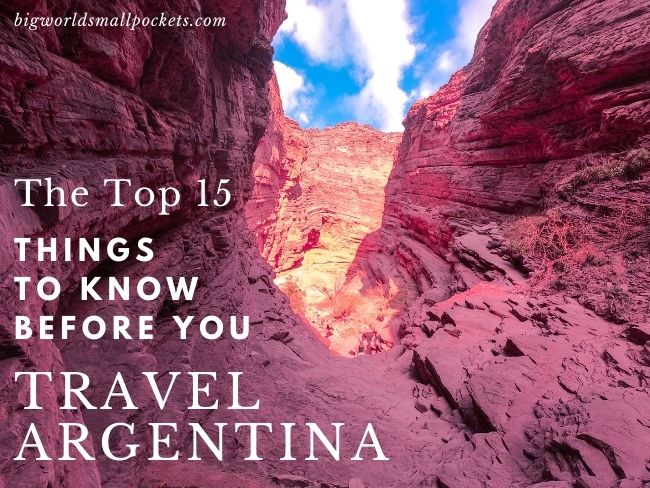
Oh Argentina, the stuff many an exotic travel dream is made of.
And yes, there’s no denying I was beyond excited when I finally realised an adventure in this much-fabled country was going to be within my grasp.
Which was back in 2019. In the good old travel days!
While I had 6 whole weeks planned to journey the length and breadth of Argentina – from Salta in the north (after I crossed the land border from Bolivia), right down to Patagonia (the most epic hiking destination) in the south – suddenly everything changed when I found out I had been shortlisted for a British Travel Award (top blog *cough cough*) and so, in order to attend this rather prestigious London event, I had to return earlier than planned to the UK and, sadly, cut my time in Argentina short.
Thankfully I did win the award (yes you are reading the words of the Best British Travel Blogger here… I know!) which made the returning home and the cutting of the time in Argentina well worth it!
And thankfully, I still did get 3 full weeks travelling across the north of the country, which was certainly enough to learn a lot about the things you need to know before you embark on a trip here.
There’s no question I’ll be returning to travel Argentina (especially explore the south of this magical land) just as soon as this annoying pandemic does one, but until then, I’m bringing you my list of the 15 crucial things to know before you hit up this destination.
Because when it comes to what to pack, the issues around money, solo female travel and how to survive as a vegetarian out here, I’d definitely got my fair share of experience!
So here goes….

Related Posts
- 5 Best Places to Visit in Argentina
- 55 Top Things To Do in South America
- Ultimate 10 Day Argentina Itinerary
This page contains affiliate links meaning Big World Small Pockets may receive a small commission on any purchases at no extra cost to you.
#1 How to Travel to Argentina?
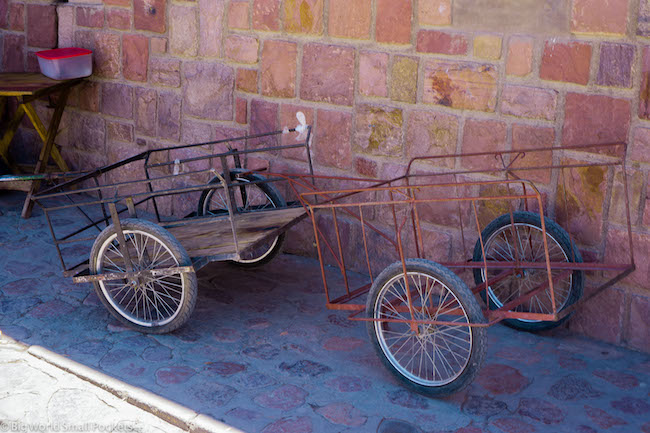
So first up, it’s probably a good idea to discuss how you’re going to get to Argentina to begin your travels there.
If you’re already in South America, then it’s good to know Argentina has pretty straightforward land border crossings with Chile, Bolivia, Brazil and Uruguay (although the quickest way to this last country is actually via a ferry crossing!)
Most of these countries have several land borders with Argentina – yes that’s just how huge all the nations are in South America – and I personally have crossed the border from near Uyuni in Bolivia as well across the border into Brazil from Iguazu Falls .
As long as you plan visas, make an early start and are prepared in advance, these borders shouldn’t present any problems.
Alternatively, if you’re arriving into Argentina from further afield, it’s likely you’ll touch down in the main international airport in Buenos Aires – Ministro Pistarini International Airport, Ezeiza (EZE).
This airport is located just over 22km outside of the city centre, but you can use Uber to get either to your accommodation in the city or to another domestic airport in the capital if you are immediately flying off to another region.
As always, I use Skyscanner to find the best deals on international and domestic flights in Argentina. See more in #7 of this article.
Just enter your details below and I'll email it you - simple!
Information will be sent to the email provided above
#2 Visas for Argentina Travel
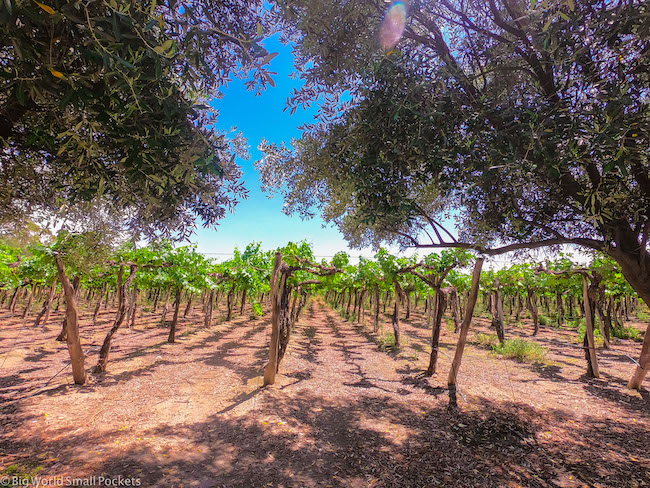
Most travellers from Europe, the UK, North America, Australia and New Zealand do not require visas to travel Argentina.
You simply get an entry stamp in your passport on arrival, which normally gives you 90 days to explore this country – a good amount of time.
After this point, do make sure you leave the country however, as immigration officials here are very strict when tourists overstay their allocated time and I heard from several travellers that have been banned from re-entering Argentina for a year after not leaving the country on time.
As always, and no matter the passport you hold, I do recommend checking your travel rights in Argentina with your local embassy or foreign office website well in advance of your intended arrival date.
#3 What to Pack?
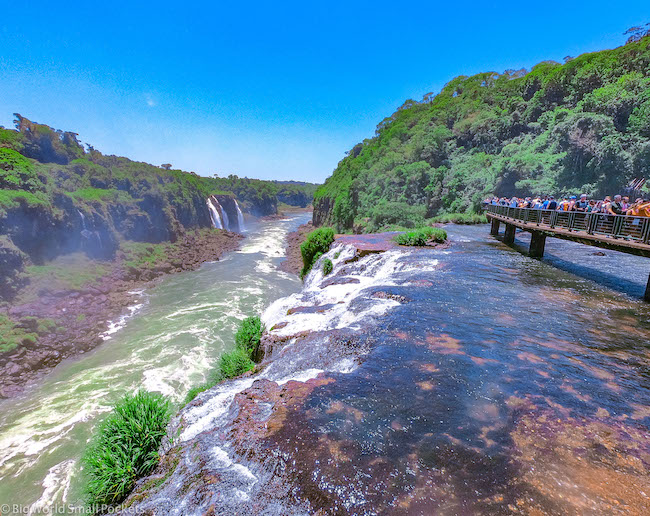
Argentina is one mighty diverse land, which I’ll cover in more detail in the next point, but suffice to say if you are travelling to several destinations in this country you’ll need a range of clothes and essentials to keep you comfortable across all climates.
This is especially true if you are heading down to the south of the country and / or you plan on doing some serious hiking here, which you certainly should FYI!
I give a complete item by item inventory of exactly what I recommend packing for your Argentinian travels in this complete checklist , so do check it out for more info.
This list was put together after my own travels in Argentina, and more broadly throughout South America, so it certainly has everything you should need, whilst also keeping things light and simple if you’re backpacking like I always am!
#4 Getting to Grips with the Diversity
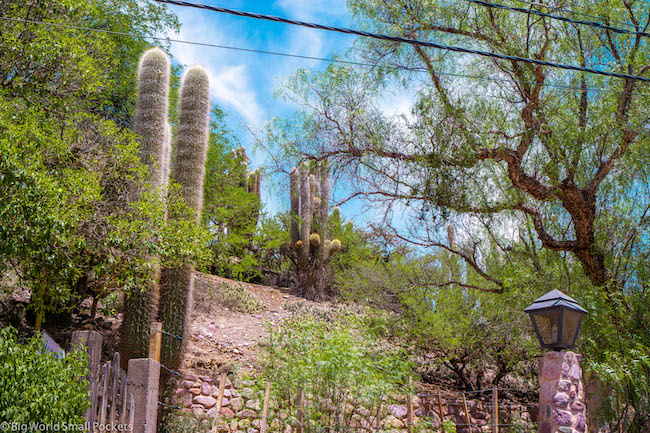
So yes, as I mentioned above, Argentina is a mighty diverse country.
Perhaps, thanks to its size and the different climates it straddles, it can actually be seen as one of the most diverse nations on the planet.
Form the dry, dusty high altitude deserts in the northern provinces like Salta to the lush, humid and tropical climates around Iguazu Falls , through to the seasonal zones like Buenos Aires and finally the great glacial lands of Patagonia, this country packs it all in.
Which is why it certainly pays to know a little about your travel plans for Argentina in advance.
Knowing which regions you’re likely to travel to, what time of year you plan to visit and what sort of activities you aim to enjoy while you’re there (such as camping and hiking etc) will help you greatly when it comes to knowing the type of weather you can expect and help you pack accordingly!
Remember forewarned is forearmed, and all wise travellers know this!
#5 How to Plan Your Trip?
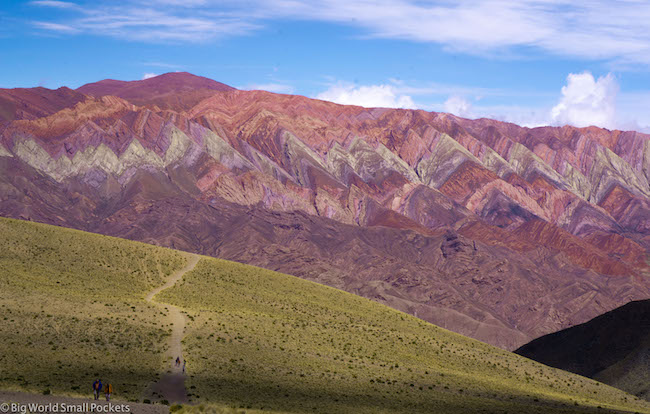
Another key part of your planning stage, should be setting out a basic itinerary for your travels in Argentina.
Now don’t freak out, I’m not suggesting here that you should have every day of your trip planned out to the nth degree (because trust me, I hate the idea of this just as much as the next freewheeling budget backpacker), but what I am saying is that I would highly advise having a rough itinerary planned out for your travels in Argentina.
Not only will this help with your packing (as outlined above) but it will also help you ascertain whether you can actually fit your intended plans into your intended timeframe!
Yes, when you realise just how long it takes to get between the different regions of this country, and just how much there is to do in each one, you may well need a rethink!
Indeed lots of people, including myself, completely overfill their Argentina itineraries and then, once they look at flights or buses around Argentina and the amount of time these take, do they quite often have to cut down their intended plans by a significant amount!
So, if you want my advice when it comes to Argentina travel plans, less is definitely more.
In Buenos Aires alone, you can easily spend 4-5 days, and that’s without 2-3 days in Iguazu Falls, 4-6 days for the Salta province, not to mention Bariloche, Mendoza and Patagonia… and that’s just the main highlights!
In terms of things you do need to book in advance of your Argentina travels, I would include guided hikes, domestic flights, long distance bus journeys and accommodation in Patagonia in this list because all of these things book up and sell out fast, especially during high season.
#6 Ideal Argentina Travel Itinerary
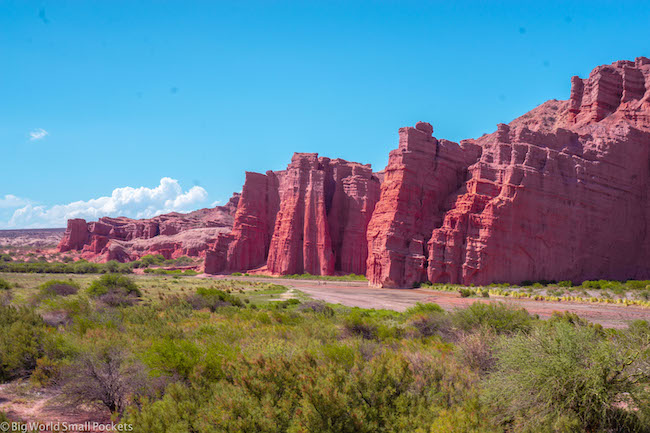
And this moves us nicely on to my crucial tip here about your Argentina itinerary.
Of course, the time you have to travel this country will drastically alter how much you can fit in, but with anything less than 2 weeks I wouldn’t even think about trying to see the whole country, instead, I would choose half of it (either the north or south) and stick to that.
Because ultimately, not trying to cram everything in will lead to you having a better trip, and isn’t that the point of travelling after all?!
Plus Argentina will always be there for you to return to if you need!
With 2 weeks in the north, I’d concentrate on Buenos Aires, Iguazu Falls, Salta Province and possibly the student city of Cordoba if you have time.
If you’re coming across to Argentina from Chile, it may make sense for you to skip Salta (which will be sad, because this region is amazing) but possibly replace it with the equally sublime lake and hiking destination of Bariloche and the famous wine region of Mendoza.
Both of these lie closer to the Chilean border and coupled with Buenos Aires, will take you from west to east across Argentina.
Otherwise, if you’re seriously into your hiking and you time your trip right (namely some point between November and February), then it’s hard to beat Patagonia as a destination in itself for at least a week or 2.
This vast and unique natural landscape boasts incredible scenery, glaciers, wildlife as well as remote outdoor action and should not be missed.
Of course, if you have longer to travel Argentina, say 3 weeks+, you can start to combine some of these itineraries to create an epic journey across the country.
Just don’t plan to do too much!
#7 Using Domestic Flights
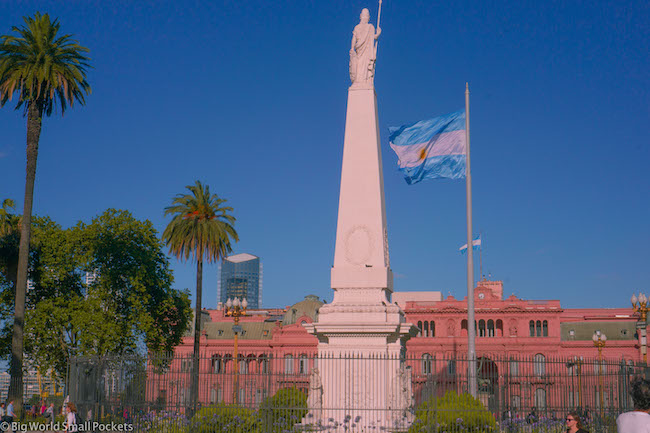
Not that I’m a fan of too much flying as regular readers will know (there is a climate crisis y’all), but I do accept, that most travellers in Argentina will take at least one domestic flight during their travels here.
And that’s simply because, as I’ve already said at least 3 times in this article (so sorry if I sound like I’m rabbiting on about the same point!) the distance between destinations in Argentina is huge.
For those on a tight timeframe, domestic flights are basically a necessity and if you’re thinking of heading to either Patagonia or Iguazu, they’re basically a done deal because the bus journeys to either of these places, from the nearest other major destinations are at least 24 hours… if not more!
Learn more about how to get to Iguazu Falls from Buenos Aires in this post I wrote.
In general, I recommend booking domestic flights at least 2 weeks in advance, more in high season, because the most popular tourist routes sell out fast.
The good news is that there are budget airlines that offer good prices on domestic flights within Argentina and you can compare them all over at Skyscanner – my fav site for finding the best flights deals.
#8 Taking Domestic Buses / Coaches
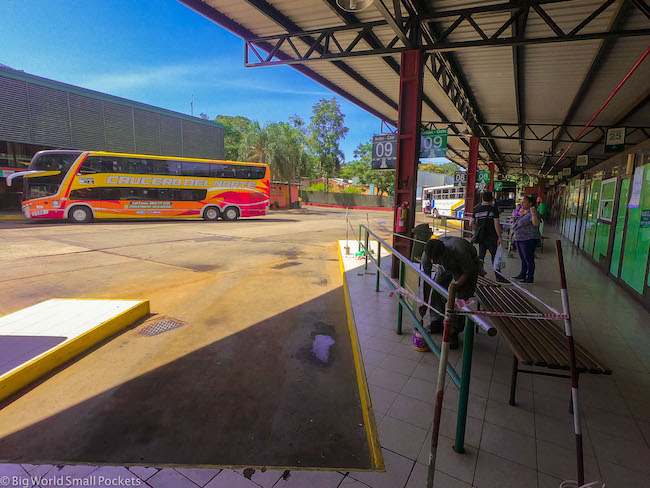
If you’re not flying, or trying not to fly everywhere in Argentina (and good on you), then long distance buses or coaches are the best way to get between destinations.
Luxury liners services destinations across Argentina and are used by many locals and travellers alike.
In general, standards are good, but you do get for what you pay for i.e. the more luxury services with comfier seats etc will cost more. I recommend paying a bit more for night buses especially.
Taking night buses is a good way to save on a night’s accommodation and shuffle you between destinations without wasting an extra day of your trip – key if you’re on a short trip and wanting to see as much as possible.
A good travel pillow as well as excellent earplugs and a decent eye mask are a must for long distance night buses in South America FYI!
I took long distance buses several times in Argentina, both during the day and night, and found the services very good and secure.
Buses can be booked in person at the central stations you’ll find almost every town. This tends to be where all the bus departures leave from, and each company (and there’s a lot) will have their own window / ticket booth where you can buy tickets.
You can also buy tickets online in advance, which I would suggest doing at least 1 week in advance of any major journeys, such as overnight voyages.
I recommend Bookaway for this purpose, as they allow you to compare flights and buses, book securely online and make everything easy to read in English!
Just remember to keep a bit of spare change as you’ll have to tip / pay for the luggage handlers to load your bag each time you get on a bus in Argentina – this is not really optional.
#9 Travel Safety Issues
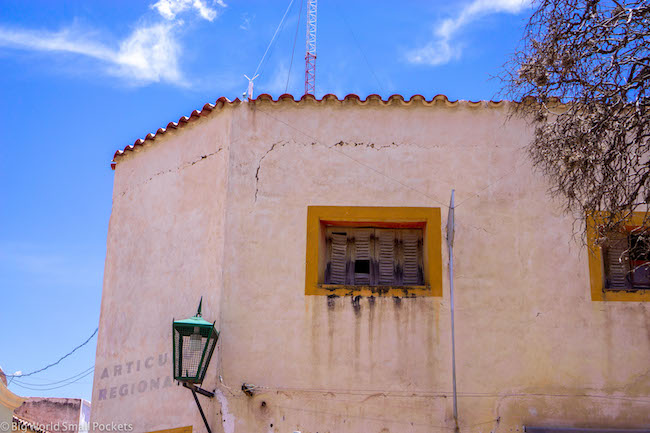
And talking about catching buses in Argentina leads me nicely onto discussing safety in this country more generally.
Throughout my time travelling in Argentina I felt entirely safe – even when staying in budget accommodation and catching overnight buses, my travels were hassle and worry-free.
The only place I would advise you maybe are a bit more wary is in major cities, especially Buenos Aires, where crime against tourists can occur, in particular robbery and mugging.
That said, I visited and walked around Buenos Aires by myself without any problems, but was careful to not have my phone out on the street or to walk around by myself after dark.
I also made sure I based myself in a more upmarket area – trendy Palermo to be specific – which I highly recommend you do too.
Taking free walking tours in this city (of which there are many) is a great way to see the capital and feel safe even as a solo traveller.
Learn more about the best itinerary for visiting Buenos Aires in this post I wrote about the city.
Buying a tourist SIM card is another great way to feel safe in Argentina because this allows you to keep in touch with people at home, use live maps to orientate yourself and also book or contact accommodation / tours / guides etc when you are out and about.
Keep your phone on you, but not in a pocket – a bumbag slung across your shoulder and front of your body is a great idea here.
In case you are the victim of any crime in Argentina, or worse have an accident or need medical assistance, then a key safety tip is to buy travel insurance for your trip to this country.
Alternatively, if you’re a long-term traveller, digital nomad or frequent remote worker seeking travel health cover, check out Safetywing’s Nomad Insurance policies.
#10 Solo Female Travel in Argentina
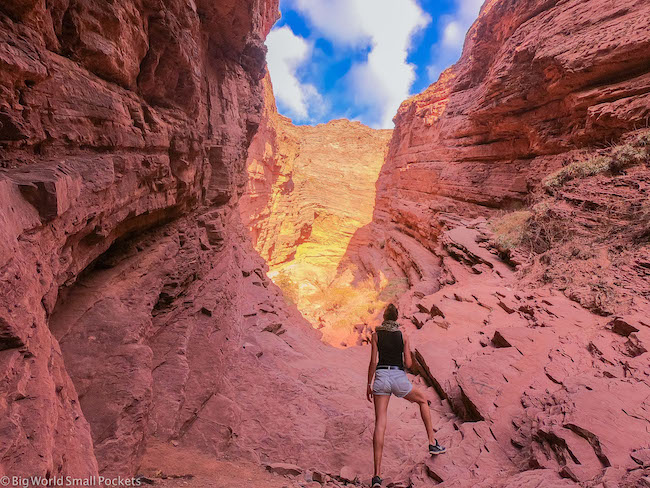
And getting a SIM card when you are in Argentina is also one of my top tip for solo females travellers in this country.
Although I don’t recommend whipping your phone out on display at every opportunity, especially not in major cities here, having a phone with you, especially when it comes to being able to navigate yourself, is a great idea.
It always makes me feel safer and knowing I can contact people wherever I am, definitely brings peace of mind.
Also be careful going out alone at night – although again this only really applies to cities – as I felt very safe wandering out for dinner of an evening in almost any smaller Argentina town I visited.
I even went out in Buenos Aires of an evening too – at one point not making it home until 6am, although that’s a different story – but was always with other people, using Uber rather than walking, and never alone.
Yes, taking an Uber is a great option after dark in the capital… or at anytime!
Picking up a bit of Spanish can make you feel safer too in Argentina, as can staying in hostels where it’s easier to get local advice and to meet other travellers.
It’s all common sense really.
If you think learning a bit of Spanish sounds like a good idea, then check out the great free language learning app – Duolingo – and also the Latin American Spanish Lonely Planet phrasebook.
I found this very helpful.
Just don’t forget the language they speak in Argentina is very different to a lot of the Spanish you may recognise elsewhere in this continent or in Europe!
#11 Costs of Travelling in Argentina
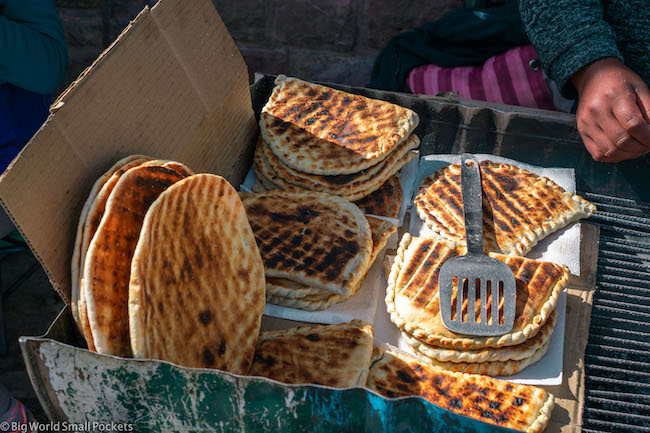
And now we come to the big one – how much does it cost to travel Argentina?
Well, honestly that depends when you are reading this post and when you are planning to visit, because the one thing you should know when you plan to travel Argentina, is that the economy of this country has a habit of being a bit unpredictable.
When I visited in 2019, they were again suffering a terrible economic recession, which tends to happen more regularly than it should here.
The Argentinian Peso was almost in freefall and while this made the country very cheap foreigners, it was very hard on local people.
Many restrictions had been bought in, which meant accessing money could be difficult for all parties, which leads me into my next point.
#12 ATM Fees
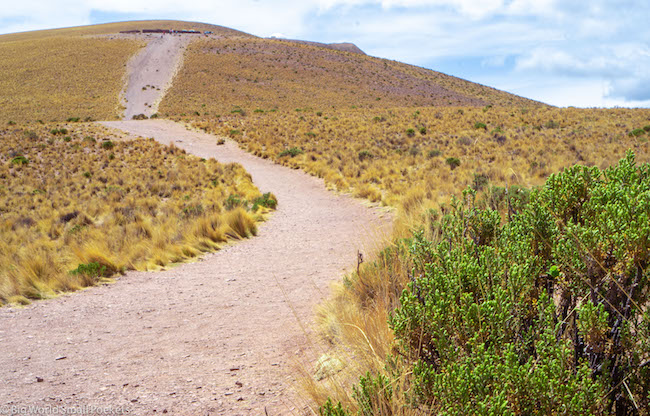
Because of the highly erratic and worrying value of the Argentinian Peso when I was in the county, there were big restrictions on how much local people could withdraw from the ATM on a daily basis.
At one point this was really low, barely enough to survive on
In some places, this also translated to tourists, which meant many travellers found themselves without enough cash to pay for their accommodation etc.
My tip therefore, is to strongly check the state of the Argentina economy before your travels and also to familiarise yourself with any restrictions there may be in advance.
Bring cash, and plenty of it too, as that never fails.
It’s also useful to know many Argentina ATM machines charge foreign cards a crazy fee to use them.
#13 Western Union App
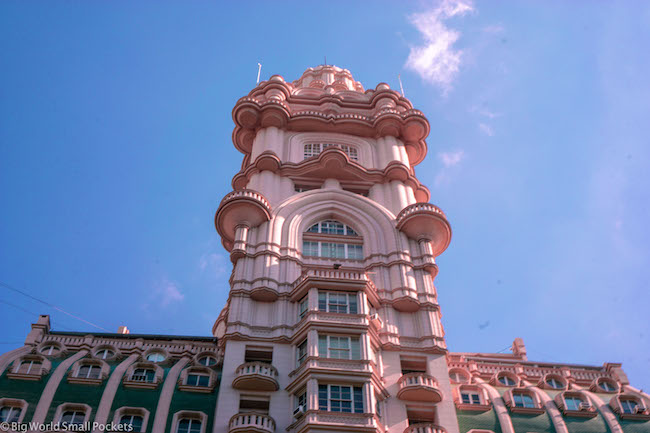
For this reason, and because they gave incredible rates when I was there, one of the best tips I can give for when you travel in Argentina is to download and use the Western Union app .
This is a global app that worked brilliantly in Argentina and was used by almost every traveller on the circuit when I was there because the news of it spread like wildfire!
The basic way to use the app is to load currency from your bank account onto the Western Union app, convert this from your home currency into Argentinian Pesos at a great rate, and then go into a Western Union office in Argentina to collect your cash.
The fees are much lower, the amount you can take out much larger than the ATMs and the exchange rate is better too.
You’re welcome! …. and no, this is not sponsored, it’s just a great piece of advice!
#14 Drinking
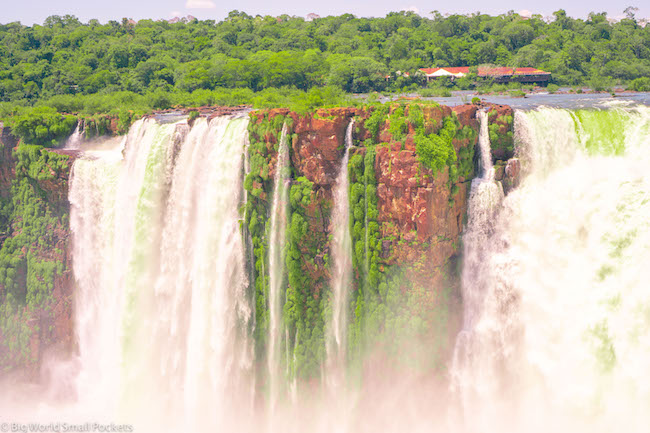
You can’t really come to Argentina and not try at least some of the amazing wine this country is famous for, preferably within the place it’s made.
Mendoza is the main spot, but the smaller town of Cafayate is also delightful.
Both allow you to rent bikes and cycle to nearby vineyards to savour the produce with some seriously epic natural backdrops.
Craft beer is also taking hold in Argentina and trendy Palermo in Buenos Aires is the spot to try many of the news ones.
Otherwise, the other local tipple is Fernet – lethal stuff that is usually served after a meal but may also be served mixed into coffee.
You can blame the Italian influence in the country for this one!
It’s good to know tap water is safe to drink in most parts of Argentina.
That said, I still like travelling with my trusty Lifestraw Filter Bottle , an amazing bit of travel technology that makes it safe to drink tap water anywhere in the world by filtering out 99.9% of harmful bacteria.
#15 Eating & Dietary Requirements
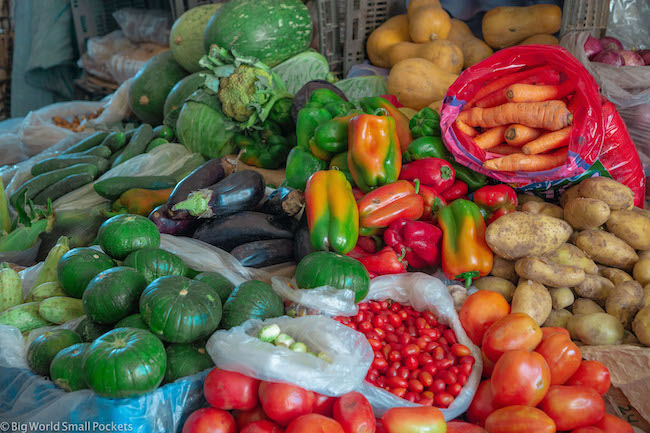
And finally we come to the food factor!
Of course Argentina is known for its steak and if you eat the meat you should probably try this when you are here.
If you don’t however, you need not fret.
I found it easy to travel in Argentina as a vegetarian, especially in major cities and towns where the food scene is quite progressive.
Bread is served with most meals, so gluten-intolerant people however, may find they have a slightly harder time.
Local markets and supermarkets sell an array of fresh products and western goods, which means you can generally get your hands on whatever you need!
The Italian influence in this country also means Italian food here can be sensational. Some of the best pizza I ever had was in the capital, BA, no joke!
PIN IT TO PINTEREST!
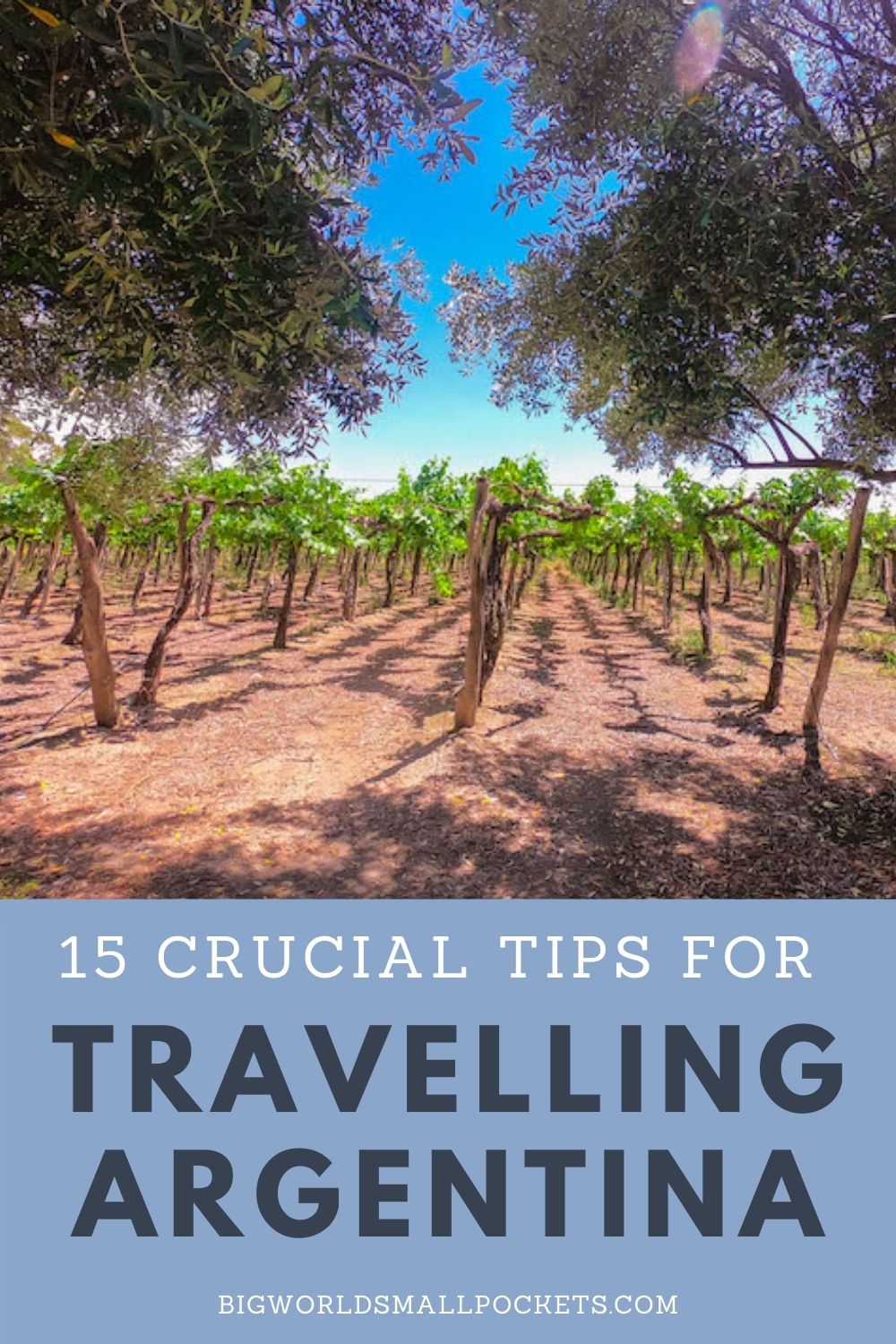
So there we have it, my list of the top 15 things to know before you travel Argentina.
Have you visited this epic South American country?
Do you have any advice to add to this list?
Please join the discussion in the comments box below…
Creator of Big World Small Pockets, Stephanie Parker is a travel addict! Originally from Jersey in the Channel Islands, Stephanie adventures the world collecting tips, advice and stories, to share with a smile
Leave a Reply Cancel reply
Your email address will not be published. Required fields are marked *
This site uses Akismet to reduce spam. Learn how your comment data is processed .

- Single ticket purchase
- Return ticket purchase
- Bus delays in Croatia
- Luggage safety
- Luggage storage at bus stations in Croatia
- New Zealand
- United Kingdom
- Airports in Indonesia
- Airports in Japan
- Airports in Laos
- Airports in Malaysia
- Airports in Philippines
- Airports in Thailand
- Airports in Vietnam
- Airports in Australia
- Airports in New Zealand
- Airports in Albania
- Airports in Austria
- Airports in Belgium
- Airports in BiH
- Airports in Bulgaria
- Airports in Croatia
- Airports in Czechia
- Airports in Denmark
- Airports in Finland
- Paris Airports
- Airports in Germany
- Airports in Greece
- Airports in Hungary
- Airports in Ireland
- Milan Airports
- Rome Airports
- Airports in Montenegro
- Airports in Netherlands
- Airports in North Macedonia
- Airports in Norway
- Warsaw Airports
- Airports in Portugal
- Airports in Romania
- Moscow Airports
- Airports in Serbia
- Airports in Slovakia
- Airports in Slovenia
- Airports in Spain
- Stockholm Airports
- Airports in Switzerland
- Airports in Turkey
- London Airports
- Airports in Ukraine
- Airports in Canada
- Airports in Mexico
- Airports in the USA
- Airports in Argentina
- Airports in Bolivia
- Rio de Janeiro Airports
- São Paulo Airports
- Airports in Chile
- Airports in Ecuador
- Airports in Paraguay
- Airports in Peru
- Airports in Uruguay
- Airports in Venezuela
- Best Airports in the World

Why Visit Argentina
- October 18, 2021
- Places to Visit , Travelling Argentina
Argentina, The Land of Silver , is a country known for its dances, good food, and magnificent nature. The second-largest country in South America stretches among various climates and diverse landscapes. Although it may not be as popular among tourists as its neighbours Brazil and Peru, the home of the tango and dulce de leche has a lot to offer and is well worth finding its way to your bucket list. If you are still making up your mind or are curious about what’s there to see in Argentina, perhaps the following reasons why visit Argentina will help you start planning your trip!
The country’s capital Buenos Aires is often dubbed as “the Paris of South America”, the streets of this metropolis consist of European-inspired architecture and beautiful boulevards. The city’s caffe and wine culture will amaze everyone.
Cordoba is a beautiful university city and the home to the UNESCO World Heritage site . This charming city used to be a colonial capital, and it was named by its founder after Cordoba, Spain.
Mar del Plata is an ideal destination for those who wish to lay down, relax and enjoy their vacation. Situated on the Atlantic coast, the city is famous for its sandy beaches and casino life.
San Carlos de Bariloche , or simply Bariloche , is a small town situated on the banks of a glacial lake in Patagonia . This charming town offers a stunning mix of urban architecture and splendid works of nature.
Although a large country, Argentina is well-conected to multiple domestic and international destinations . Among the most popular ones are: Buenos Aires – Mar del Plata , Buenos Aires – Puerto Iguazu , Rosario – Buenos Aires .
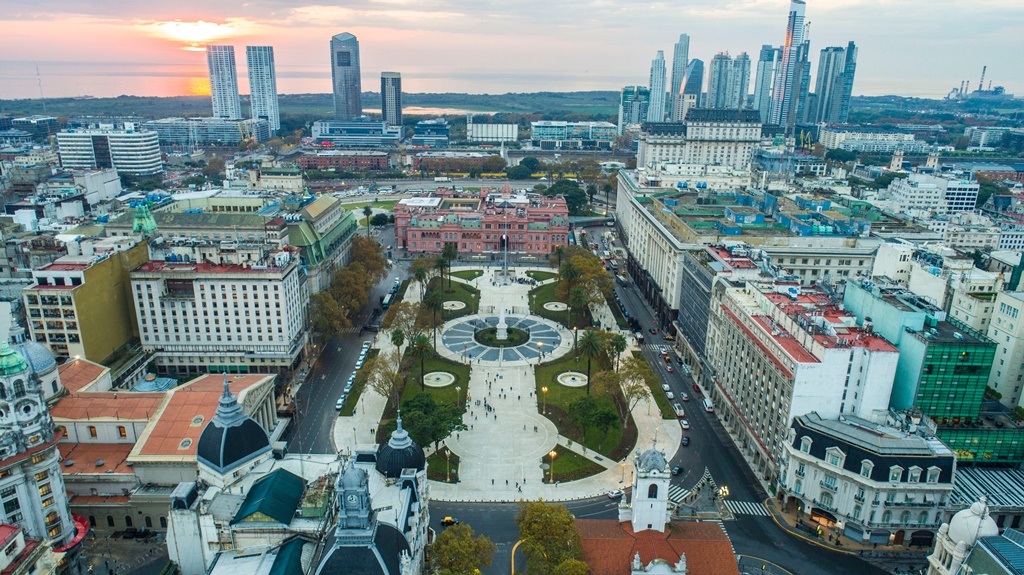
Buenos Aires
The landscapes
Argentina stretches through various climates, which means that the landscapes also vastly vary. However, what speaks more of Argentina’s natural beauties is the fact that there are in total 35 national parks in the country .
Among the most famous ones is the Iguazu Falls National Park . Bordering Brazil, the scenery the gigantic waterfalls make is breathtaking. There are several walking trails in the park for visitors to explore and get to know the area.
However, the most famous sights and scenery are situated in remarkable Patagonia . The land of glaciers, glacial lakes and majestic beauty is extremely popular with tourists. Furthermore, Patagonia is not the only region with beautiful hidden gems. The Pampas , the seemingly never-ending grassland, and the beautiful Atlantic coast are also worth visiting.

Iguazu Falls
The land of football
If there is one thing almost everyone in the world would know about Argentina, it would be its football culture . People of all ages play it – children, adults and the elderly.
The national football team is well-known around the world as one of the strongest and the best national football teams in the world. They have played in five World Cup finals , have several times won Copa America , and have won the Olympic football tournaments twice . Argentina is also the homeland of two of the greatest players in the history of football, Lionel Messi and Diego Maradona .
Because football is such an important part of people’s lives, finding yourself in Argentina during an important football match would open the door to a completely new experience of enjoying the game of football. Surely take a chance if offered to participate, as you might have a lot of fun.

Caminito Street, Buenos Aires
The cuisine
Argentina, its history, its food and its culture have been greatly influenced by the European and Native American cultures and traditions.
Those who have a sweet tooth will find themselves in heaven. Argentina – especially Bariloche – is famous for its production of chocolate . But that is not all there is to Argentine cuisine. Some of the most popular traditional and national dishes are :
- Dulce de leche : caramelised condensed milk. Dulce de leche can be used as a spread with toast or bread. Those who like extra sweet can enjoy it just by eating it with a spoon.
- Asado : the Argentine variation of barbecue is gastronomy and a social event. Different types of meat are prepared this way, but beef is used the most.
- Chimichurri : a type of salsa that is sometimes also used as a marinade. It is often compared to pesto genovese , and it is mostly served alongside asado.
- Vino : Argentine wine is world-famous as one of the best there is. Whether you prefer red, white or rosé wine, you will surely find something to satisfy your palate.
- Empanadas : literally “wrapped in bread”, these delights can be found with any type of filling. The most common are meat varieties, but many people fill them with vegetables, too.

Dulce de Leche
Last, but not least on this list is a world-famous dance, tango . This passionate dance originated in the streets of Buenos Aires and Montevideo among the lower class. Its influences were various, the elements of African, Cuban and European dances can be found, as tango is a product of the mass immigration in the 19th century.
The dance quickly spread throughout the world and became one of the most popular dances. The traditional, authentic tango is still alive and well in Argentina. It is danced in the streets , but there are also many performances by professional dancers organized for tourists.
Like football, the dance is deeply rooted in Argentine culture. It is a product of the country’s rich history and meeting of diverse cultures and backgrounds. It is not only the professionals who dance, but ordinary people too. The choreographies – spontaneous or rehearsed – are magnificent explosions of energy that are the best when experienced in their authentic form.
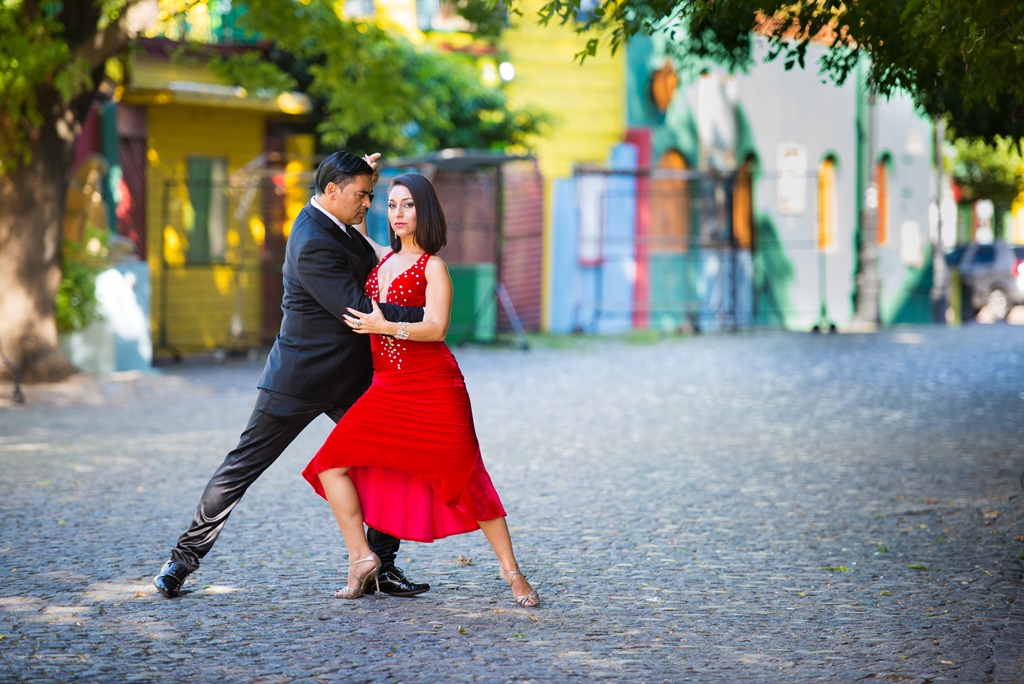
Argentine tango dancer couple
Related Posts

Leave a Reply Cancel reply
Your email address will not be published. Required fields are marked *
10 Perfect Reasons To Visit Argentina In 2023

Your changes have been saved
Email is sent
Email has already been sent
Please verify your email address.
You’ve reached your account maximum for followed topics.
10 Least Stressed States In The US, Ranked By Stress Score
10 state parks in washington with scenic hikes, 10 underrated small beach towns in florida to kick the winter blues.
Argentina is a diverse country in South America , filled with many must-see destinations . With beaches, bustling cities, mountainous regions, some of the world's best food and wine, and deeply-rooted history, there are many reasons why travelers should have already visited Argentina. However, for those who are late to the game, there's no reason to delay a holiday to this fascinating country any longer. Here are 10 perfect reasons why 2023 is the year to finally visit Argentina.
10 The Barbecue
When speaking of Argentinian Barbecue, it's not the typical US-southern barbecue one might be thinking of. Instead, it's "Asado," which is grilled meats Argentinian style. The reason beef from Argentina is notoriously superior is that the cattle are grass-fed, unlike most American cattle, which are grain-fed. This leads to high omega-3 content and an extraordinarily rich flavor and will leave hungry visitors wanting more (and more, and more). No visit to Argentina is complete without eating classic Argentinian steak!
RELATED: 10 Best Places To Eat In Buenos Aires, Argentina
9 The Malbec
Similarly to the barbecue, no visit to Argentina is complete without sipping a glass of Malbec. The Mendoza region of Argentina is notorious for producing the world's finest Malbec. Though Malbec originated in France, 75% of the world's Malbec comes from Argentina, and it just tastes better there (especially when sipped alongside some Asado). For visitors who have a few extra days in their schedule, paying a visit to Mendoza is a great way to sample some local wines, but for those who don't, Malbec will be on nearly every menu throughout the country.
8 The Origins Of Tango
Dance like no one's watching is taken to a whole new level with Argentinian tango. Originating in the working-class neighborhoods of Buenos Aires, the roots of this dance have Black and Creole influences and lie in African candombe (a style of drumming and dance that first surfaced among young people of African slave descent in the late 18th century), Cuban habanera as well as waltzes and polkas. Today, visitors can catch tango shows all around the country, specifically in the bustling city of Buenos Aires.
RELATED: Ushuaia, Argentina: Why You Should Visit The City At The End Of The World
7 Patagonia
Looking for a city escape? Patagonia is a southern region in Argentina and is shared by the neighboring nation of Chile. While each country has its perks for viewing, the Argentinian side is larger, spanning over 1,000 miles, giving more space to explore adventurous travelers. Enjoy hiking, seeing wildlife like elephant seals, and some seriously stunning views of snow-capped mountains and serene lakes. Patagonia is best explored over a few days, where many visitors choose to camp.
6 The Street Food
Not only is Argentina known for its barbecue, but for those who don't want to waste time wining and dining, the street food is ample and delicious. Street food staples include empanadas, chorpian (a grilled chorizo sandwich that is simply divine), lomito (a steak sandwich), and even pizza. That's right: Argentina has a ton of pizza and Italian food in general. This is because Argentina is home to many Italian immigrants from the early 1900s, with today about 62.5% of Argentinians coming from Italian heritage. Argentina has the second-largest Italian population outside of Italy, after Brazil, so make sure to try some Milanese, pizza, pasta, and more when visiting.
5 The Affordability
Argentina is surprisingly affordable. Sadly, this is because the country has been facing a monetary crisis since 2018, where the Argentine peso has been severely devalued due to high inflation, and an intense decline in the value of the currency at a local level, amongst other domestic and international factors. This causes the exchange rate to work out for many visitors, but to be a responsible traveler, try to avoid big-name chains, and give back to locals as much as possible when visiting this vibrant country.
4 The Charm
Like many Latin American countries, Argentina is adorably charming. From friendly folks to colorful cities, quaint eateries, to incredible architecture. There's something special about visiting a place where a smile feels infectious due to the general atmosphere. Argentina is exactly that, and there's a reason why so many visitors fall in love with this charming country.
3 The "Little Paris" Of South America
The city of Buenos Aires has been dubbed the "Little Paris" of South America due to its prevalent European-styled charm. The neighborhood of La Recoleta , in particular, is filled with French-style residences and palaces, much thanks to a large influx of French immigration in the 1840s. The excessive amount of cafés, cobblestone streets, and of course, fine wine helps make visitors feel like they're in Paris, as well.
2 Iguazu Falls
One of the new 7 wonders of nature is Iguazu Falls, which sits on the border of both Brazil and Argentina. While some visitors prefer the Brazillian side and others prefer the Argentinian side , it's safe to say each side has its perks. The biggest perk on the Argentinian side is that visitors can get closer to the falls themselves and enjoy a boat ride throughout, getting up close and personal with this wonder of nature. Iguazu Falls are not the largest waterfall in the world. However, they are the largest waterfall system. Beware: in high season (December-March); they get absolutely packed with crowds!
- Pro-tip: Nearby Iguazu Falls is the meeting of 3 borders: Brazil, Argentina, and Paraguay, which is absolutely worth a visit if in the area.
1 Their Love For Football (Soccer)
Argentina has been in the news recently for winning the FIFA World Cup 2022 . Walk along the streets of Buenos Aires, and see Messi jerseys being sold everywhere. The nation's love, admiration, and pride for their national football (soccer) team is loud and clear, and it's a fun sense of community to be a part of when visiting Argentina. It is common to see young Argentinians playing soccer on the streets at any hour of the day; it's simply a part of the culture.
- Destinations
- Search Please fill out this field.
- Manage Your Subscription
- Give a Gift Subscription
- Newsletters
- Sweepstakes
19 Reasons to Visit Buenos Aires
With stunning architecture, fashion, and a booming culinary scene, Buenos Aires is a city that should be be on your radar.
Words alone could never capture the charm of Buenos Aires. Its restaurant and art scenes are as vibrant as ever, with new venues opening regularly. And its historic cafes are always alluring — not to mention ideal for some prime people-watching — while its speakeasies remain impossibly cool. It's not an exaggeration to say Buenos Aires has something for everyone — that is if you're willing to look for it.
Buenos Aires is a dynamic place whose sophistication and fashionable citizens echo those of other chic capitals like Milan, and where reinvention is as valued as preservation. Buenos Aires is proud of its literary heritage — heroes new and old, like Silvina Ocampo, Jorge Luis Borges, and Samanta Schweblin — and it shows in its lively bookstores and landmarks like the Biblioteca Nacional . The city also loves its steak — especially one paired with an Argentinian Malbec, which almost always guarantees a great meal.
If those aren't enough reasons to entice you to go, here are a few more.
Incredible Steak
Argentinians take their beef seriously, as evinced by the enormous prime cuts on offer in the country's parrillas (steakhouses). Just don't expect the waiter to plunk down a steak knife and sauce next to your plate and call it a day. Porteños smother their medium-cooked ojo de bife (rib eye) or vacio (flank steak) with colorful salsas like criolla , made with tomato, onion, and red, green, and yellow bell peppers, or chimichurri , made with olive oil, garlic, oregano, and parsley. Slide into a table at Don Julio in Palermo Viejo and order the entraña (skirt steak) to experience this delicious part of Argentinian culture firsthand.
El Ateneo Grand Splendid
At the turn of the millennium, the 1,050-seat Teatro Grand Splendid–opened in 1919 and modeled after the great opera houses of Europe–was refurbished and converted into what some have called " the world's most beautiful bookstore ." It now welcomes roughly a million visitors annually. Here, amid gilded balconies, marble columns, and the original ceiling fresco, you'll find more than 200,000 titles (mostly in Spanish), along with thousands of DVDs, CDs, and vinyl records, a coffee shop, and live piano music on the same stage where tango legend Carlos Gardel once performed.
A Strong Cafe Culture
You shouldn't visit Buenos Aires without dropping into one of its old-school cafes, embodiments of the city's status as a literary hub. Bar El Federal , an institution in San Telmo dating back to 1864, has window seats that beckon you to people-watch while nibbling on tapas. In Palermo, the salmon-hued El Preferido de Palermo nods to its past life as a grocery store — and haunt of Jorge Luis Borges, who grew up across the street — with hanging hams and stacks of canned pumpkin.
Speakeasies
At Frank's , in Palermo Hollywood, eager guests must learn and use the secret password to gain entrance to a darkened hallway with a telephone booth at the far end. When the phone rings, the guests must pick up the receiver and enter a 4-digit number. This opens the back panel of the booth, revealing a swanky bar where the cocktails are artfully mixed, if a tad overpriced. At Isabel in trendy Palermo Soho, a limited number of tables means you'd better sign up for the guest list.
Boutique Luxury Hotels
Stylish options abound for hip travelers in search of something better than what the chain hotels have to offer. Legado Mítico , in Palermo Soho, offers 11 rooms themed around distinctive personalities in Argentinian culture including Victoria Ocampo , Jose Hernandez , Benito Quinquela Martín , and José de San Martín ,
This sensual dance is as much a part of Argentina's identity as fútbol and gauchos . So don't miss your opportunity to watch a show, and maybe learn a few steps, in the city where it all started. Milongas , or dance halls, are your best bet and you'll want to book seats in advance. Our picks: La Catedral , a no-frills joint in Amalgro that's great for beginners, and La Viruta Tango de Solanas in Palermo, where the party lasts all night.
Next-generation Coffee
Sure, most of the coffee you'll find in the classic cafes appears stuck in the past. But if you're willing to wander off the beaten path, you'll be well rewarded with creative coffee. In the Mercado San Telmo , amid the spices and vintage toys, is Coffee Town — former journalist José Vales' ode to Central American coffee — where beans from Colombia and Brazil, along with his country's own output, are on offer. In upscale Belgrano, look for All Saints Cafe , where the Colombian espresso is deliciously bold.
It's hard to believe there was ever a time when Argentina wasn't on wine lovers' radars. But it was less than 25 years ago that the country became one of the world's fastest-growing exporters of wines, especially Malbec. Mendoza, near the stunning Andes Mountains, is Argentina's most important wine region and worth a two- or three-day visit. In the meantime, match a glass of red with your meal in Buenos Aires — you won't regret it.
In addition to the airy, all-white ambiance of this Palermo staple , you'll enjoy the seasonal menu, which allows customers to assemble their dishes any way they want, like a picnic. Each day, the shop offers a selection of sandwiches and healthy salads (think quinoa with cherry tomatoes).
World-class Design
Brazilian Modern may get all the love, but Buenos Aires is a force to reckon with in the contemporary design world. The annual Feria Puro Diseño remains the city's foremost design fair, where many of Argentina's brightest talents showcase their cutting-edge work to collectors and retailers from around the world.
Fashion Week
Every year, fashion lovers flock to BA's Fashion Week . Creativity is key, and each designer is distinct. In past editions, Augustina Dubié's "Mundo Ordinario" (Ordinary World) collection celebrated strong women with reinvented staples like trench coats and denim jackets, while Marcelo Giacobbe's collection of 10 looks, inspired by El Bosco's "The Garden of Earthly Delights," focused on garments "floating" over the body.
You might not think to explore Avenida Independencia, a bustling street lined with shops and cafes in San Cristóbal. But Bar de Cao , which dates back to 1915, is worth a visit. With its antique wooden cabinets, original marble counter, and etched-glass windows, it feels like stepping back in time. The vibe is super laidback, so make yourself comfortable with a café con leche and stay awhile.
Casa Rosada
This storied mansion on Plaza de Mayo — now the seat of Argentina’s national government and president's office — is a treat for tourists. Legend has it that the building was painted using cow's blood because they thought it would hinder the paint from peeling. Another story asserts the hue represents the red and white of Argentina's two original political parties. It was from a second-floor balcony that First Lady Eva Perón rallied hundreds of thousands of supporters during her husband's first presidential term, from 1946 to 1952. Today, curious visitors can take free guided tours on Saturdays or Sundays.
Recoleta Cemetery
stOpened in 1822, this labyrinth-like cemetery is a feast for the eyes, with almost 4,700 dazzling mausolea designed by some of the city's most renowned architects and sculptors. More than 90 of these masterpieces are listed as national historical monuments. The Duarte family vault, Eva Perón's final resting place, is a popular attraction, but look out for the Art Nouveau tomb of Rufina Cambaceres. A white-marble statue depicts the doomed teenager with her right hand on the vault's iron door as if she were about to open it.
Graffiti Mundo
The graffiti in Buenos Aires says a lot about the city, and Graffiti Mundo , an organization dedicated to preserving and championing Porteño street art culture, brings it to life for you. Book a street tour of Colegiales and Palermo Hollywood, where you'll get a sense of the movement as it's happening now, along with an intro to the city's history of "expression in the streets." The group also offers private tours that take visitors through the most colorful and art-filled barrios of Buenos Aires, often stopping in galleries along the way. Be sure to book online in advance.
Teatro Colón
This 1908 opera house is an architectural gem, with a gilded salon reminiscent of Versailles, a horseshoe-shaped main hall revered for its acoustics, and Italian and French elements that reflect the influences of the original architects. The building took around 20 years to construct, and it was completely refurbished between 2006 and 2010. If tickets are sold out — which wouldn't be a surprise considering that legends like Caruso, Pavarotti, and Carreras have performed here — then opt for a guided tour or sit through a rehearsal.
Jardín Botánico de la Ciudad
Landscape architect Julio Carlos Thays designed this gem of a garden , which opened in 1898. With more than 1,000 tree and plant species, reproductions of Greek and Roman sculptures, and a visitors center that looks like an English castle, it's a welcome respite from the hustle and bustle you'll find around nearby Plaza Italia.
Get your jazz, blues, funk, and soul fixes at this spare music space under a restaurant and wine bar. Just two blocks from Plaza Serrano in Palermo Soho, the club serves a first-rate selection of cocktails and nibbles, not to mention some colorful programming. On Saturday, you may find singer Delfina Oliver interpreting standards by Gershwin and Porter, while Fridays often feature global luminaries like trombonist Delfeayo Marsalis or pianist Tomoko Ohno.
Latin American Art
Considered by many to be one of the best art museums in South America, the Museo de Arte Latinoamericano de Buenos Aires (MALBA) is not to be missed. Featuring Argentine innovators like Antonio Berni and Luis Felipe Noé, as well as legends like Frida Kahlo and Diego Rivera, the collection here is guaranteed to move you.
Related Articles

What I Wish I Knew Before Visiting Argentine Patagonia
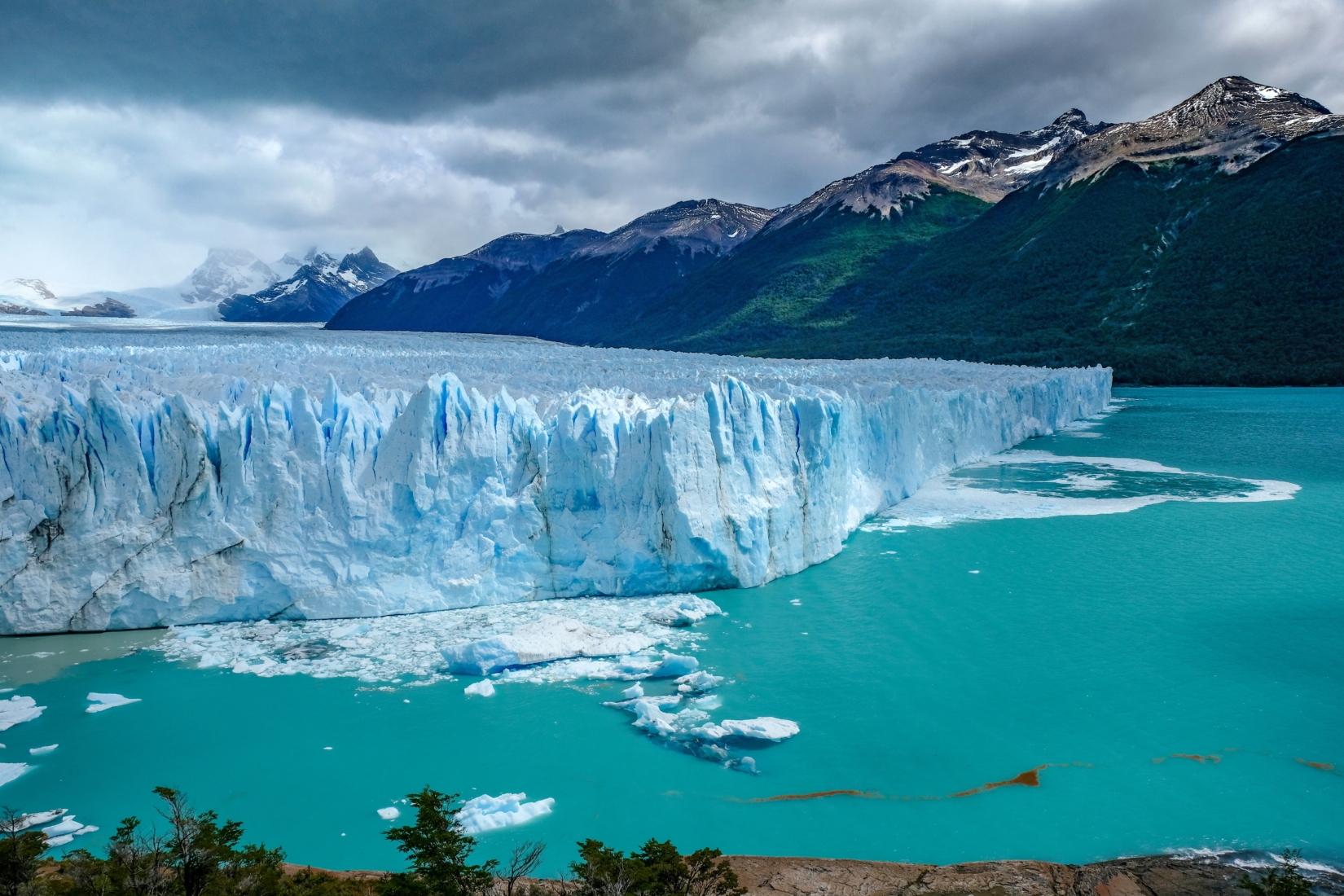
Argentine Patagonia is a land of true extremes, of sights and sweeping vistas that you need to see to believe. Here, the mountain tops of the Fitz Roy skewer the clouds. There, the rolling pampas are dotted with sheep farms. Suddenly, killer whales splash through the oceans. Then, a colossal ice sheet fragments from the Andean glaciers on high. If we could design a region for adventure travelers, it really would look something like Argentinian Patagonia!
This ultimate guide to Argentine Patagonia offers a look at this amazing corner of South America. It ranges from an introduction of the lake district of Bariloche and the penguin-spotted channels of Tierra del Fuego to advice on the best activities and must-see attractions in Patagonia and what to pack for your trip. We’ll also cover details about the best times to visit, what the weather is like, and the practicalities of getting there. Let’s jump into it!
Inside this Guide
My experience in argentine patagonia, where is argentinian patagonia, how to get there, when is the best time to visit, what to pack for argentine patagonia, top travel destinations while visiting argentinian patagonia, must-see attractions in argentinian patagonia, top hikes in argentinian patagonia.
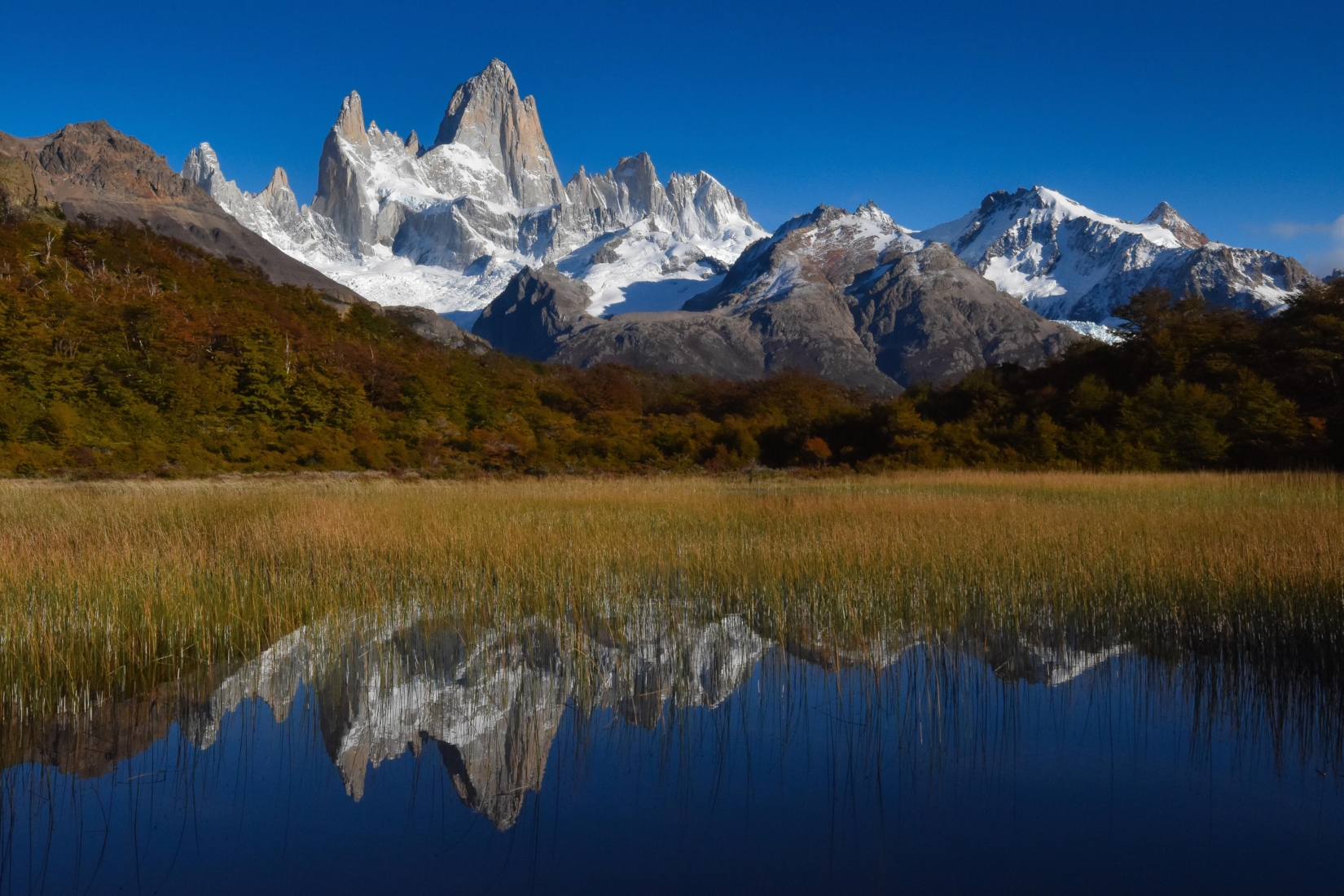
Just a mention of the name Patagonia is always enough to get the hairs standing on the back of my neck. And if you ask me about the Argentinian part of that great wilderness, I begin to recall images of the jagged Fitz Roy , the ice-shaking Perito Moreno Glacier, the dramatic landscape of Tierra del Fuego, and the inky lakes of Bariloche.
I’ve now trekked and traversed these lands and wonders extensively. But the former sense of majesty and mystique that visiting Argentinian Patagonia inspired has never fully left me. Whenever I pack the crampons and lace the boots for a trip to this frontier of South America, I fizz with a mix of excitement, joy, and apprehension, all fueled by the prospect of returning to what I now know to be unquestionably one of the most savage, yet sublime, parts of the planet.
The magic of destinations like Patagonia helped me to make a career out of travel. I’m so fortunate to have founded The Explorer’s Passage , the world’s premier adventure travel company. We pride ourselves in assisting travelers to experience the most unique corners of the planet through meticulously executed trips. Join us for a jaunt to Argentina and rest assured we’ll take care of all the details so you can enjoy your trip in the most intimate, exhilarating ways possible.
Argentinian Patagonia is a seriously vast region. It encompasses more than a quarter of the latitudes of South America as a whole, running just shy of 1,000 miles (1,609 km) from the winding Rio Negro (generally accepted to be its northern border) to the fragmented isles of Tierra del Fuego on the cusp of Cape Horn.
The greater region of Patagonia is shared between Argentina and Chile. The land area of both is similar from north to south but the Chilean side is nowhere near as wide. It encompasses a long run of the snow-capped Andes and a sliver of coastal plains before bending into the Magellan Strait. The Argentine side, meanwhile, hits nearly 500 miles (805 km) at its widest point, rolling from alpine lakes and glaciers to barren pampas and steppes. If you’re also interested in exploring the Chilean side of Patagonia, check out our W Trek Adventure !
The extreme far Southern Patagonia is a fragment of the Isla Grande de Tierra del Fuego. That, in turn, is entirely separated from the Argentina mainland, sharing a sole land border with Chilean Patagonia to the west. There are also a number of offshore territories that belong to the region, including the seal-spotted Isla de los Estados, which is considered to be the very end of the Andes mountain chain within southern Patagonia

As you might imagine, getting to Argentine Patagonia, this far-flung corner of South America, isn’t as simple as jetting into Buenos Aires for a night in the tango halls. But it’s also not super difficult. The reason? Flights. While the majority of international links into Argentina still head straight to the capital’s Ministro Pistarini International Airport (also known as Ezeiza International Airport), there are plenty of domestic connections that help you make the hop – and it’s still a hefty hop, mind you – into Patagonia.
The most popular air route services to get to Argentinian Patagonia from Buenos Aires are the ones that go direct to El Calafate (taking just over 3 hours) and to the stunning mountain resort of Bariloche (taking 2.5 hours). You can also go straight to Ushuaia, the most southerly city in the world, in as little as 3.5 hours.
Prefer traveling via land? Don’t worry – the old-school way of getting to southern Patagonia is still very much alive. Buses link to Bariloche from Buenos Aires in around a full day’s travel, though the ride is a real adventure going straight across the heart of the country, providing nice views while getting to Argentine Patagonia.
There are others that make the long road trip down the iconic Ruta 40 (one of South America’s most breathtaking highways) from Bariloche to the trekking hub of El Chaltén, usually taking upwards of 25 hours in all, providing amazing views and scenery as you travel to Patagonia.
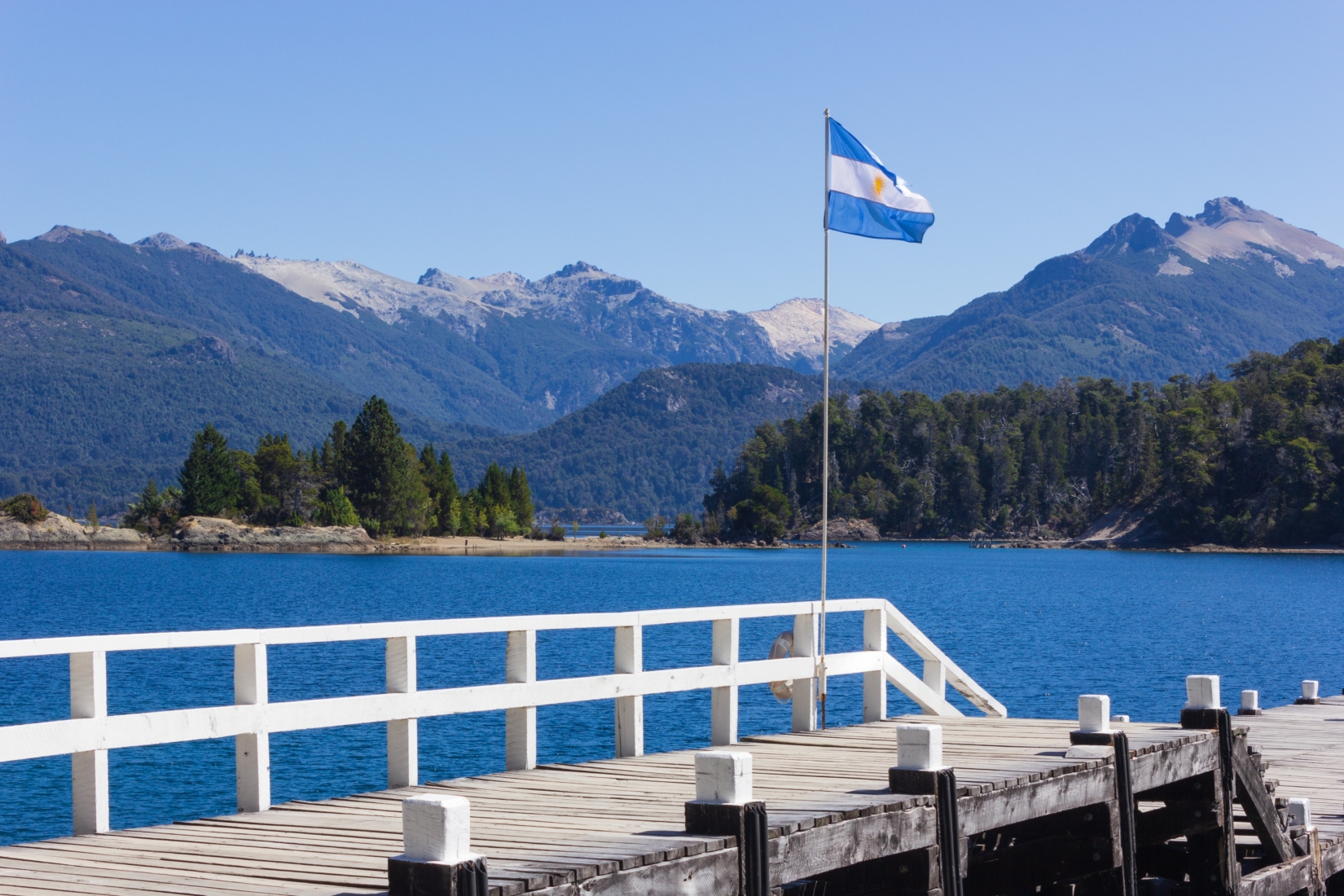
It’s hard to predict what the weather will be like in regions like Patagonia that sit at the very ends of the Earth. However, there is a clear four-season pattern that can offer some insights into the sort of conditions you can expect during certain months to give you a good idea of what to pack according to the time of your trip to Argentine Patagonia. Let’s take a closer look…
- Winter (June to August) – Winter can be harsh in this extremity of the continent. Down in Ushuaia, it’s possible to see thermometers ebb to around 20°F (-7°C), but most days it’s between 30 to 50°F (-1 to 10°C). It will get warmer as you head north, but the Andes create huge snow systems that can cover the major hiking hubs of El Calafate and El Chaltén.
Trails don’t completely close per se, but it’s virtually impossible to complete the longer routes while touring Argentinian Patagonia at this time of year. At best, you’ll be looking at short day hikes and will need to be wary of changeable conditions. The real upshot of traveling here in the winter is the excellent skiing. Bariloche is the center of that, with a season that typically runs from April to October.
- Spring (September to November) – Spring is a time of serious transition that can mean hefty temperature fluctuations in the Andes. Those hitting the walking hubs around Fitz Roy might get wildflower displays and milder winds than in the summer, but layering is key while visiting Argentinian Patagonia during this time of the year as below-freezing nights follow positively balmy, sun-drenched days in the 60°F (15 to 20°C) range.
However, rainfall does ease off, getting to a yearly low of just over 1.5 inches (40 mm) in El Chaltén in November, making this the start of a few good months to consider visiting. What’s more, spring is prime time for whale watching on the rugged Argentinian Atlantic coast or enjoying beautiful scenery in the Argentine lake district.
- Summer (December to February) – Often seen as the runaway best time to come trekking in Patagonia, the summer is about clear, dry days and cool nights. Temperatures in the main hiking areas tend to hover around the 60s and low 70s (15 to 22°C), but stay closer to 55°F (13°C) in Ushuaia. December sees the annual peak for sunshine hours, providing exceptional weather for touring and exploring all of the must-see attractions that Argentine Patagonia has to offer.
Rainfall tends to be lower towards the start of the season, sticking to 2 inches (50 mm) in December. All that means is the trails of El Chaltén are in fine condition and the glacier face at Perito Moreno is most likely to showcase its incredible calving process. The downside? The prices are higher and there are always crowds around, not to mention the winds from the west can be very strong. For these reasons, not everyone agrees that these popular months are the best time to visit.
- Fall (March to May) – The fall months are the wettest across the whole region which must be considered when planning your trip and what to pack for Argentine Patagonia. Take El Chaltén for example, precipitation levels there can be almost double in April than they are in September. The weather in Patagonia naturally has an adverse effect on the quality of the trails and the views – rains mean clouds and clouds can mean bad photos.
But all is not lost. It doesn’t rain all the time during the autumn and when it clears, you’ll be able to see the ochre, orange, and red changing of the forests in the subalpine zones. Plus, there tend to be way fewer trekkers around at this time, helping to cut prices and up that feeling of total seclusion during your visit to Argentine Patagonia.

As previously mentioned, the weather in Argentine Patagonia can be very unpredictable with temperatures ranging from 20 to 70°F (-7 to 22°C) depending on the time of year you decide to visit. Plus, rain and snow are also fairly common in this region, so it is important to bring along waterproof outerwear and trekking boots to keep dry while touring or trekking in these parts. Your best bet for packing for Argentine Patagonia is to layer up and be prepared to shed a few layers as the day gets warmer and your body heats up while trekking.
Aside from considering the ranging temperatures and weather in Argentine Patagonia, it is also important to take into account the sunny days while packing for your trip. A good pair of polarized sunglasses and plenty of sunscreen will be your best friend to protect against blinding sun rays reflecting off of ice, snow, and water in this region. This will be especially helpful when you spend hours in direct sunlight while trekking.
Below you’ll find a basic list of the essential items we recommend you bring while visiting Patagonia.
- Trekking boots (waterproof)
- Long thermal underwear, shirts, and pants
- Light fleece jacket
- Protective outer-layer jacket (waterproof)
- Sunscreen and insect repellent
- Quick dry towel
- Trekking backpack
Additionally, we’ve got a more general guide for what to pack in your daypack while trekking if you just don’t know where to start!
Patagonia isn’t just one destination. It’s hundreds. They’re all wedged into this 400,000-square mile (1,036,000-sq km) block of South America, ranging from the spiked Andean peaks to wave-lashed shorelines. Some of the most enticing places of the lot are located on Argentina’s side of the border, too.
Here are some of our top picks for cities and towns to visit:
- El Chaltén – They call El Chaltén the “National Capital of Trekking in Argentina.” The town, a ramshackle and surprising mix of backpacker hostels and sleek mountain spas, sits at the foot of the great Fitz Roy massif, attracting many travelers seeking to knock “trekking in Patagonia” off their bucket list.
Look west and you’ll see the toothed tops of what some consider to be the most incredible part of the Andes, rising 11,170 feet (3,405 m) above sea level. There are trails galore, from the 11.8-mile (19-km) romp to the Laguna Torre to the soaring panoramic Pliegue Tumbado walk, allowing for anyone to find a hike in Argentinian Patagonia that suits their abilities. Back in the El Chaltén town center, there’s a real frontier vibe, with swinging-door saloons and timber taverns selling hearty Argentine steaks and stews .
- El Calafate – The gateway city to the eye-watering Parque Nacional Los Glaciares is tucked into what’s surely one of the most incredible clefts in the Andes of western Argentina. Most people come to this part of southern Patagonia to catch a glimpse of one thing: Perito Moreno Glacier, one of the must-see attractions in Argentine Patagonia that we’ll cover more about later. That hulking tongue of moving ice can be seen calving bergs into the glistening glacier lake that forms right in front of it. There are other draws besides the Perito Moreno Glacier, too – 4X4 excursions, trekking in Los Glaciares, helicopter flyovers, and stargazing are all on the menu.
- Bariloche – Full name: San Carlos de Bariloche. Reputation: “Patagonia’s most charming town,” at least according to Travel + Leisure and oodles of folks who’ve gone. Set along the shores of inky Nahuel Huapi Lake within the Argentine lake district, this elegant escape in the Andes can often feel more like Switzerland than South America. Bariloche is topped by churches that would look right at home in Geneva and has a framing of snow-capped mountains. There’s skiing to be done in the winter on the slopes of Catedral Alta, as well as hiking up Cerro Llao Llao and Cerro Campanario depending on the weather in Patagonia during your visit. And the wonderful Argentinian Lake District unfolds on its doorstep.
- Ushuaia – Plonked on the 54th parallel, Ushuaia is the world’s southernmost city located at the tip of Argentine Patagonia. It spreads out before the sloshing waters of the Beagle Channel beneath the Martial Glacier, the terminus of both the Pan-American Highway and Argentina National Route 3. To put it another way: This is very much the end of the road, unless, of course, you’re headed to Antarctica via a sea voyage, which mainly departs from here. In this case, check out our Antarctica Cruise Guide for all the information you’ll need to reach the base of the globe.
Adventurers visiting Ushuaia in Argentine Patagonia have plenty to do, from seafaring in the Tierra del Fuego and meeting penguin colonies to climbing windblown peaks above the shipwreck-dotted San Pablo Cape.
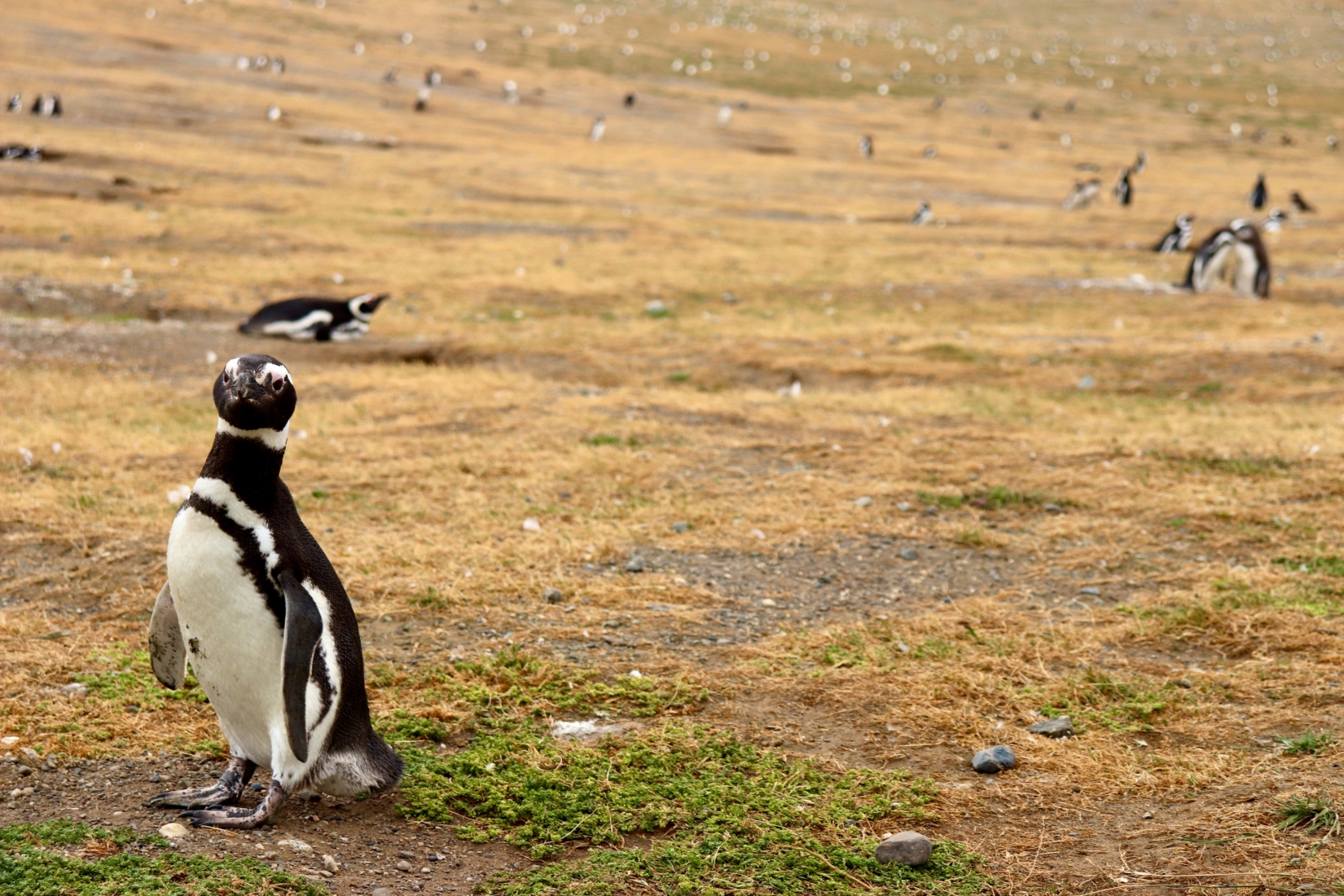
- Puerto Madryn – One part industrial and one part wild, Puerto Madryn is the entry point to the legendary Península Valdés . That’s the area you’ll want to focus on while touring Argentine Patagonia, particularly in the months between June and January, when the southern right whales pass through en masse, attracting many tourists to travel to Patagonia. Even without the cetaceans, it’s a pretty epic region dotted with pink-tinged salt pans and beset by primeval steppe.
Make sure to stop in these villages and cities for a multifaceted trip that is sure to excite.
It’s easy to see why Argentinian Patagonia can be a favorite on an outdoorsy, adventure seeker’s list of top destinations. The sights and activities are largely majestic jagged peaks and scenic hikes on the trails that weave around them. Plus, the penguin and whale spotting is not to be missed.
Plan to see these popular attractions when you go:
- Fitz Roy – Cerro Fitz Roy spikes the skies to the west of El Chaltén town, heralding arguably the most iconic mountain massif in South America, drawing in lots of tourists to Argentine Patagonia. It’s almost impossible to believe it’s real, what with pinnacle after pinnacle of granite monolith lurching straight from the edge of a gleaming glacier. Conquering the top on your Patagonia trek is a serious mountaineering undertaking. Most trekkers stick to viewpoints around the Laguna de los Tres just below (more on that later).
- Perito Moreno Glacier – Set at an opening in the Andes some 50 miles (80.5 km) to the west of El Calafate in southern Patagonia, the Perito Moreno Glacier has been wowing travelers for decades. Covering nearly 100 square miles (259 sq km) of a wide valley in the Los Glaciares National Park, it’s arguably the best place in the world to see the process of calving (when glaciers fragment into icebergs where they meet the water).
You can also hike right on top of the Perito Moreno Glacier. Choose between mini trekking options to sample crampon trekking, or go for the Big Ice adventure – a challenging hike lasting 12 hours that takes you across much more of the glacier surface. Hiking the Perito Moreno Glacier is sure to be an awe-inspiring experience for any travelers visiting Argentine Patagonia.
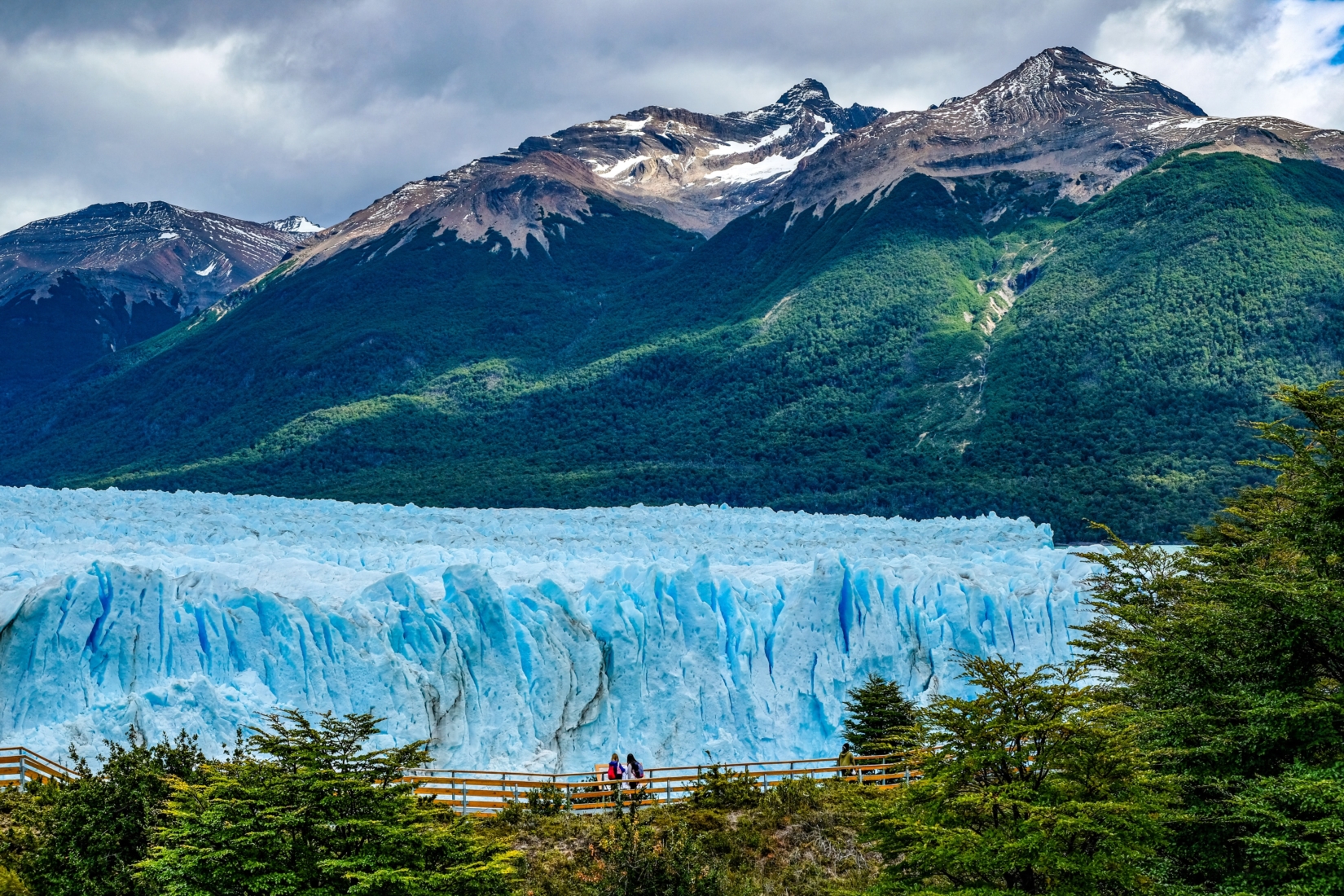
- Tierra del Fuego – Tierra del Fuego is where the end of South America fragments into the Atlantic Ocean at the tip of Patagonia. Like so many parts of this region, it’s shared between Chile and Argentina, but it’s the latter that has the main base: Ushuaia, the southernmost city in the world, that we covered above. Tierra del Fuego visitors will often start the day with a hike to the scenic Glacier Martial and then venture out by water to spot Gentoo penguins and sea lions on the Beagle Channel and beyond.
- Whale watching – Argentinian Patagonia actually has some of the finest whale watching on the continent. That’s despite the fact that there’s really only one destination that has the infrastructure and natural gifts for it. You’re looking for the duo of Puerto Madryn and the whole Península Valdés. The main species to spot are southern right whales and orcas, along with all manner of dolphins and penguins. The best time to visit Patagonia for whale watching is between June and December.
- Trekking – Last but most certainly not least, the trekking. Argentinian Patagonia can rival even the mighty Himalaya on this front. There are treks of all shapes and sizes, levels, and styles fit for anyone. We’ll take a look at the most famous Patagonia treks in just a moment but suffice to say that there are routes that let you get up close and personal with jagged mountains like the Fitz Roy and others that let you tread on colossal glaciers such as the famous Perito Moreno Glacier.
Spring and summer are generally considered the best time to travel to Patagonia if you wish to hit the trails, as many of the routes close completely due to snowfall during the other seasons.
If you’re interested in hiking Torres del Paine on the Chilean side of Patagonia, check out our 19 Things to Know Before Hiking the W Trek .
A 1,000-mile (1,069-km) string of the Andes bisects the whole of Patagonia, delineating much of the border between Chile and Argentina. But Argentina gets the eastern section of the mountains, which is generally considered to be the premier trekking part. It’s where you can tread on epic trails, such as:
- Laguna de los Tres – The Laguna de los Tres is the piece de resistance of El Chaltén, the trekking capital of the country. It begins in the town itself, then passes through woods of fire trees and barberry bushes, then emerges onto exposed slopes with a steep ascent onto a glacier-carved moraine. That’s where the glimmering waters of the Laguna de los Tres unfold, right beneath the hulking granite spires of the Fitz Roy. There’s really no better viewpoint around. Sunrise hikes in Patagonia are extra special since you see the peaks glow radiant pinks and reds in the first rays of the day.
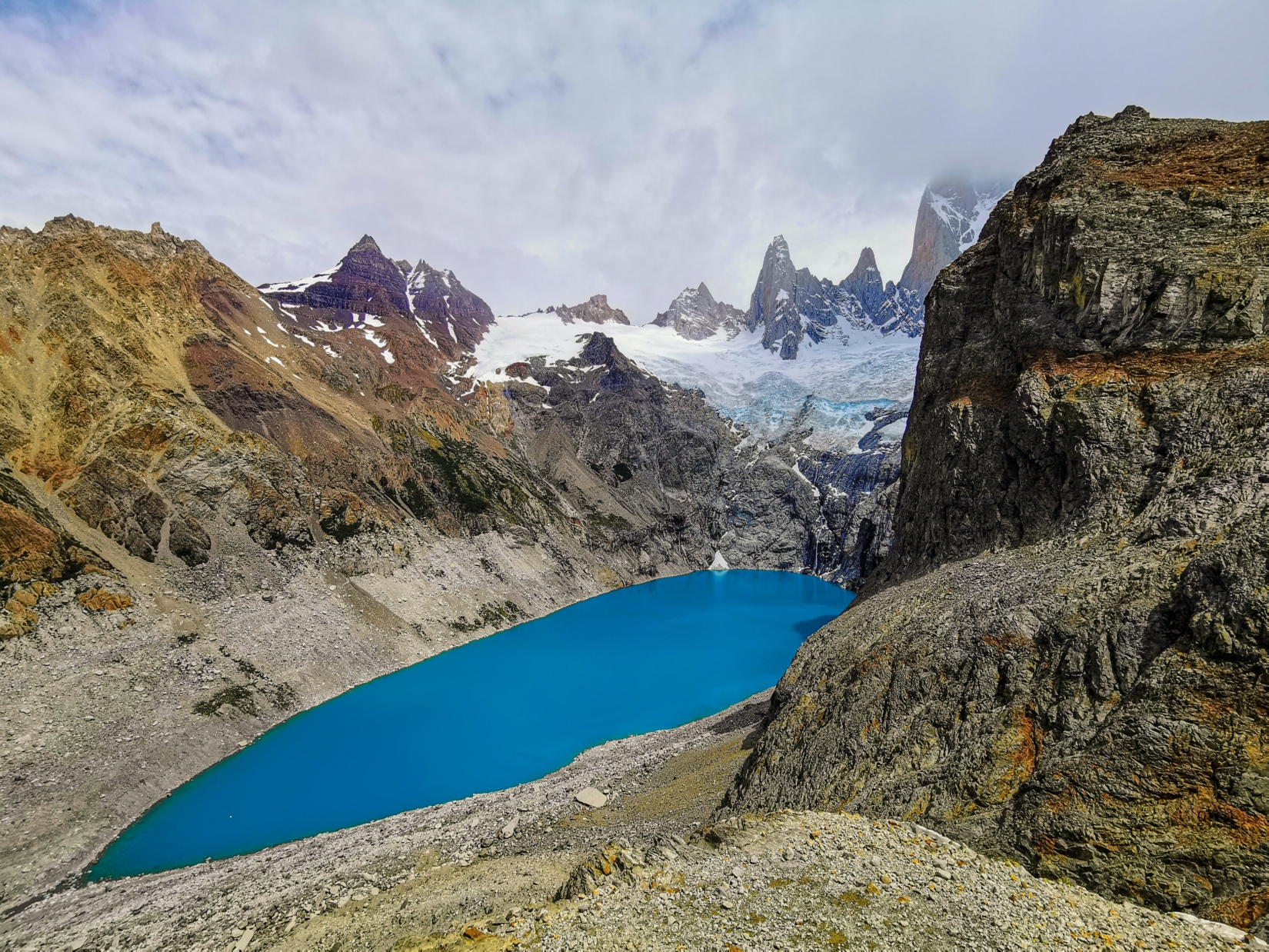
- Laguna Torre – A 9-hour hike through the valley behind the Fitz Roy massif can bring you into the domain of the Laguna Torre. It’s a needle-like stack of stone that’s considered one of the hardest climbing feats in the world. You won’t be harnessing up to do that, but the journey there offers sublime views of the Grande Glacier and an inky mountain lake framed by the summit itself. A good option is to stay in the backcountry campground – that will let you complete the hike at sunrise, when the Laguna Torre peak looks, simply, stunning.
- Big Ice – Helping you scratch a line from the bucket list, the Big Ice tour is a trek actually on top of the Perito Moreno Glacier. There are shorter options known as mini treks, but this is the true expedition for exploring the nooks and crannies of the creaking ice field as it cascades down from the heights of Cerro Pietrobelli. Days start with a hike along a tough moraine before you cross to the glacier itself to see, firsthand, pristine ice caves and crevasses cut into the surface all throughout your hike in Patagonia.
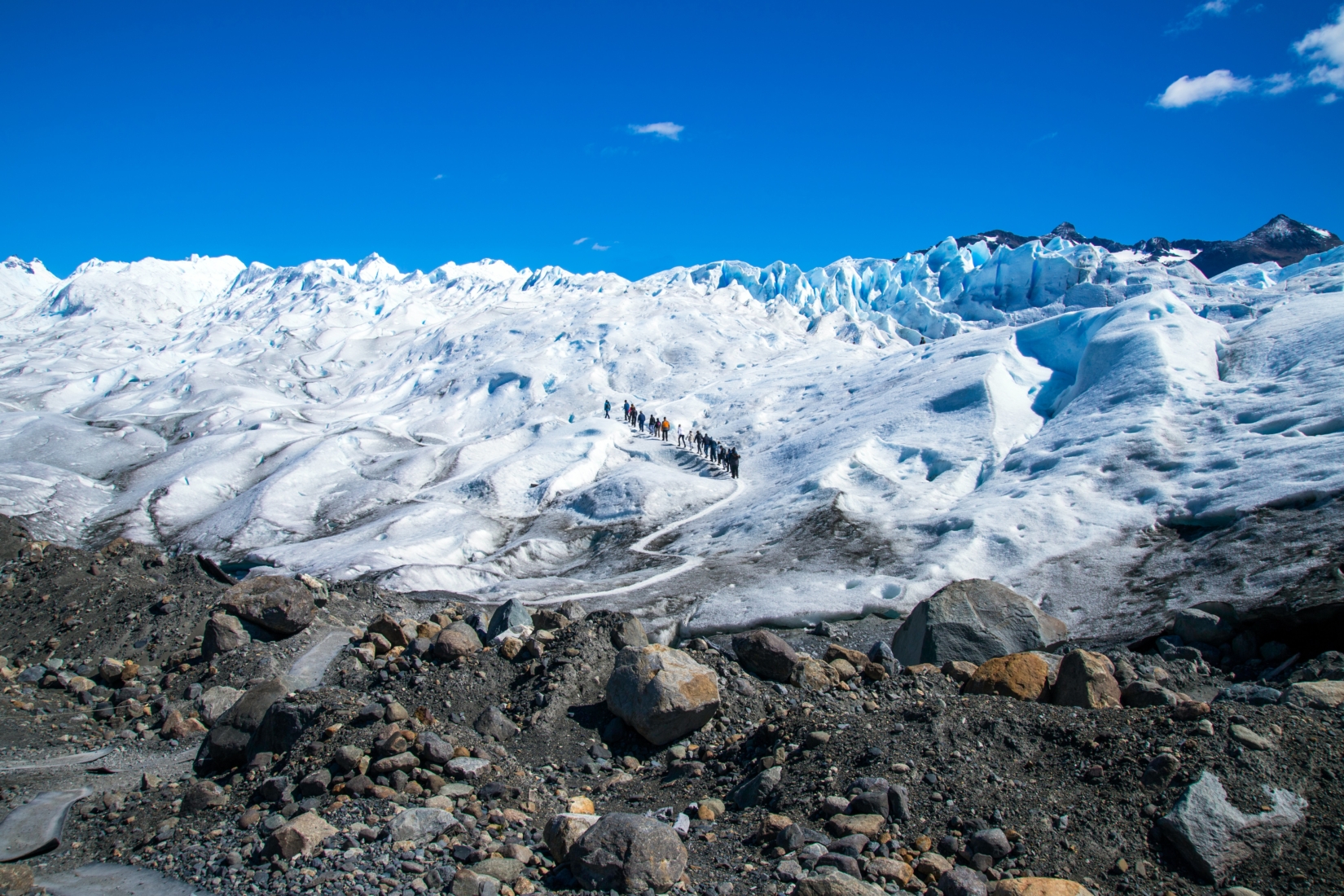
- Huemul Circuit – If you’re all about spying the vast white plains of the Southern Patagonian Ice Field, then there’s no better hike than the Huemul Circuit. It’s 4 days and 40 miles (64 km) of dramatic, high-altitude scenery in the depths of the Los Glaciares west of El Chaltén. This hike is a challenge, requiring river fording, use of a Tyrolean traverse, and 3,000-foot (91 m) ascents in a single day. Highlights along this hike in Patagonia include the Paso del Viento , a wind-blasted pass under Cerro Huemul, and sections along sky-blue Viedma Lake.
- Pliegue Tumbado – This Patagonia hike, taking you ever higher and higher from a starting point in a local visitors’ center to the Pliegue Tumbado plateau, is all about gaining a vantage point to survey El Chaltén’s unrivaled little crevice in the Andes. This hike is highly exposed and usually windy in the dominant summer westerlies. At 4,900 feet (1,494 m) up, you’ll gain a ridge that takes in the Fitz Roy to the north and glacier-draped Mount Huemul to the west.
This trip guide is just a taste of what you’ll experience on a remarkable visit to Argentine Patagonia. If you have more questions on visiting Argentinian Patagonia or need help planning your trip, let’s connect! Our knowledgeable Adventure Consultants would love to hear from you so contact us and let us show you what’s possible .
Why travel with The Explorer’s Passage?
We pride ourselves on delivering extraordinary tours based on travelers’ needs and are humbled by our guests’ testimonials . In fact, our dedication has earned us a 5-star rating on Tripadvisor , and awards by Travel+Leisure Magazine and Newsweek. Check us out and discover why so many travelers worldwide choose us . My team and I would love for you to join us in Argentine Patagonia or or any of our many other adventure trips !
Cheers, Jeff
Jeff Bonaldi Founder & CEO The Explorer’s Passage
About Jeff Bonaldi
Jeff Bonaldi is the Founder and CEO of The Explorer’s Passage, a premier adventure travel company. His mission is to provide travelers with the opportunity to transform their lives and the planet through the power of adventure.
Learn more about Jeff’s story and his company HERE .
Share This Amazing Location!
Related posts.
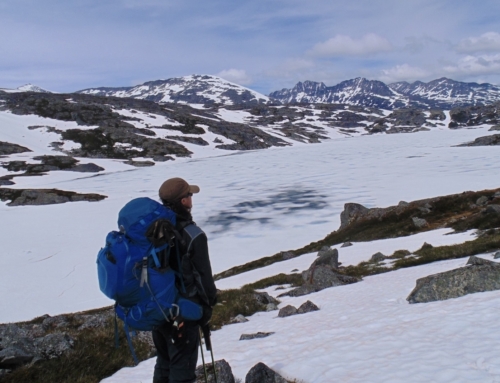
A Traveler’s Must-Read Guide to the Chilkoot Trail Hike
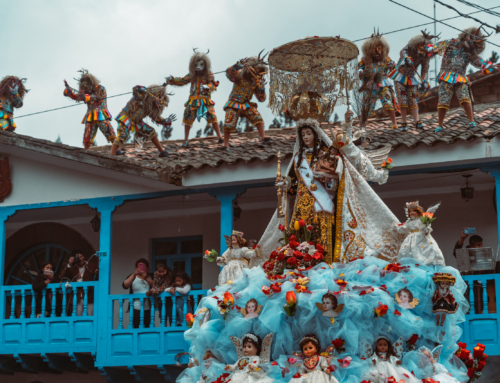
All You Need to Know About the Virgen del Carmen Festival in Peru
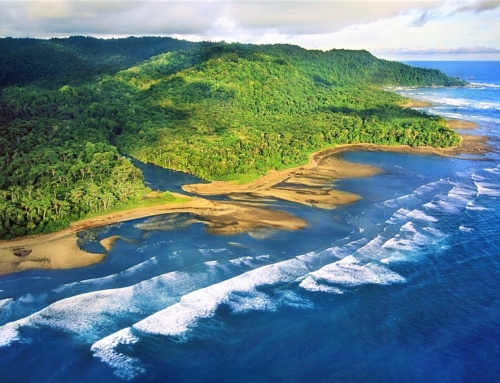
Top Attractions on the Osa Peninsula in Costa Rica

Ultimate Guanacaste Travel Guide – Explore Costa Rica’s Coastal Paradise
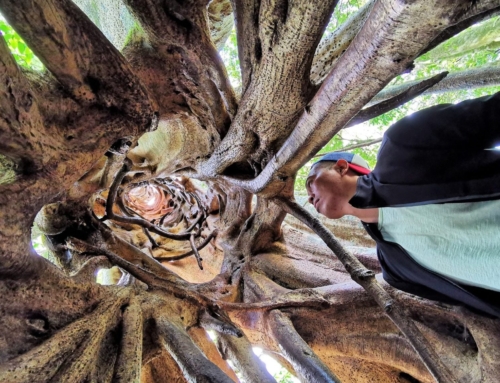
Top Things to Know Before Visiting Monteverde, Costa Rica

A Traveler’s Handbook to Manuel Antonio in Costa Rica – Everything to Know for Your Trip
- South America
- 6 Reasons Why You Should...
6 Reasons Why You Should Visit Buenos Aires at Least Once in Your Lifetime

Contributor
Buenos Aires is unlike any other city you’ll visit in your life. Why is that? Hard to say. Maybe it’s the combination of South American flair and European elegance that makes the Argentine capital stand out. From the French-influenced tango music to the Spanish-inspired “picada” appetizer plate offered at almost every restaurant in Buenos Aires, the modern-day Argentine capital offers quite a singular cultural experience. And if that’s not already enough to convince you to come, here are six more reasons to visit.
It’s crazy, in a good way.
Buenos Aires is not for the faint-hearted. This is not just a reference to the city’s mind-boggling public transit system, which overwhelms most newcomers due to the sheer number of buses and variety of routes.
It’s deeper than that. People are intense here; life is intense here. Taxi drivers will pepper you with existential questions. Fruit-and-vegetable vendors will do a psychological profile of you, dropping seemingly-random questions about your life if you start shopping there regularly. Speaking of psychology, pretty much everyone sees a shrink . Even crazier, people still prefer to read real, physical books and sit in the parks, where they often sit and stare at nothing.

Then there’s the lifestyle. Most Argentines get by on little sleep, relying on mate (yes, it’s caffeinated) to power them through their many hobbies – as in, oh, it’s almost 11pm, time to go play soccer with my old high school buddies! Not that 11pm is considered all that late here, which is just more of the crazy.
In fact, Argentines talk about how Buenos Aires tends to make people histérico , or hysterical, a word that lacks the laughing connotation it denotes in English. Why is this? It may have to do with the fact that political and economic security is relatively new to Argentina . So the system, such as it is, is not really trusted. On a day-to-day level, this means that just walking around the city you’re likely to see things that will make you gasp or laugh – because when there’s a problem, Argentines tend to either put up with it (as in, we’re seriously doing this, guys?), or come up with some kind of (often bemusing) temporary solution.
Basically, you come here and it’ll make you crazy — in a good way.

It’s incredibly creative
You can feel it as soon as you set foot in the city; the creativity in Buenos Aires is palpable. This may or may not have to do with attempts to keep capitalist materialism at bay – you won’t find a lot of international chains here, nor is advertising all that savvy, maybe because people don’t have as much spending money anyway. It may or may not have to do with the way people choose to live here, favoring time with family and friends over killing themselves for job promotions. It may or may not have to do with the fact that any kind of creativity is encouraged here, no matter how incomplete, how “bad” (by professional standards) it may be, how raw, how weird or how different. If people want to put on a show, they rent out one of the city’s many small theaters, and they put on a show. It’s that simple. This may be why Buenos Aires has the best theater scene in the region. Overall, the art scene is remarkably vibrant — if in doubt, check this out.

Become a Culture Tripper!
Sign up to our newsletter to save up to $1,200 on our unique trips..
See privacy policy .

It’s generous
The amount of free things you can do in Buenos Aires is astonishing. The city even has a “greeter” program, where people will show you around the city from a native’s point of view for free. Go to any city park and you’re likely to see people gathering for yoga or tai-chi classes, all likely offered free. Then there’s music, played live in so many restaurants, plazas and bars either free or a la gorra , which is Spanish for passing around a hat for donations. Want to take a class, or learn how to do something? Chances are you’ll be able to find something a la gorra , such as the hugely popular MUEVE dance program . It’s also socially acceptable much of the time to do an exchange, offering a skill you have for someone to teach or make you something.
It’s charming

This place knows how to have a good time
There’s lots of fun to be had in Buenos Aires, not least of which happens at night. Explore the city’s secret bars, check out the vibe in one of the city’s many bustling cultural centers, go to a closed-door restaurant, take a tango class – you name it, Buenos Aires probably has it, and if it doesn’t, Argentines will invent something on the spot that’s just as exciting. People party until dawn here all the time, so come visit and join the fun.
Caring culture
Buenos Aires is not one of those cities in which, in order to survive, you have to forget you’re human. If you run into trouble, people will notice and do something about it. They really care here. Many will go out of their way to help you out, be it helping you find your way somewhere, or giving you suggestions for places to go and people to meet – little things. If, for example, you get on a city bus, only to realise you don’t have enough money on your transit card, you can almost guarantee a kindly stranger will step forward and cover it for you. And they are unlikely to accept cash for their kindness. That’s because they believe in karma here: they’ll do something kind and not expect you to do anything in return, trusting that it’ll come back to them somewhere along the line, if not from you, from someone else. In short, the humanity here is what makes Buenos Aires a true joy, both to live in and to visit.
Culture Trip Summer Sale
Save up to $1,200 on our unique small-group trips! Limited spots.

- Post ID: 1273087
- Sponsored? No
- View Payload
The best time to go to Argentina

Jun 5, 2024 • 5 min read

Choose the best time for your visit to Argentina with this seasonal guide © R.M. Nunes / Getty Images
The eighth-largest country in the world and one of the most geographically diverse in South America, Argentina harbors many delights.
A visit here means stopping in electric metropolises, seeing unforgettable mountain lakes and neverending deserts, spending time in wetlands and plateaus, wandering through beaches and forests, and – let’s not forget – trips to some of the most renowned wineries in the world.
To make the most of your visit, be aware that seasons will deeply impact what you’ll be able to see and do. Want to hike up to an Andean glacier? Relax by the coast?
Kayak a wetland in search of unforgettable birds? See a fútbol match or take a tango class? Some of these experiences will depend on the time of year. Here’s our guide to when (and where) to get your fill of beautiful Argentina.

December to February is best for hiking in the South and partying in the North
The summer months of December to February are the absolute high-point of domestic and global tourism in Argentina. The heat and humidity in the capital city of Buenos Aires pushes residents towards the Atlantic Coast’s beach towns like Mar del Plata and Pinamar.
That means the city’s cultural life can be a little slower, with fewer theater performances and live music events, while restaurants and other establishments may be closed. You might also find a little more breathing room on the street, in museums like Museo de Arte Latinoamericano de Buenos Aires (MALBA), Corrientes Ave, and other ciry landmarks that tend to attract crowds.
Temperatures in the North soar to over 40ºC (104ºF); In Iguazú Falls and Iberá National Park , the heat and humidity get almost unbearable, while the drier Northwestern provinces of Salta and Jujuy get very hot during the day, but are very cool at night.
Patagonia’s weather is mild this time of year, and ideal for hiking, camping, and taking in the sights. You should expect higher prices for flights and accommodations, especially in major draws like the glorious Lake District town of Bariloche and the global trekking landmark of El Chaltén, not to mention some crowding at the main attractions.
Ushuaia , in the province of Tierra del Fuego , is at its warmest, with temperatures regularly in the double digits (above 10ºC/50ºF); the summer is the best time to visit if hiking and sightseeing are what you’re looking for.
There are also notable celebrations across the country. In the city of Gualeguaychú there’s a week-long Carnaval celebration in February. In Córdoba , two legendary festivals for rock and folk music take over the small town of Cosquín: Cosquín Rock and Cosquín Folk Festival .

March to June and September to November are best for enjoying Buenos Aires
Spring (September to December) and fall (March to June) are ideal times to enjoy Buenos Aires. The weather is mild, and the city is lively but is crucially not yet filled to the brim with tourists.
Since it’s the low season, lodging and travel costs will be low and availability high, and since locals are in town, you can expect restaurants to be busy (book in advance, especially for places in demand like recent Michelin-starred parrilla Don Julio and the remarkable Anchoita , which sources ingredients from its in-house farm and collaborates with local suppliers, as well as offering one of the best wine lists in the country.
November is the month of the jacaranda blossoms, when they fill Buenos Aires streets with their bright purple flowers. And in April, you can find the celebrated BAFICI (Buenos Aires Film Festival) screening some of the best in Argentine and world cinema.
Meanwhile, from late February to early April, Mendoza ’s Vendimia – the grape harvest festival – offers an unbeatable opportunity to visit the region’s remarkable wineries. Beware: demand for lodgings balloons during that period with a significant increase in costs, so book well in advance to secure your spot.
Temperatures in Mendoza are fairly mild between mid-September and June, so a trip around its countless vineyards is well worth your while even outside of Vendimia season.
Meanwhile, Patagonia, Tierra del Fuego and the south of Argentina still have relatively mild weather (around 20ºC/68ºF), especially in March and November, in case you want to visit in a slightly lower occupancy season.
Iguazú and Iberá, to the north, are slightly less warm and rainy with temperatures lingering around the mid-20ºCs to low-30ºCs (68 to 86ºF), not to mention less crowded, and this is a good time to visit them.
Likewise, the Nortwestern provinces of Salta and Jujuy have milder temperature swings and are more calm, providing an ideal window to take advantage of the beautiful sights of the Hornocal and the historic town of Cachí.

July and August are best for skiing in the South and visiting Iguazú and Iberá to the North
Though winters in Buenos Aires are not terribly harsh – snow is extremely rare – the shorter days and cold temperatures (around 5 to 15ºC/41 to 59ºF) make the city feel rather inhospitable.
Instead, consider taking advantage of the peak skiing season and hitting up Cerro Castor ski resort in Tierra del Fuego, Cerro Catedral near Bariloche, and Las Leñas in Mendoza for some world-class fun on the slopes. The highest demand period is the last three weeks of July, generally winter vacation season in Argentine schools, which will raise costs at all ski resorts in Argentina.
And there's plenty of fun off the slopes too. In Ushuaia, there's the Fiesta de la noche más larga on June 21, when the city parties in celebration of the longest night of the year, while Bariloche’s Rapa Nui chocolate store stocks its iconic Franui (chocolate-covered raspberries) and a vast selection of prize-winning chocolates.
If cold weather isn’t your vibe, you might also take a trip northwards: Iguazú and the Iberá National Park – home to unforgettable waterfalls and unique wildlife – are always warm and welcoming. Jujuy and Salta, while noticeably colder during the night, remain fairly mild in the daytime, and the attractions will be just as accessible as in spring and fall.
This article was first published Jul 15, 2021 and updated Jun 5, 2024.
Explore related stories

Aug 23, 2024 • 7 min read
There’s nothing like hitting the road in an RV or camper van – these are the best destinations around the world for an RV road trip.

Aug 14, 2024 • 5 min read

Jun 29, 2024 • 7 min read

Jun 21, 2024 • 8 min read
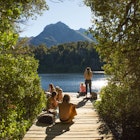
Jun 17, 2024 • 6 min read

Jun 10, 2024 • 8 min read

May 22, 2024 • 8 min read

Mar 14, 2024 • 8 min read

Jan 17, 2024 • 8 min read

Dec 15, 2023 • 7 min read
- Work with me
- Privacy policy

- Years in review
- United Kingdom
- Bosnia & Herzegovina
- North Macedonia
- Philippines
- South Korea
- South Africa
- Central America
- South America
- New Zealand
- Solo Travel
- Budget travel
- Travel tips
- Travel itineraries
- Hidden gems
- Bucket list
- Travel resources
- Digital nomadism
- Blogging tips
- Start a travel blog
Solo travel , South America
Argentina solo travel guide – tips & places.
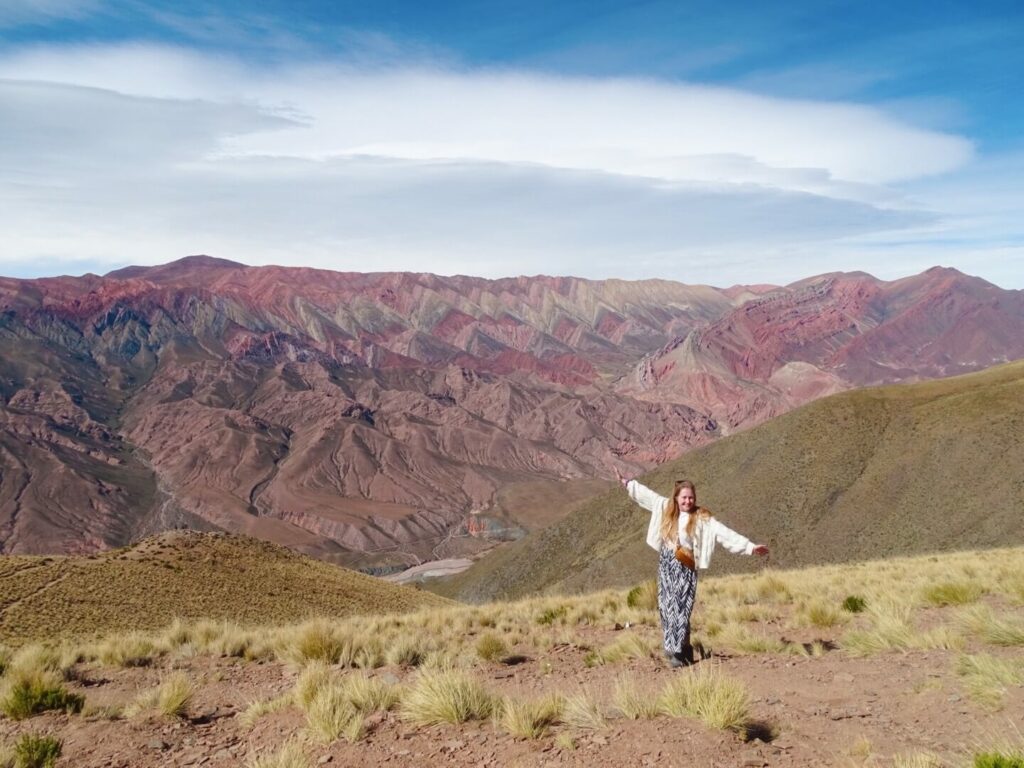
Table of Contents
This post may contain affiliate links to things like tours, hotels, Amazon associates and products. These help me earn a small commission at no additional charge to you.
Rich and diverse Argentina is a solo travel dream with cosmopolitan cities like Buenos Aires (BA) where you can let your hair down with new friends, alongside secluded mountain towns to enjoy alone time in nature and feel reflective. I had high hopes for Argentina because I’d heard good things. My recent solo trip did not disappoint!
Patagonia and BA are the most famous and visited destinations that I had a clearer mental picture of. Although they were fantastic, I almost preferred visiting the places I’d never seen photos of before such as the colourful mountains in northern Jujuy province.

Is Argentina good for solo travel?
Yes! I’d class it as an easy solo female travel destination because there are plenty of hostels and it’s easy and affordable to get around without a car. It’s also an easy destination to meet other solo travellers thanks to the hostels and wide variety of tours and group activities from wine trips in Mendoza, bar crawls in BA and shared excursions to the natural attractions of Jujuy and Salta provinces.
Is it safe to travel solo to Argentina?
Yes, Argentina is one of the safest countries in South America for solo female travel . In particular, the small towns in Patagonia and those in the north felt almost idyllically safe. Locals told me you can walk around Salta city, even at night. Like many countries, the capital is where you’ll want to exercise the most caution, especially due to theft and phone snatching. The main area of BA that’s unsafe but popular with tourists is La Boca and you can take a free walking tour with a local for safety. Palermo is the safest area to stay; San Telmo is a close second. The chance of experiencing crime in BA isn’t higher than in other cities like Paris or London where phone snatching also occurs. It’s like any big city.

It’s worth noting that, economically, it’s a tough time for Argentinians. When I visited in 2024, they’d seen hyperinflation on their currency in the last year without wages rising to match it. Understandably, financial hardship can result in an uptick in crime. Just be mindful and keep your valuables close; you should be fine.
See all my solo female travel safety tips
Is Argentina suitable for first-time solo travellers?
Generally, I wouldn’t point first time solo travellers towards anywhere in Latin America over places like Southeast Asia and Europe with better safety ratings and more people speaking English. (Tip, see my guides to solo female travel in Southeast Asia and Europe to plan a trip). However, given that it’s safer than solo travel in Chile and Brazil (anyone will tell you it’s safer than Brazil and I will tell you I felt a lot safer than in Santiago and Valparaiso), I’d say it’s doable if you’re keen to visit. Brush up on your Spanish and stay in hostels to have a community around you.

Good things about solo travel in Argentina
- Accessible without hiring a car – I even managed to get around Jujuy (a popular road trip destination) by local bus
- Developed tourist infrastructure – there are hostels even in small towns. BA and Mendoza have group activities from wine tours to tango classes (I use GetYourGuide to find these).
- Relatively affordable – although it’s more expensive since the currency crash, I found Argentina cheaper than Chile, Brazil, Uruguay, Belize and parts of Mexico .
Bad things about solo travel in Argentina
- Basic hostels – in my opinion, the hostels in South America got nuthin’ on Southeast Asia. Although they do the job, they’re basic and rarely have privacy curtains, individual chargers etc.
- Some safety concerns in BA – for example, theft isn’t uncommon, especially in La Boca neighbourhood
- Issues getting cash following the financial crash – when I visited in 2024, you needed to bring USD/Euro or send yourself money via the Western Union app (more about this later). Not a solo travel-specific problem but generally inconvenient.
Best time to visit Argentina
The weather changes a LOT so it’s worth giving some thought. The summer (December-February) can be scorching: up to 40°C. A downside of summer is the mosquito season that comes with it. On the flip side, winter (June-August) temperatures drop to 0°C even outside of Patagonia with rain to boot. The shoulder seasons of autumn (late March to June) and spring (September to November) can be ideal. Locals often say October is the perfect month. It also varies by region . The north (Salta, Jujuy, Iguazu) is typically warmer so can be visited early in spring and well into autumn, however tourist season in chilly Patagonia is wrapping up by the end of April.

My experience: I visited Patagonia in late April and had great luck with the weather given that the season was nearly over. The region was beautiful, covered in red leaves but not too cold (but I can’t promise this is always the case!). Then, my luck ended as I explored the rest of the country in May. After a warm start in the north, the weather became cold and grey (often around 5°C) and miserable… Even for a Brit! So, I’d recommend late spring or early autumn rather than going any closer to winter. But, to be honest, luck plays a big part especially as the climate becomes increasingly unpredictable.
How to get around Argentina
Bus: these connect cities across Argentina although sometimes the journeys are LONG for example 18 hours from Salta to Mendoza, and the same from BA to Iguazu. The journey from Mendoza to BA is around 14 hours. In the Jujuy and Salta region, you can take local buses bought on the Platform10 website or at the station. Tip – the buses in Argentina don’t stop (but have bathrooms) so bring enough food and water for the journey. Despite this inconvenience, they’re a comfortable and safe option for solo female travel in Argentina. Flight: although it’s not an environmentally friendly option, these are often the same price as long, overnight buses. The main operators are Aerolineas, JetSmart and FlyBondi. Intercity transport: BA has the Metro and local buses; tickets cost less than 50 cents. In other cities, take local buses. Be sure to buy a SUBE card which can be used in BA, Mendoza and Bariloche.
Where to start
The vast majority of travellers fly into BA however, if you’re visiting other countries in South America, entry and exit points include:
- Patagonia by bus from Chile – destinations like Bariloche, El Calafate and Ushuaia are connected by bus from Chile’s Pucon, Puerto Natales and Puntas Arenas.
- Salta from Chile’s Atacama Dessert – this takes 12 hours by bus and costs around $60 USD (bring food and water as it doesn’t stop).
- Puerto Iguazu from the town across the Brazilian border, Foz de Iguazu. The bus costs around $3.
Best places to travel solo in Argentina
Compared to the fact I only visited 5 places in Chile (Santiago, Valparaiso, 2 stops in Patagonia and the Atacama Desert), I made 9 stops in Argentina! I spent a month and could have happily stayed even longer. There’s so much to see and do! Here’s where I went…
Buenos Aires

Where to begin with this vibrant, exciting city? After 48 hours here, I’d already proclaimed it one of my favourite cities in the world (although granted this is a long list now featuring Seoul, Cape Town, Hanoi, London, Lisbon/Porto, Mexico City and more). BA is a city with a grand, historic side and green spaces (including a peaceful Japanese garden ) and quirky neighbourhoods full of street art. Today, old family-run restaurants sit beside speciality coffee shops and international eats. It’s a place of contrast and character!
Things to do in Buenos Aires
- Tick a tango show off your bucket list – there are plenty of dinner shows including a meal or snacks and wine depending on the package.
- Take a street art tour – I enjoyed the Palermo one with BA Free Tours and I’ve also spotted one in lesser-visited areas with BA Street Art Tours .
- Spend a Sunday at San Telmo Antiques Market and head inside the food market (open 7 days) to try choripan and more.
- Explore historic La Boca neighbourhood known for tango and football. It may be an Insta dream with its Caminito colourful houses, but you should be careful snapping pics as it’s not the safest area. Solo travellers can take a free walking tour with a local guide for safety.
- Cruise through Tigre (a 45-minute drive from the centre) on a river cruise – best done in the summer. I got together with two other solo travellers at the hostel to split an Uber and have some company for the boat ride.
- Explore grand Recoleta & Retiro areas and go inside Recoleta Cemetery full of decadent tombs with captivating stories (I did the Recoleta free tour and the $10 Cemetery tour )
- Marvel at El Ateneo Grand Splendid voted one of the world’s most beautiful bookstores.
- Tour grand buildings like Teatro Colon (and catch a show if you can) and take a guided tour of Palacio Barolo based on Dante’s Divine Comedy .

Where to stay in Buenos Aires: I recommend the Palermo area for an easy intro because it’s very calm and safe. However, San Telmo was my favourite: it’s busier with historic character and bustling markets. Hostels: I stayed at America del Sur in San Telmo (go with the Viajero or Milhouse for more of a party option) and PH Palermo in, you guessed it, Palermo! Both were around $12 a night in off season.
Best food in Buenos Aires

- Pizzeria Guerrin – a historic restaurant serving pizza and empanadas since 1932. Rather than sit for a whole pizza, solo travellers can grab slices standing with the locals. I sampled the fugazza (white pizza with onions), anchovy pizza, and the especial with ham, olives and sweet peppers.
- Pizza Angelin – featured on Somebody Feel Phil on Netflix, the quality of the pizza makes up for the run-down aesthetics.
- La Choripaneria – this busy stand in San Telmo market is worth visiting on a weekday to avoid the crazy queues! There are so many combinations of choripan (chorizo in bread) from the classic with chimichurri to house specials with blue cheese.
- Coffee: Obredor de Panes – a beautiful, quirky cafe with speciality coffee and great cakes in San Telmo.
- Coffee: Confiteria Ideal – this grand cafe is worth visiting as a treat to admire the gold-laden decor and decadent ceiling. The cakes are out of this world!
- Heladeria Cadore – the best ice cream in the city. Get the pistachio or, if you have a sweet tooth, dulce de leche.
- Meat: some people will tell you to visit the famous Don Julio but locals will tell you it’s overpriced and overrated. I ate at La Brigada Parilla as a midrange option in San Telmo but there are endless options.
- Vegetarian food: I tried Naturaleza Sabia in San Telmo and Puerta in Palermo, both are fantastic!
Salta & Jujuy

The states of Salta and Jujuy are connected by Salta city, one of the largest in Northern Argentina with a population of 600,000. It’s a pleasant city – and ideal for solo travel in Argentina thanks to its impressive safety ranking – with interesting sights. However, most travellers don’t stay more than 2 days gearing up for road trips north (Jujuy province) and south to Cachi and Cafayate (Salta province).
Things to do in Salta city
- Take the free walking tour – led by an informative local at 6pm daily from the pink cathedral in the main plaza.
- Go up San Bernado’s Hill by foot or teleferico for panoramic views.
- See some of the world’s oldest mummies at the Museum of High Altitude.
- Enjoy live Peña , a type of folklore music played over dinner.
Where to stay in Salta: I recommend Trotamundos hostel with beds from $11. The staff are so friendly and serve shared dinners (including Argentinian asada) most nights for less than $4. In autumn, the hostel was chilly but that won’t be the case around the year.
So, how to explore the Jujuy and Salta region?

Do you HAVE to do a road trip? I was stressed at first because people in the Salta hostels were getting into groups to hire cars and commit to trips of up to 10 days: a long time to spend with strangers! I feel this could range from dangerous (are they safe drivers?) to annoying if you don’t like them and want to leave. Sure, you can see and do more with a car and fit multiple attractions into one day. But I got by fine with public buses (booked on Platform10 or at stations), using the towns of Humahuaca and Tilcara as launching points. The only downside was visiting Salta 3 times to connect between Jujuy, Cafayate and Cachi.
My Jujuy & Salta public transport itinerary
- Humahuaca – 1 night (4.5 hours from Salta by bus): incl. a half-day trip to the Hornocal (14 Colour Mountain) by minibus tour booked at the central square. I stayed at cosy Hurma Hostel for $10 a night.
- Tilcara – 2 nights: incl. a day trip to Purmamarca town (home to the 7 Colour Mountain), 1 hour away by bus. Other things to do in Tilcara are the Garganta Del Diablo hike and the short mirador hike. Eat amazing pasta at Bienmesabe and stay at Antigua for $15 incl. buffet breakfast.
- Cafayate – 2 nights (after 1 night in Salta connecting from Jujuy): this relaxed town is surrounded by wineries and even a goat’s cheese farm , a pleasant hour’s walk from town. I paid $5 for a guided tour and platter of wine and cheese! Amalaya is another popular winery. Stay at Cierto Lindo (I liked the glamping pod) and eat at Casa de las Empanadas .
- Cachi day trip (after another 1 night connection in Salta): this colonial town is undeniably quaint but the sweeping scenery of the journey is the real highlight. From misty mountain passes to flat plains peppered with towering cacti, it’s incredible!

Note – a day tour to Cafayate from Salta is only $5 more than the public bus and includes wine tasting and scenic stops. I took the tour one way and stayed overnight in Cafayate to explore more. However, the tour company saved some of the scenic stops for the return journey meaning I missed them while taking the bus back to Salta.

Day tours from Salta
If you don’t want to do a multi-day trip (by car or bus), you can see many of the top attractions in the region during day trips from Salta . These allow you to relax while someone else does the work, plus it’s a good way to meet others during solo travel in Argentina. Browse day tours from Salta .

Next, I took a flight from Salta (as it was the same price as the overnight bus) to…
If you’re a fan of wine, no Argentina solo travel itinerary is complete without a stop in the world-famous wine land of Mendoza. The city is far larger than the other wine town of Cafayate, plus there’s beautiful scenery surrounding it.

The two main wine regions are Maipu and Lujan de Cuyo. Maipu : I took a guided tour via minibus from Mendoza city, visiting three wineries and an olive oil factory for delicious oil-infused snacks including hummus. Although I was thrilled to find my favourite orange wine at one winery, the speciality of the region is Malbec. Lujan de Cuyo : I caught a local bus to the Baccus Bikes shop for a self-guided tour of wineries ($10 a day). I expected more of a countryside cycle but it was often along busy roads without a bike lane. So, keep your wits about you and maybe get together with other travellers at your hostel because it’s more fun as a group. Don’t miss Bodega Gieco (an affordable, family-run venue).
Where to stay in Mendoza: I liked Lagares Hostel because the owners were so friendly. It was great value at $11 a night including a hearty breakfast of eggs, croissants and coffee. For a party hostel, stay at Gorilla .
Iguazu Falls

On the border with Brazil and Paraguay, the tropical climate of this region feels worlds away from southern Argentina, yet it’s ‘only’ an 18-hour bus or 1-hour flight from BA. The majestic Iguazu Falls deserve their New 7Wonder status with thundering cascades topped with glimmering rainbows. What I didn’t expect was all the wildlife : in one day I saw butterflies, snakes, tarantulas, an agouti and pesky coatis who steal your lunch if you let them! The best place to stay is Puerto de Iguazu town (a short bus ride from the airport). I liked Tucan Hostel : a friendly base for solo female travellers. From the station, jump on a local bus to Iguazú National Park. You can spend the whole day walking different routes and taking a speed boat to the falls (expect to get soaked!). One day and two nights is enough unless you want to take your time and visit the park on two consecutive days (there’s a discount on the second day’s entry if so). If your next stop is Brazil like mine, catch a bus to Foz do Iguaçu for just $3 (but prepare for it to leave you at customs where you’ll wait an hour for the next one). It’s worth seeing the Falls from this side, too.
Read next: is solo travel in Brazil a good idea?

Patagonia feels like the other side of the world from Iguazu… and Mendoza and Jujuy, for that matter. Such is the diversity of Argentina! I’ll keep this brief because I already wrote a guide to solo travel in Patagonia that you can check out. Places to visit during this leg of your solo Argentina travels include:
- El Calafate – although the town is commercial and charmless, it’s worth visiting for nearby Perito Moreno Glacier. Splash out on glacier hiking or take a bus/taxi (the latter is cheaper if you can split it with a group in the hostel) to the boardwalks. The best hostel is America del Sur .
- El Chalten – a small town with big hiking opportunities! The Tres Lagunas hike to the base of Mount Fitzroy is the real bucketlister but there are plenty of routes of varying difficulty. Don’t stay longer than necessary because everything’s expensive including accommodation that isn’t great.
- Bariloche – further north in the Lake District and known for hikes, nature and chocolate shops! Take road trips (or guided tours) along Ruta 40 and the Seven Scenic Lakes route.
- Ushuaia – the end of the world is the launching point for Antarctica but, if you don’t have $6-10 grand to spare, visit for the Fin del Mundo train and hikes.
You’ll want to stretch the pursestrings for Patagonia because it’s far more expensive than the rest of the country. Expect to pay double for everything from accommodation to food. It’s worth it! How to get to Patagonia: the best option is to fly from Buenos Aires to Bariloche for the Lake District, El Calafate for the mid-south, and Ushuaia for the end of the world.
1 month+ solo travel itinerary for Argentina
My route started in Patagonia as I crossed the border from Puerto Natales in Chile. Then, I crossed back, travelled through Chile and reentered via the Atacama – Salta bus. This won’t be everyone’s itinerary but you can easily rejig if starting in Buenos Aires by taking return flights to Patagonia.
- 2 nights El Calafate
- 3 nights El Chalten
- Then 3 weeks in Chile, reentering Argentina from the Atacama Desert
- 2 nights Salta
- 1 night Humahuaca
- 2 nights Tilcara (inc Purmamarca day trip)
- 1 night Salta
- 2 nights Cafayate
- 2 nights Salta (Cachi day trip in middle)
- 6 nights Mendoza (including a couple of rest days)
- 10 nights Buenos Aires
- 2 nights Iguazu.
With less time you could cut back on Buenos Aires especially if you’re not a city person. If you’re pushed for time in the north, stay in Salta and take day trips rather than staying overnight in Tilcara, Cafayate etc. Travelling by car also saves time as you don’t have to connect in Salta between trips. Depending how much of Patagonia you want to see, add extra time for Bariloche and Ushuaia.
Money and currency in Argentina
Given the financial crash in recent years, money is a tricky topic. In this post, I’ve not listed things in Argentine pesos because prices change so quickly. During my trip (2024), when I’d go to restaurants and see photos of old menus on Google, I’d notice dishes costing 3,000 pesos were priced at 300 pesos just a year ago. It’s chaos, especially for locals whose wages haven’t hyperinflated like the prices. Here are a few average prices (in USD) as of 2024:
- Hostel dorms from $10 inc breakfast
- Apartments on Airbnb – $30+ a night
- Internal flights – from $40
- Cross-country bus – $10-50.
- Intercity bus – 50 cents.
- Speciality coffee – $3
- Meal in a restaurant – $5+.
How to get cash? Withdrawing from ATMs isn’t recommended because you can only get a maximum of $20 with an $8 fee. Instead, bring Euros or USD (crisp $100 bills are best) for exchange. Alternatively, download the Western Union app. Send money from your bank account and withdraw it from any branch (bring your passport).
Thanks for reading!
More solo travel guides:
- How to take photos while travelling solo
- 10 advantages to solo travel
- Pros and cons of travelling alone
- Solo travel vs group tours
- Tips for solo travel anxiety
Solo travel in the Americas:
- Solo travel to New York City
- Is Cuba safe for solo travel?
- Mexico solo female travel guide
- Travelling alone to Mexico City
- Solo female travel in Belize
Guides to solo travel in Asia :
- Solo female travel in Bali
- Solo Vietnam travel
- Solo Malaysia travel
- Thailand female travel
- Solo female travel in India
- Solo travel in Taiwan
- Solo female travel in South Korea
Guides to solo travel in Europe :
- Solo female travel in Europe
- The perfect solo trip to Lisbon
- Solo travel in Portugal
- Is solo travel in Albania safe?
- Solo female travel in Croatia
- Solo female travel in Italy
- Is it safe to travel to Romania solo?
TRUSTED RESOURCES FOR ARGENTINA Getting around by air – the quickest (and often cheapest) way to travel between Argentinian cities is by flight. I use Skyscanner to find the best-value flights, using the ‘search by month’ tool to find the cheapest dates. You can also use the ‘to anywhere’ feature if you’re flexible on where you’re going. Getting around by bus (environmental option) – buses are comfy and regular. I use Busbud to find the best prices. Car hires – use Rentalcars.com to compare car rentals (and all around the world) For hotels, use Booking.com – they also have self-catering apartments. You can filter by review score and price to find the best-rated budget places. For hostels, I use Hostelworld.com . Browse tours and activities on GetYourGuide . I always check Viator in case they have a better price. To stay connected, download an e-SIM with Airalo and connect immediately. Browse their packages for Argentina . Need travel insurance ? I use True Traveller (for UK & Europe residents) since it’s affordable but covers everything you’d need including various activities, valuables and pre-existing conditions. Unlike some companies, they insure you if you’re already travelling / don’t yet have your flight home booked. Get a quote . For travel insurance for other nationalities, I recommend Hey Mundo and for long-term digital nomad travellers, I suggest Safety Wing . Check out my resources page for more travel discounts and tips!
Rose is a solo traveller from the UK who has been on the road since 2015. She wants to show other women that solo travel isn't scary and doesn't have to be expensive! Rose has lived in Mexico, Canada and all over Asia, seeking out food, bubble tea and street art wherever she goes!
Leave a Reply Cancel reply
Your email address will not be published. Required fields are marked *
You can see how this popup was set up in our step-by-step guide: https://wppopupmaker.com/guides/auto-opening-announcement-popups/
Experience the Magic of the Annular Solar Eclipse in Argentine Patagonia
Discover the wild patagonia and its unique landscapes while witnessing this astronomical phenomenon..
Argentine Patagonia is preparing for an unprecedented astronomical event: an annular solar eclipse on the afternoon of October 2. This unique phenomenon, where the Moon aligns between the Sun and the Earth, creating a "ring of fire" in the sky, can be fully appreciated from various points in the province of Santa Cruz, Argentina, also known for its imposing glaciers located further south in the province .
Why Does a Solar Eclipse Occur?
According to NASA, an annular solar eclipse occurs when the Moon is at its farthest point from Earth, known as the Apogee. In this case, the Moon appears smaller than the Sun and does not completely cover it, creating a visual effect of a bright ring around the Moon, commonly referred to as a "ring of fire."
This happens because both the Earth and the Moon have elliptical orbits. When the Moon is at Apogee, its apparent size is not enough to cover the entire Sun during the eclipse, leaving the solar edge visible.
Patagonia National Park: The Perfect Setting
Patagonia National Park stands out as one of the most privileged places to enjoy this natural spectacle. Located in the province of Santa Cruz, in the southernmost part of Argentina, this national park covers a vast expanse of territory that includes Patagonian steppes, crystal-clear lakes, imposing mountains, and Andean-Patagonian forests. Its extensive areas, diverse landscapes, and clear skies make it an ideal destination for amateur astronomers and nature lovers.
For travelers who wish to visit, there are several options:
- Flight: The quickest way to get there is by flying from Buenos Aires to Comodoro Rivadavia, El Calafate, or Río Gallegos, the closest cities to the park. From there, you can rent vehicles or book tours to access the park.
- Car: For more adventurous travelers, it's possible to drive along National Route 40, one of Argentina's most iconic routes, which crosses Patagonia and offers stunning landscapes.
Once in the region, access to the park can be made from different points, such as Los Antiguos or Perito Moreno. From these urban centers, you can hire local guides who offer tours and trekking through the various trails of the park.
Highlighted Features of Patagonia National Park:
- Diverse Landscapes: Lakes, rivers, mountains, steppes, forests, and glaciers form a mosaic of landscapes that captivate any visitor.
- Flora and Fauna: The park is home to a wide variety of animal species, such as guanacos, foxes, condors, and huemules, as well as a rich flora adapted to extreme climatic conditions.
- Activities: Hiking, trekking, horseback riding, birdwatching, photography, and astro-tourism are some of the activities that can be enjoyed in the park.
- Clear Skies: Low light and atmospheric pollution make the park an ideal place for astronomical observation.
What to Visit in Patagonia National Park During the Solar Eclipse?
In addition to witnessing the eclipse, you can immerse yourself in a wide range of activities prepared by the province that will make your trip an unforgettable experience:
When Was the Last Solar Eclipse in Argentina?
The most recent annular solar eclipse crossed the American continent on October 14, 2023, when the Moon positioned itself between the Sun and the Earth, creating a stunning celestial spectacle.
This phenomenon was visible in different places, from the United States and Mexico to several countries in Central and South America, providing a unique experience to those who had the opportunity to witness it.
Tips to Enjoy the Annular Solar Eclipse:
- Book in Advance: Demand for accommodation during these days will be high, so make sure to book your spot in advance.
- Use Eye Protection: It is essential to use special eclipse glasses to protect your eyes.
- Check the Weather Forecast: Verify the weather conditions before your trip to ensure clear skies.
Argentine Patagonia invites you to live a unique experience, combining adventure, nature, and astronomy. Don't miss the opportunity to witness the annular solar eclipse and discover the hidden treasures of this region.
Related news

IMAGES
VIDEO
COMMENTS
And don't worry if your Spanish isn't up to scratch. Argentines are patient and friendly and will do their best to help you communicate. 15. The people. Last but not least, one of the top reasons you should visit Argentina is for the warm hospitality you'll receive from the locals.
There are plenty of reasons to travel to Argentina.As the third most populous country in South America and the largest Spanish-speaking country in the world, Argentina has distinct and beautiful geography, interesting history and culture, thriving nightlife, and unique local cuisine.It's no wonder why Argentina attracts thousands of visitors every year.
16 Great Reasons To Visit Argentina. 1. Your Money Is Worth Double In Argentina But Not For much Longer! Argentina has been facing high inflation for many years, with rates reaching over 100% in recent years. This lead to the many Argentinians swapping their pesos for dollars.
Argentina. South America. Beautiful, defiant and intense, Argentina seduces with its streetside tango, wafting grills, love of fútbol, gaucho culture and the mighty Andes. It's a formidable cocktail of wanderlust. Best Time to Visit. Best Places to Visit. Attractions.
The Best Argentina Travel Guide: What You Must Know Before Visiting Argentina Argentina Travel Tips: Quick Facts. Let's start this post with a selection of essential information you need to know before visiting Argentina. AREA - 2,780,400 km2 (1,073,500 sq mi) POPULATION - 46,057,866 (2024 estimate)
4. Mar del Plata, the Atlantic Coast. Best place for a summer escape. Though Argentina is not famous for its beaches, Mar del Plata is Argentina's favorite summer holiday destination, its central hotel-casino a symbol of Argentina's modernization in the 1930s and '40s.
Argentina has three varying climate systems based on location: the north region, the central region, and the southern region. The warmer months for all regions fall between November and March, as the weather is sunny and dry. However, the level of warmth will depend upon where you are in the country. The north can see highs of 30°C, but the ...
Varied landscapes in northern Argentina. Argentina's north offers a wholly different travel experience, ranging from the arid and striking landscapes of Salta and Jujuy, near Bolivia, to the country's very own New Wonder of the World, 269ft (82m) high, 1.6mi (2.7km) wide Iguazu Falls, in a lush rainforest along the Brazilian border.
According to a recent article from the Argentina travel blog Sol Salute, budget-conscious travelers can expect to spend an average of $60-$80 per day. This budget range allows for flexibility in accommodation choices, including a mix of dorms and private rooms, and ensures coverage of food, transport, and additional expenses. 7.
Argentina Facts To Know BeforeYou Go. Where Is Argentina?Argentina is located in South America. It is in the Southern Hemisphere, so the seasons in Argentina are the opposite of those in the Northern Hemisphere.; Size Of Argentina Argentina is the eighth largest country in the world with an area of 2,780,400 square kilometers. It is the second largest country in South America.
So, if you want my advice when it comes to Argentina travel plans, less is definitely more. In Buenos Aires alone, you can easily spend 4-5 days, and that's without 2-3 days in Iguazu Falls, 4-6 days for the Salta province, not to mention Bariloche, Mendoza and Patagonia… and that's just the main highlights!
15. Salta. Ending this list of the best places to visit in Argentina on a high with a hidden gem - Salta. This capital city of the province of the same name is absolutely beautiful and best of all because it's off the beaten tourist path, it's uncrowded, peaceful, and offers an authentic Argentinian experience!
Why Visit Argentina. Argentina, The Land of Silver, is a country known for its dances, good food, and magnificent nature. The second-largest country in South America stretches among various climates and diverse landscapes. Although it may not be as popular among tourists as its neighbours Brazil and Peru, the home of the tango and dulce de ...
4. And drink world-beating wine. Mendoza is Argentina's main wine region, set picturesquely at the foot of the Andes. Malbec grapes made the area internationally renowned but shiraz and cabernet ...
1 Their Love For Football (Soccer) Argentina has been in the news recently for winning the FIFA World Cup 2022. Walk along the streets of Buenos Aires, and see Messi jerseys being sold everywhere. The nation's love, admiration, and pride for their national football (soccer) team is loud and clear, and it's a fun sense of community to be a part ...
Argentina's culture and customs are some of the most distinctive in the Americas. But there are plenty of idiosyncrasies to getting by in this Southern Cone South American nation. From the caprices of the currency through to late-night dining, and from cowboy culture to trip planning, here are 10 things to know before traveling to Argentina . 1.
Industry in Argentina is mainly represented by the manufacturing of food, beverages, tobacco products, motor vehicles, and auto parts. Textiles, leather, refinery products, and chemical products are also common. At the same time, agriculture in Argentina represents approximately 7% of all employment.
Days 3 & 4: Iguazu Falls. Day 3: Catch an early morning flight to Iguazu Falls. Visit the Argentina side of the national park, walking the various trails, looking out from La Garganta del Diablo, and taking a boat tour. Day 4: Head over to the Brazilian side of the falls for panoramic views and more exploring.
6. It will surprise you. It will! Argentina is full of surprises. You might find yourself doing some pretty unusual things, or simply taking in a degree of natural beauty so astounding it will leave you with memories for a lifetime. When all's said and done, that's way better than a postcard.
A Strong Cafe Culture. You shouldn't visit Buenos Aires without dropping into one of its old-school cafes, embodiments of the city's status as a literary hub. Bar El Federal, an institution in San ...
Some of the most enticing places of the lot are located on Argentina's side of the border, too. Here are some of our top picks for cities and towns to visit: El Chaltén - They call El Chaltén the "National Capital of Trekking in Argentina." The town, a ramshackle and surprising mix of backpacker hostels and sleek mountain spas, sits ...
Caring culture. Buenos Aires is not one of those cities in which, in order to survive, you have to forget you're human. If you run into trouble, people will notice and do something about it. They really care here. Many will go out of their way to help you out, be it helping you find your way somewhere, or giving you suggestions for places to ...
March to June and September to November are best for enjoying Buenos Aires. Spring (September to December) and fall (March to June) are ideal times to enjoy Buenos Aires. The weather is mild, and the city is lively but is crucially not yet filled to the brim with tourists. Since it's the low season, lodging and travel costs will be low and ...
Tip - the buses in Argentina don't stop (but have bathrooms) so bring enough food and water for the journey. Despite this inconvenience, they're a comfortable and safe option for solo female travel in Argentina. Flight: although it's not an environmentally friendly option, these are often the same price as long, overnight buses. The ...
Argentine Patagonia is preparing for an unprecedented astronomical event: an annular solar eclipse on the afternoon of October 2. This unique phenomenon, where the Moon aligns between the Sun and the Earth, creating a "ring of fire" in the sky, can be fully appreciated from various points in the province of Santa Cruz, Argentina, also known for its imposing glaciers located further south in ...
Former President Donald Trump's campaign stirred new controversy during a visit to Arlington National Cemetery that was intended to draw attention to the chaotic US withdrawal from Afghanistan ...
In travel news this week: an accidental megadeal on first-class tickets, the world's best-connected airport and why now is a good time to plan a trip to Europe. Plus a bit of relief for those of ...
A woman who feels "cheated" by Northern Ireland's health system has said she has no option but to travel abroad for treatment. Monica Fee, from County Londonderry, has waited three years for ...